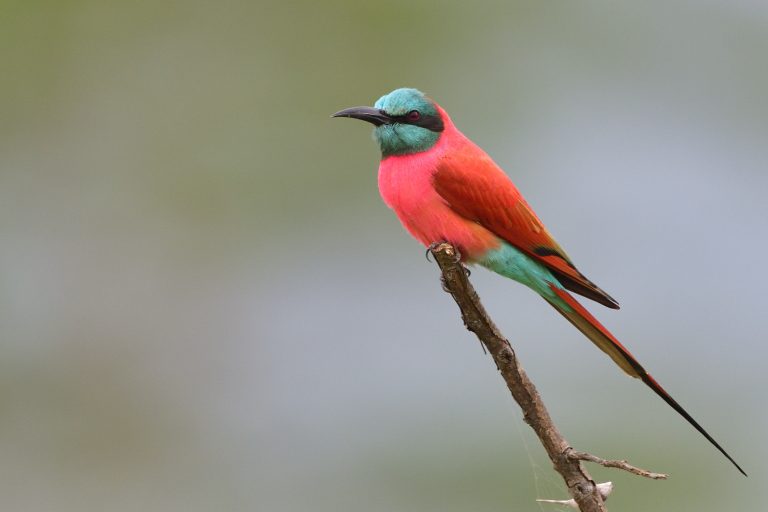
I was asked by Professor Jasson John at the University in Dar es Salaam to go to Mkomazi National Park and photograph as many birds as possible. A group of his students had been there recently mapping birds in the park and my job was to document them in the form of pictures. Dr. John organised for me to get a free pass to the park and I brought 3 young birders from Attraction Birding Club here in Arusha with me: Abdul, Jonas and James. We also had access to rangers in the park since we were not allowed to camp outside of the public campsite near the entrance without having an armed ranger with us.
Day 1, Thursday February 13: Kiligolf, via Kilimanjaro International airport to Mkomazi NP
Selvine needed to go back to Kenya for a week, so we dropped her at the airport before we continued to Same. We had a stop in Same for lunch and stocking up on necessary supplies. At the gate, we met with one of the students from the University + Kevin the local ecologist and the Manager of the park. We were incredible well received and experienced no red tape at all. After formalities were in place, we continued to the campsite and quickly set up camp. After camp was set up we hurried to go birding. We took a drive towards the Northern part of the park and started picking up species: Straw-tailed Whydah, African Harrier-Hawk, Spotted Flycatcher, Grey-headed Silverbill, D´Arnaud´s Barbet, Black-necked Weaver, Sombre Greenbul, Grey Wren-Warbler, Purple Grenadier, Northern Red-billed Hornbill, Black-throated Barbet, A juvenile African Cuckoo, Dark-capped Bulbul, Northern White-crowned Shrike, Red-bellied Parrot, Crested Francolin, White-bellied Go-away-bird, Long-tailed Paradise Whydah, Yellow-necked Spurfowl, Von der Decken´s Hornbill, White-browed Coucal, Black-headed Oriole, Yellow-spotted Bush-Sparrow (Petronia), Long-tailed Fiscal, Lilac-breasted Roller, Hildebrandt´s Starling, White-browed Scrub Robin, White-headed Buffalo-Weaver, Vitelline Masked Weaver, Marabou Stork, Little Bee-eater, Red-billed Buffalo-Weaver, Ashy Cisticola, European Bee-eater, Pangani Longclaw and Pearl-spotted Owlet. We managed to find 45 species on our first afternoon. We returned to camp and cooked dinner. I had brought some nice fillet of beef from home, but only I appreciated the fillet. We soon retired to our tents and had a peaceful night.
Some pictures from Day 1:
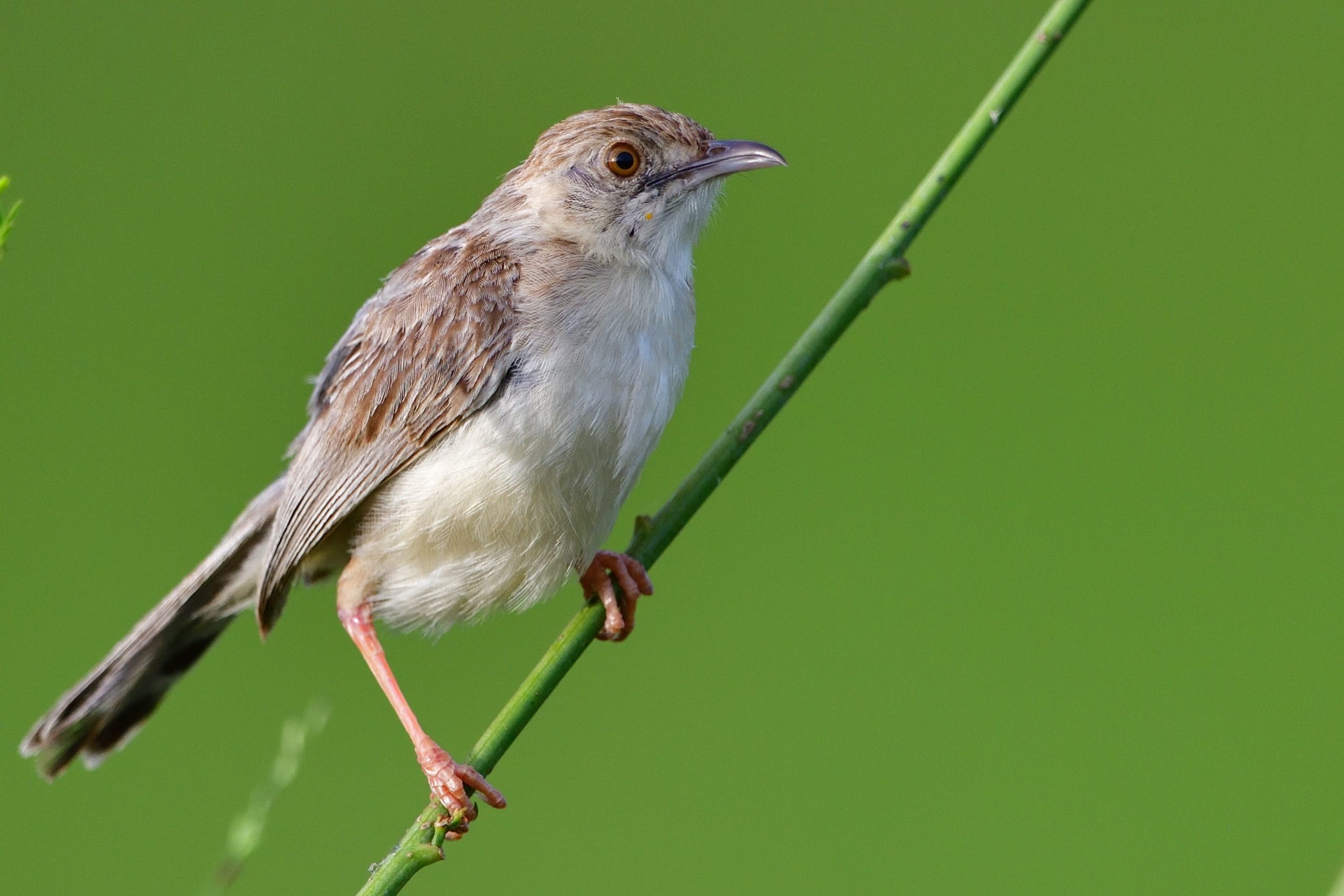
Ashy Cisticola, Cisticola cinereolus – Endemic to NE Africa
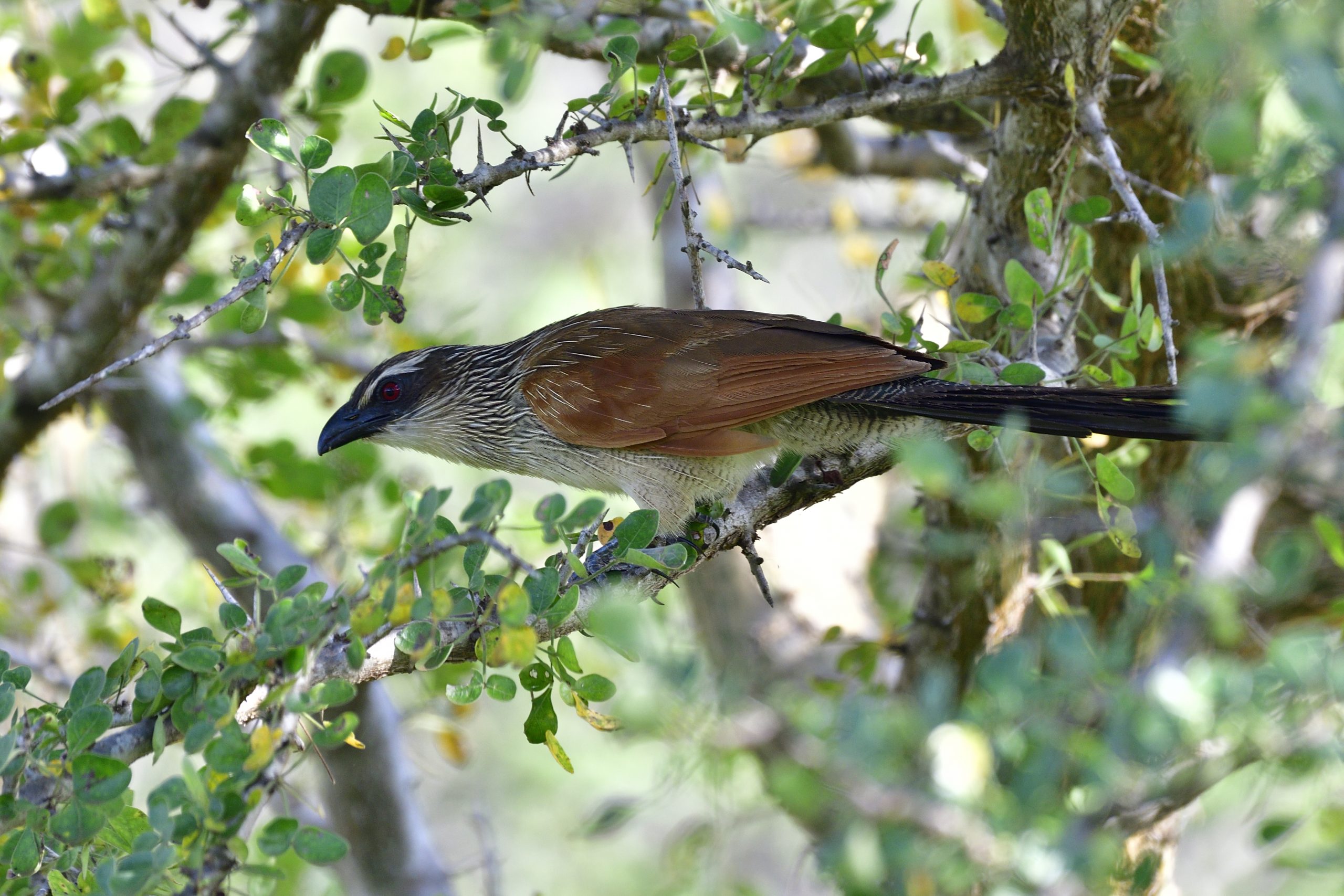
White-browed Coucal, Centropus superciliosus
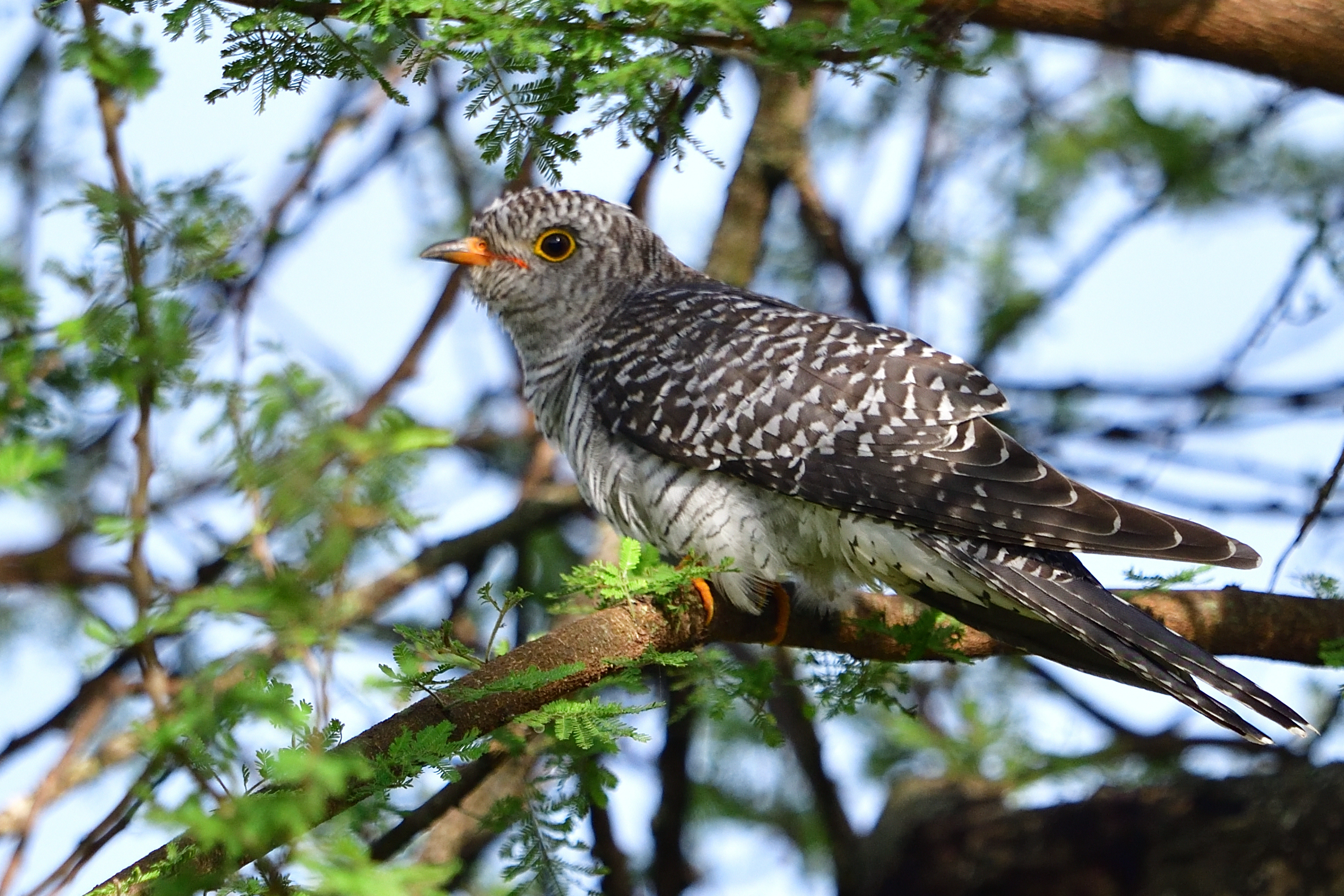
African Cuckoo (Juvenile), Cuculus gularis
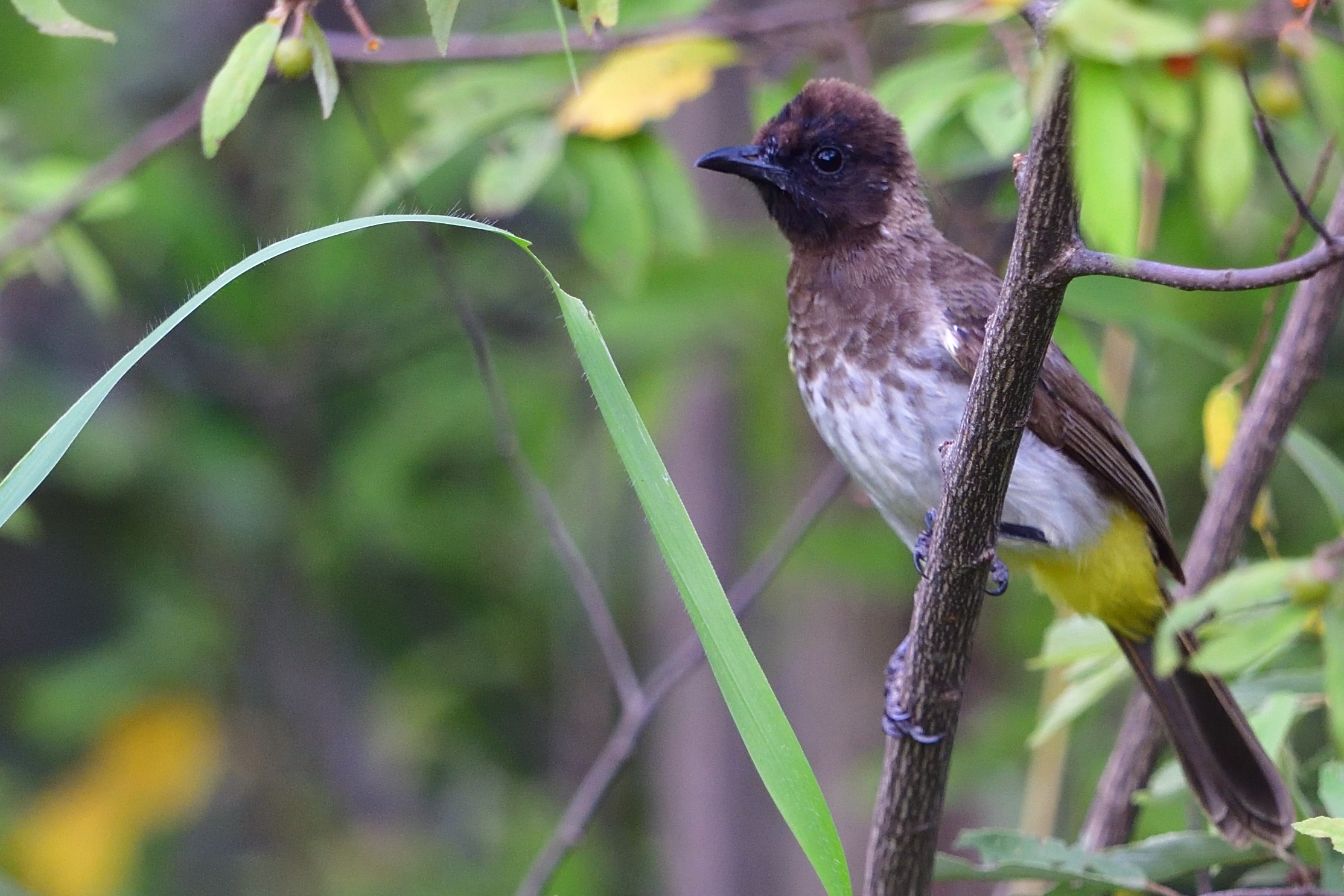
Dark-capped Bulbul, Pycnonotus tricolor
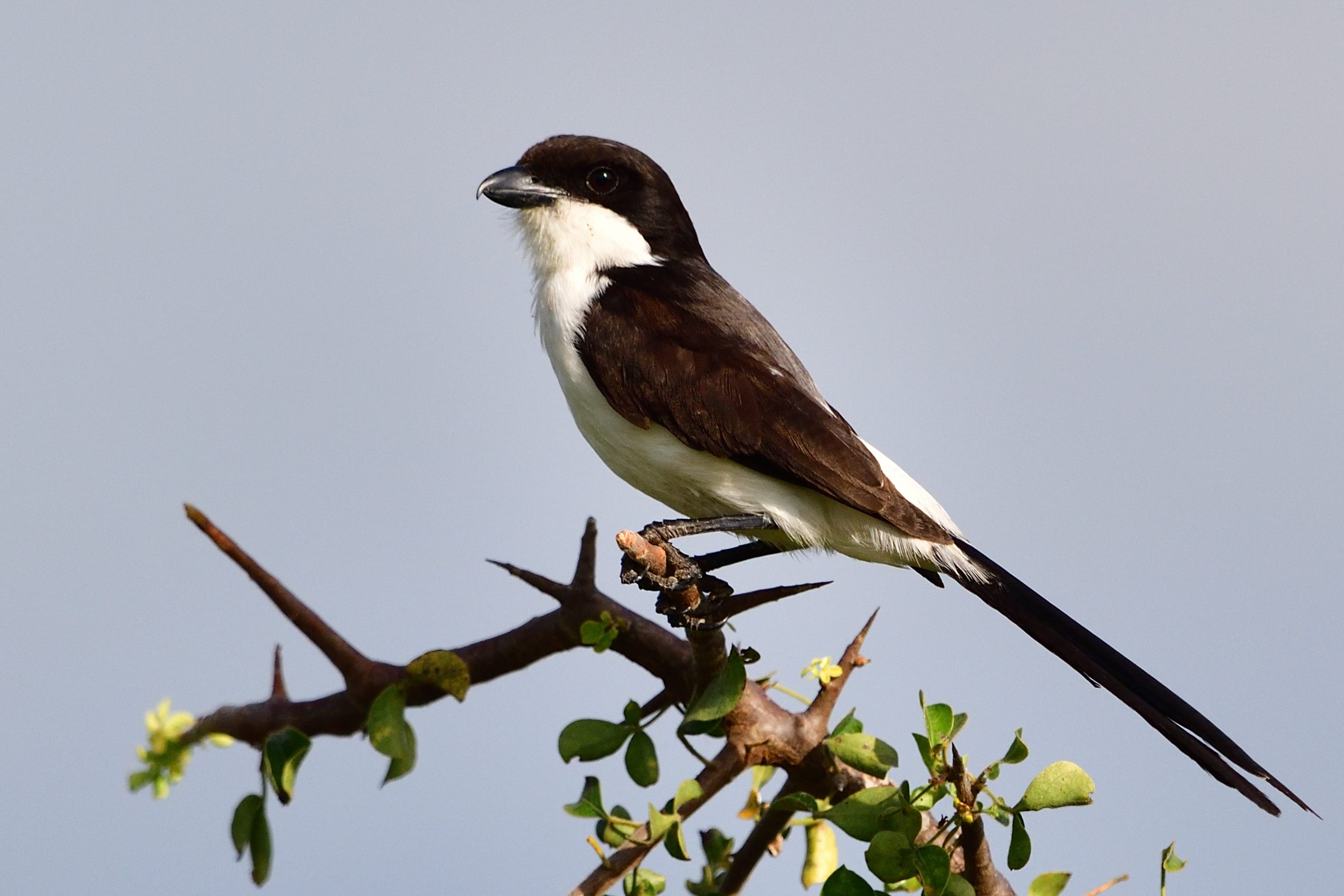
Long-tailed Fiscal, Lanius cabanisi – Endemic to NE Africa
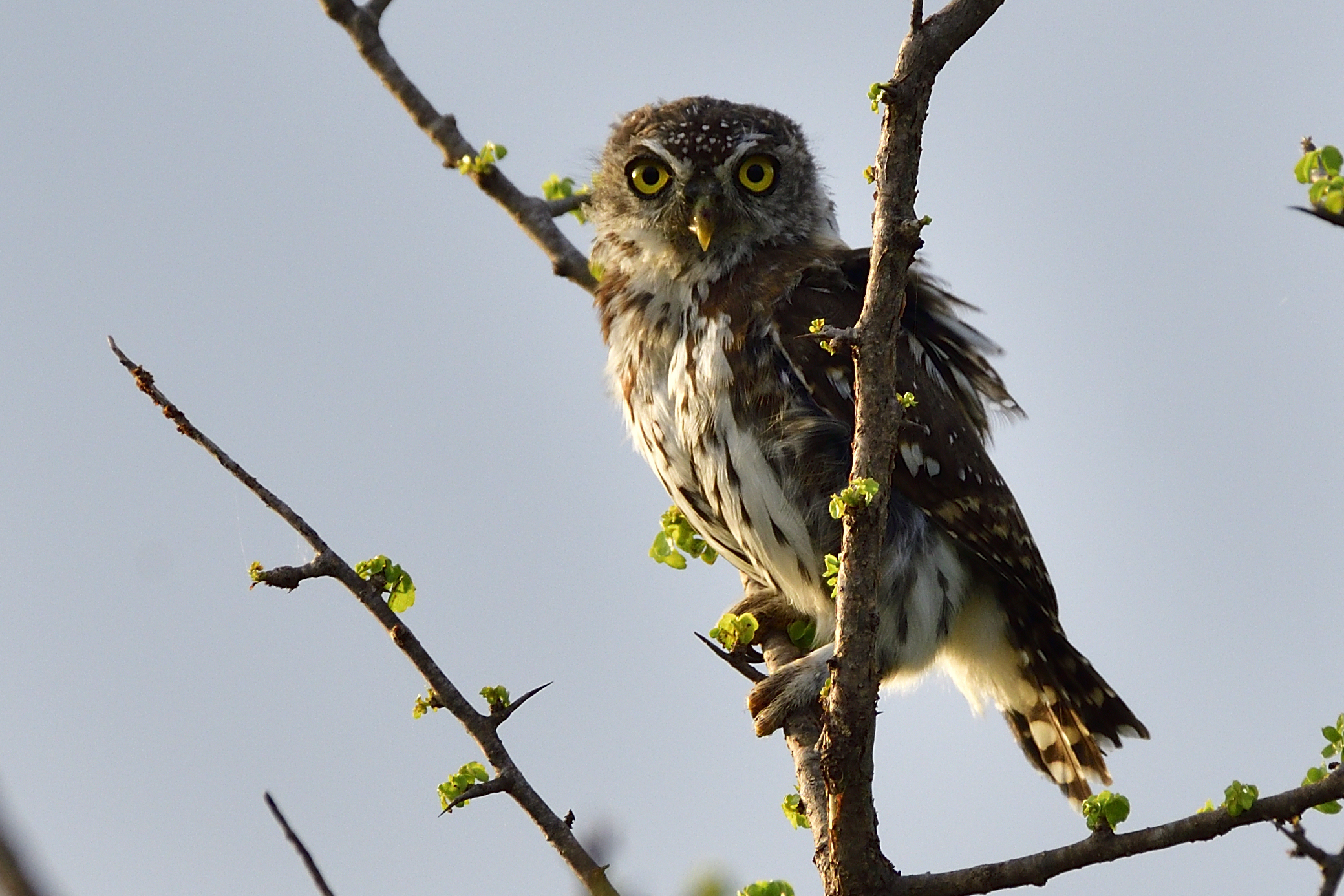
Pearl-spotted Owlet, Galucidium perlatum
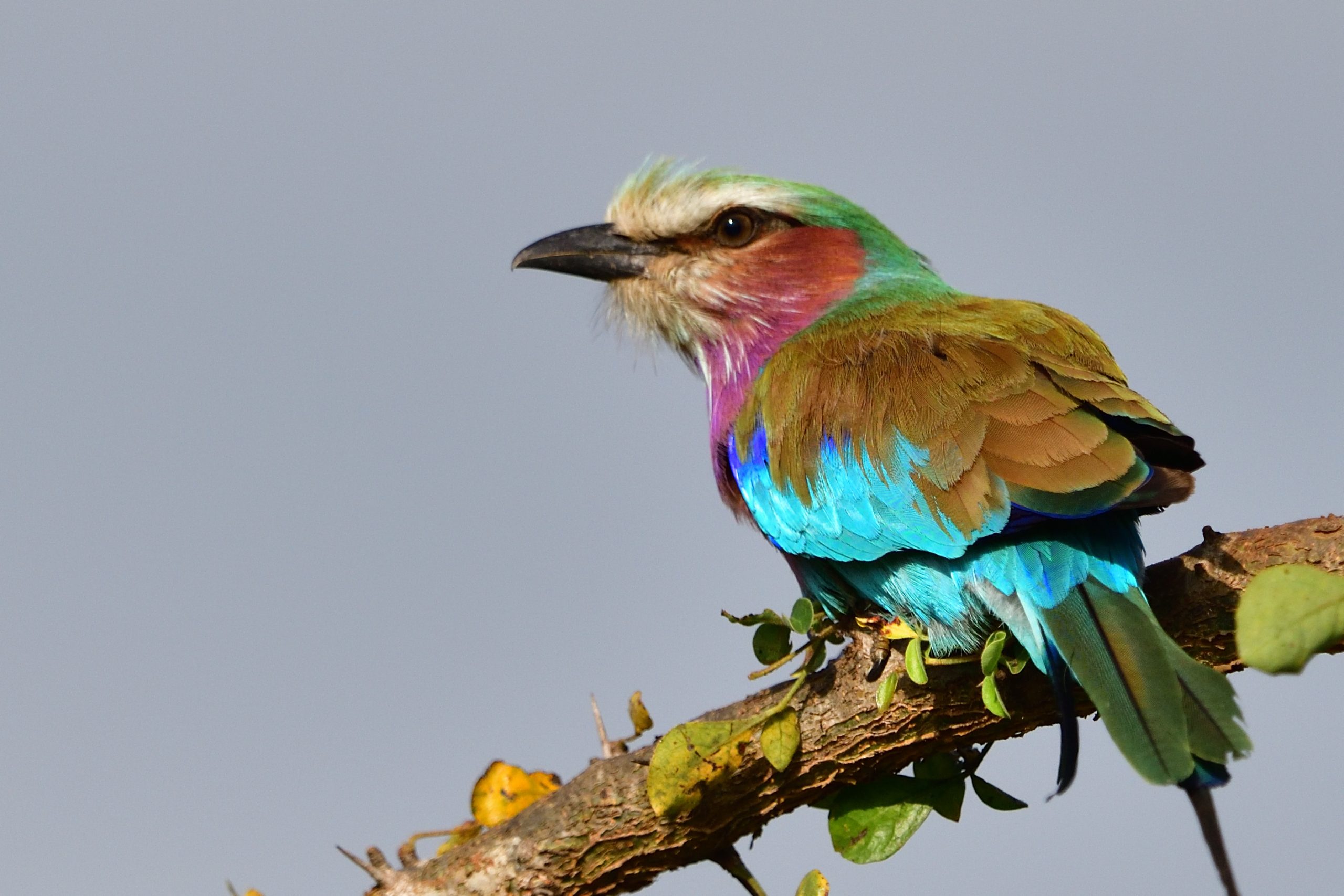
Lilac-breasted Roller, Coracias caudatus
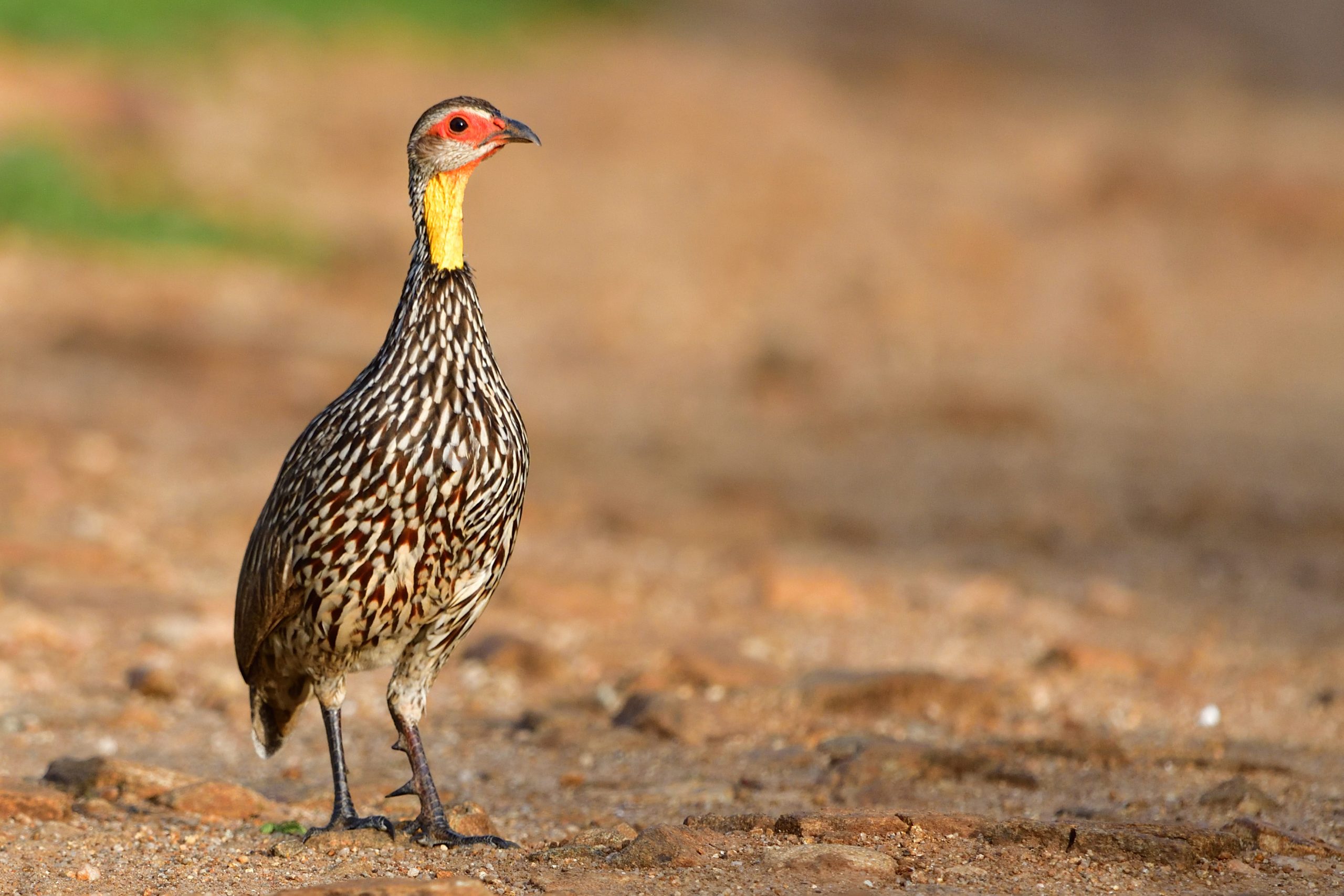
Yellow-necked Spurfowl, Pternistis, leucoscepus – Endemic to NE Africa
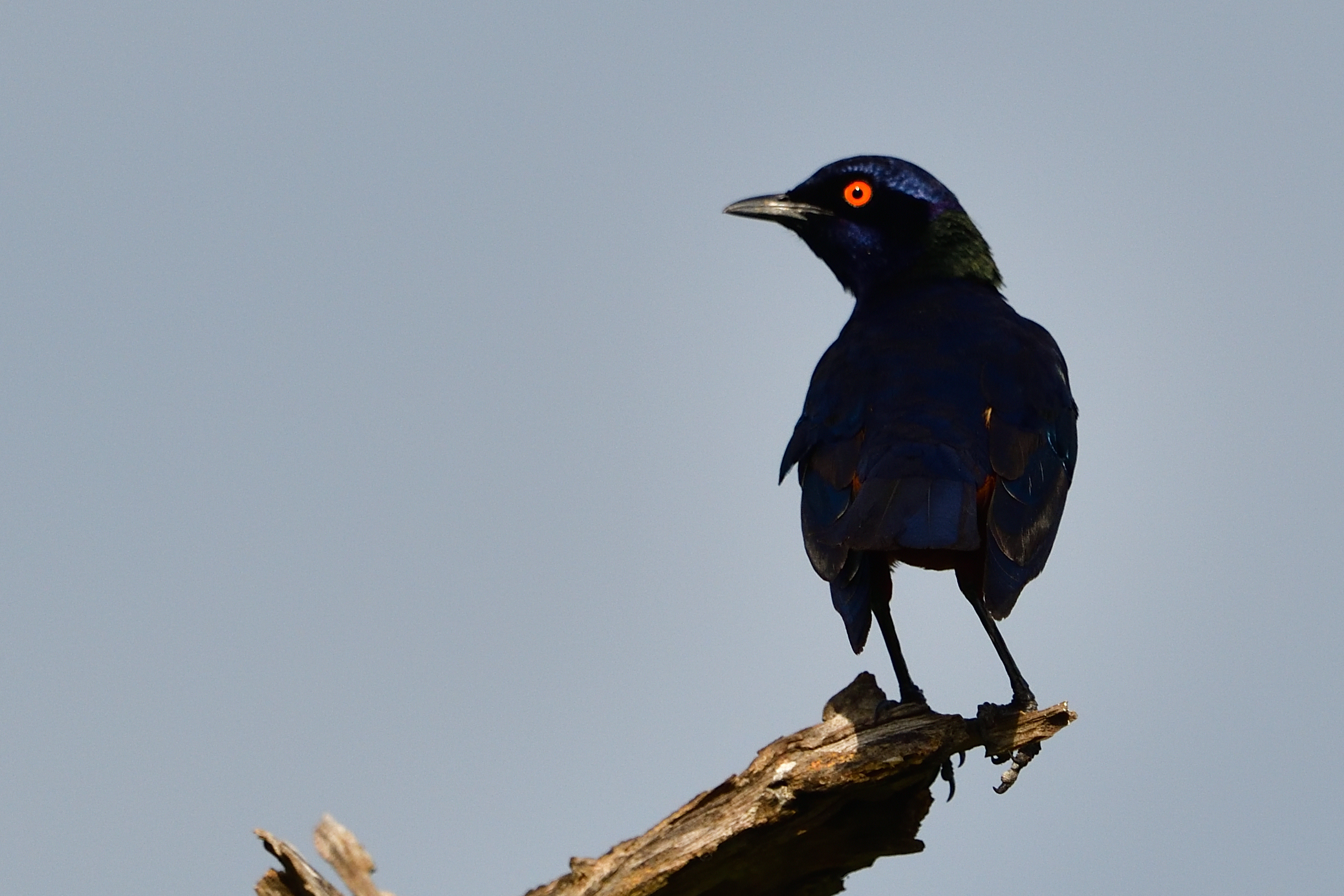
Hildebrandt´s Starling, Lamprotornis hildebrandti – Endemic to E Africa
Day 2, Friday, February 14: Mkomazi National Park
We were told that the rangers were not ready, so we had to stay at the same campsite one more day. We drove to the nearest junction and then took a southernly route. At the next junction, we followed the signs to the Ngurunga Dam. We picked up the following new birds on the morning drive: Hunter´s Sunbird, Orange-breasted Bushshrike, Grey-headed Bushshrike, Gabar Goshawk, Tiny Cisticola, Crimson-rumped Waxbill, African Hoopoe, Green-winged Pytilia, Jacobin Cuckoo, Black-crowned Tchagra, Wahlberg´s Eagle, Slate-coloured Boubou, Blavk-faced Sandgrouse, Desert Cisticola, Buff-crested Bustard, Isabelline Shrike, European Roller, White-bellied Bustard, Northern Carmine Bee-eater, Rosy-patched Bushshrike, Red-winged Lark, Nubian Woodpecker, Diederik Cuckoo, Blue-cheeked Bee-eater, African Grey Flycatcher, Vulturine Guineafowl, Red-fronted Tinkerbird, Lesser Honeyguide, Eastern Yellow-billed Hornbill and Red-backed Shrike before we returned to camp for breakfast. After breakfast, we went out again: Black-winged Kite, White-faced Whistling Duck, Knob-billed Duck, Harlequin Quail, Abyssinian Scimitarbill, Namaqua Dove, White-winged Widowbird, Winding Cisticola, Spotted Thick-knee, Hamerkop, Brown Snake Eagle, Red-fronted Prinia (Warbler), Red-faced Crombec, Eastern Violet-backed Sunbird, Steppe Eagle, Eastern Chanting Goshawk, Red-headed Weaver, White-crested Helmetshrike, Yellow-billed Oxpecker and Red-and-yellow Barbet + many others were recorded. We had now past 100 species and the spirit was high when we returned to camp that night.
Some pictures from Day 2:
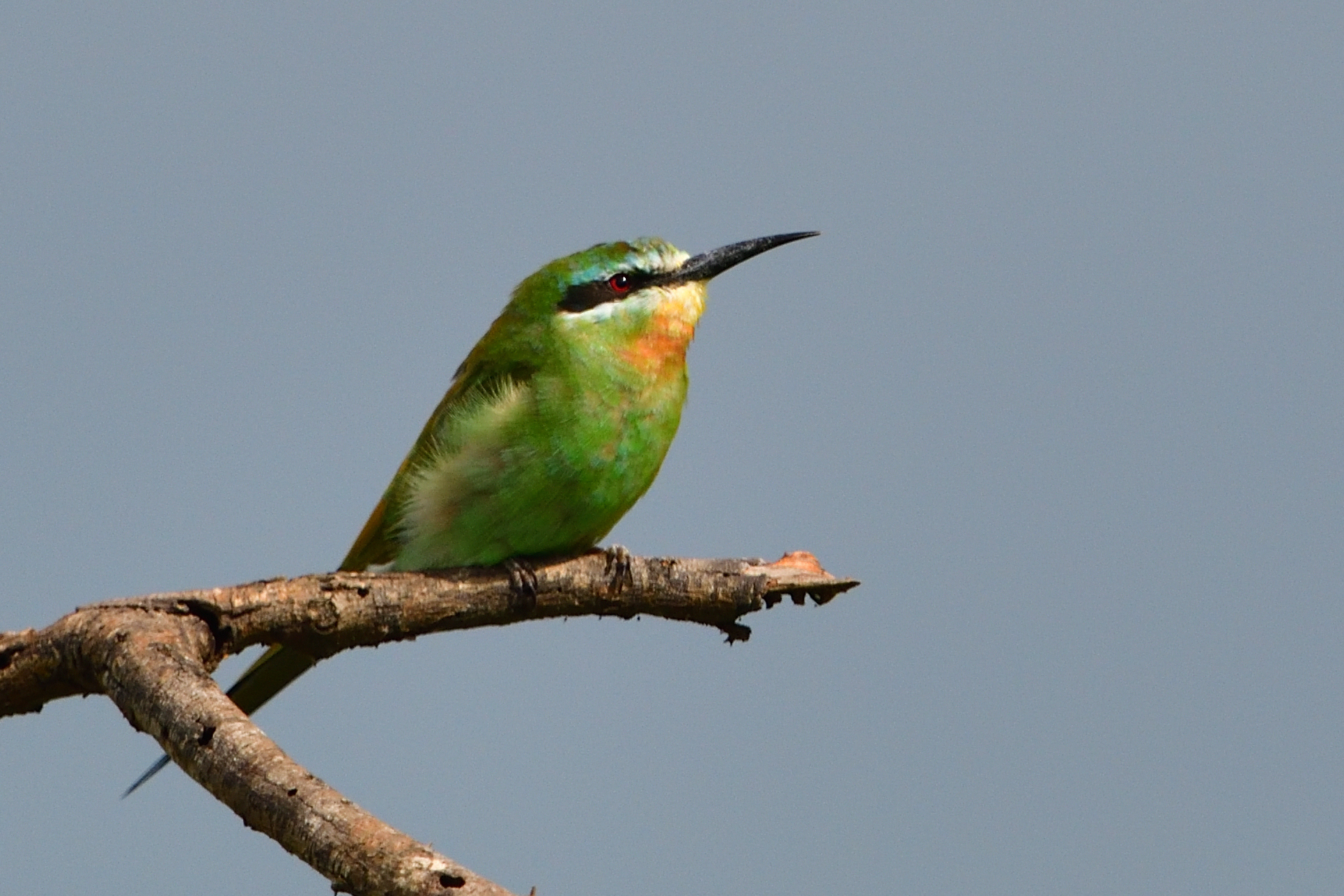
Blue-cheeked Bee-eater, Merops persicus
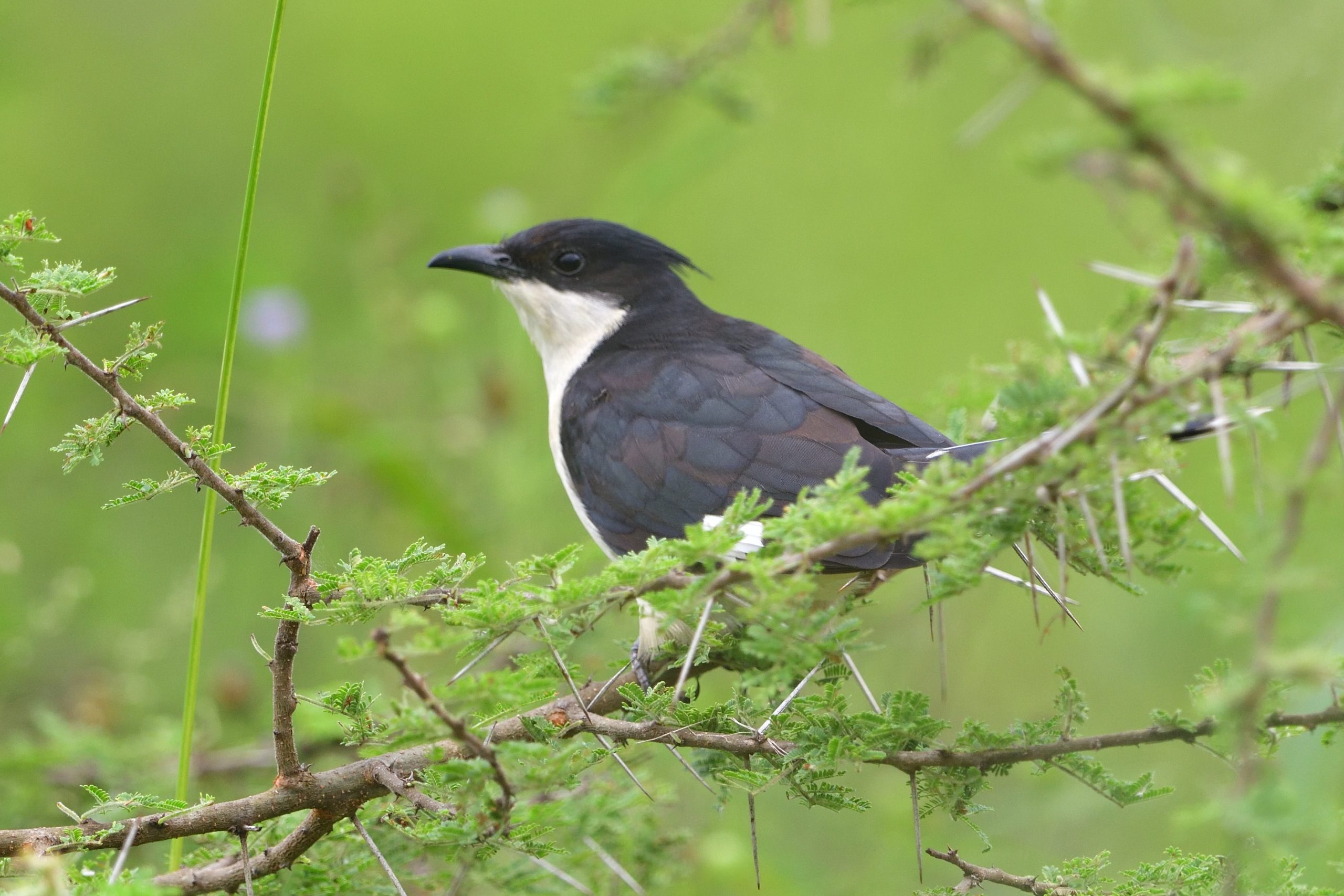
Jacobin Cuckoo, Clamator jacobinus
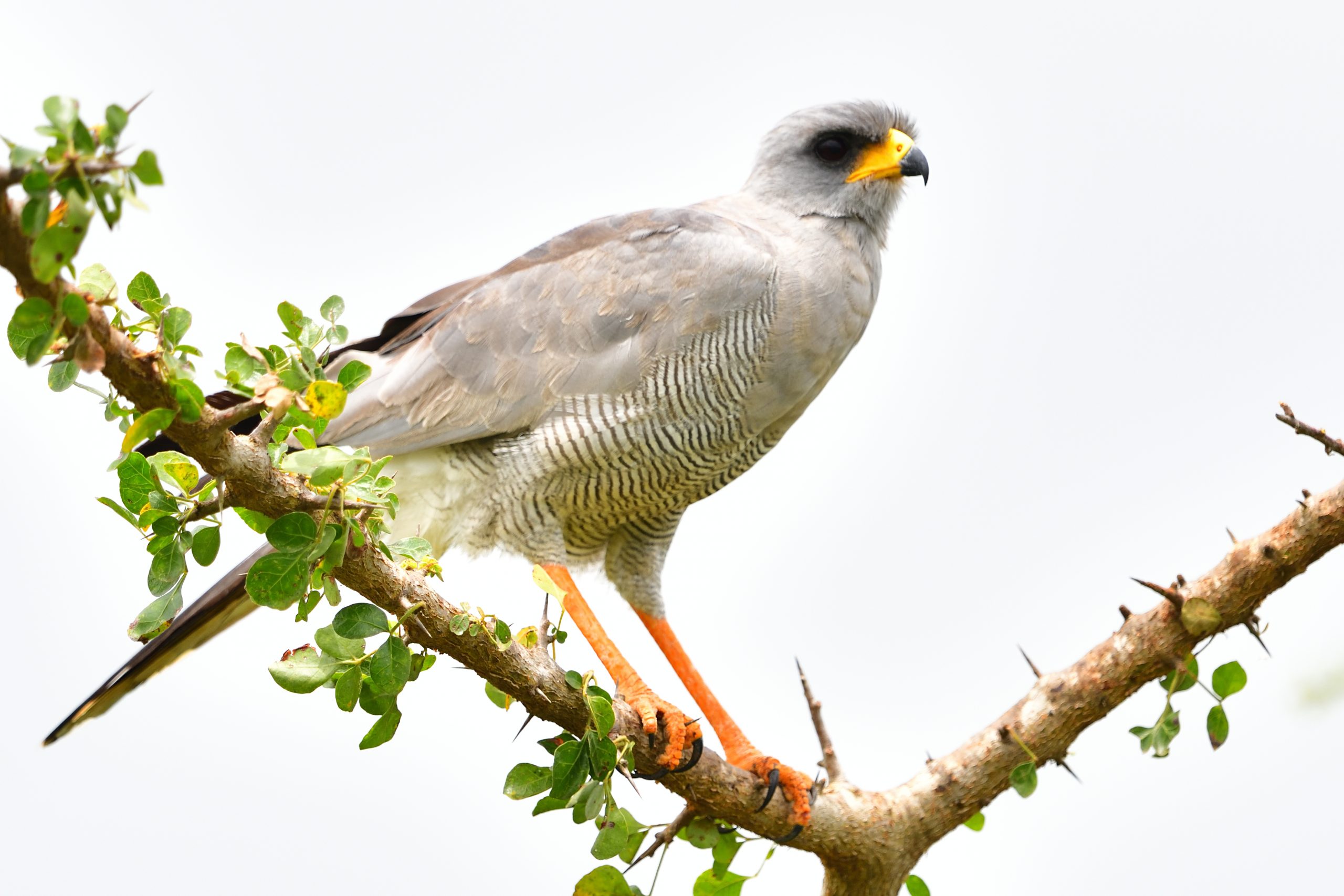
Eastern Chanting Goshawk, Melierax poliopterus – Endemic to NE Africa
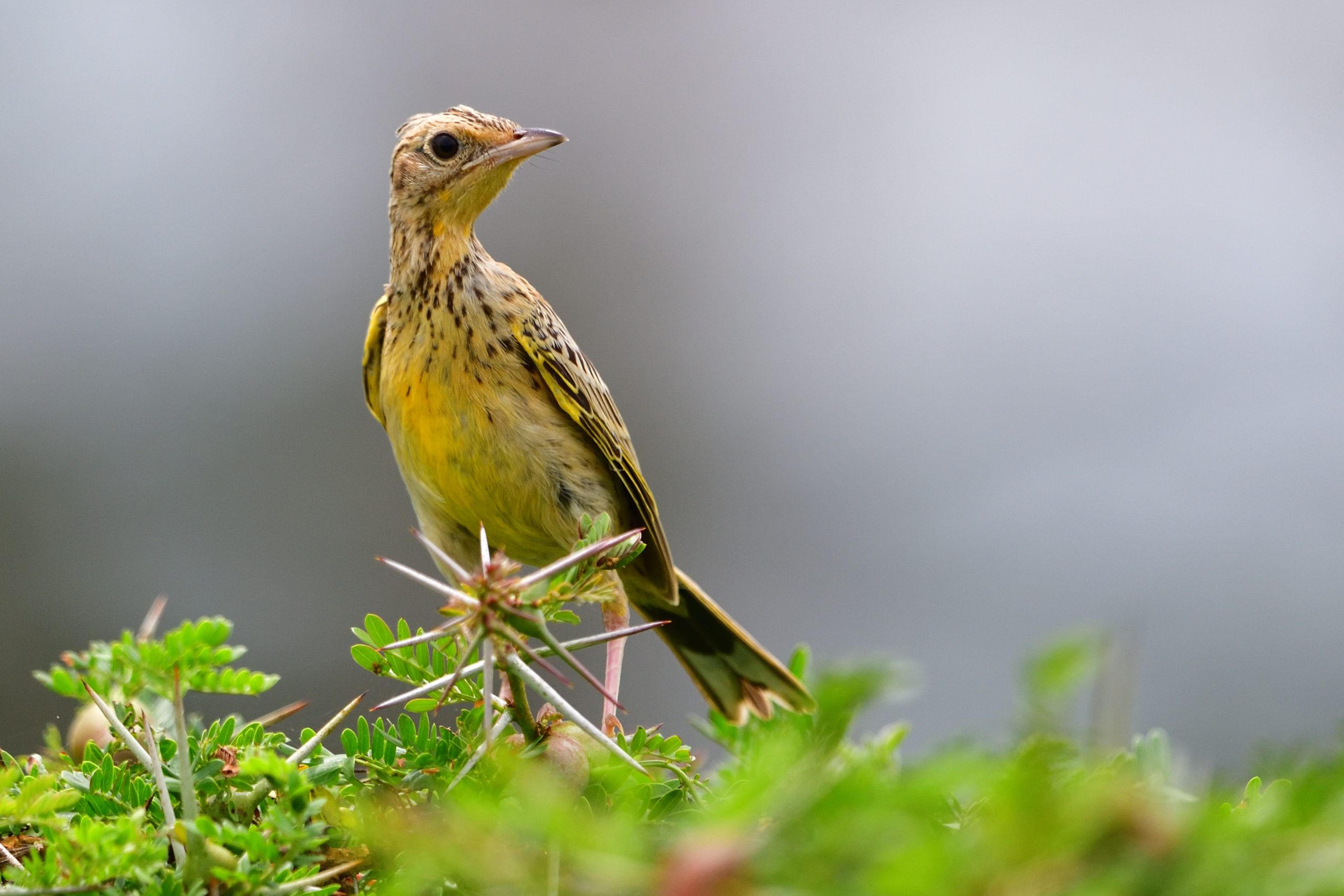
Pangani Longclaw (juvenile), Macronyx aurantiigula – Endemic to NE Africa
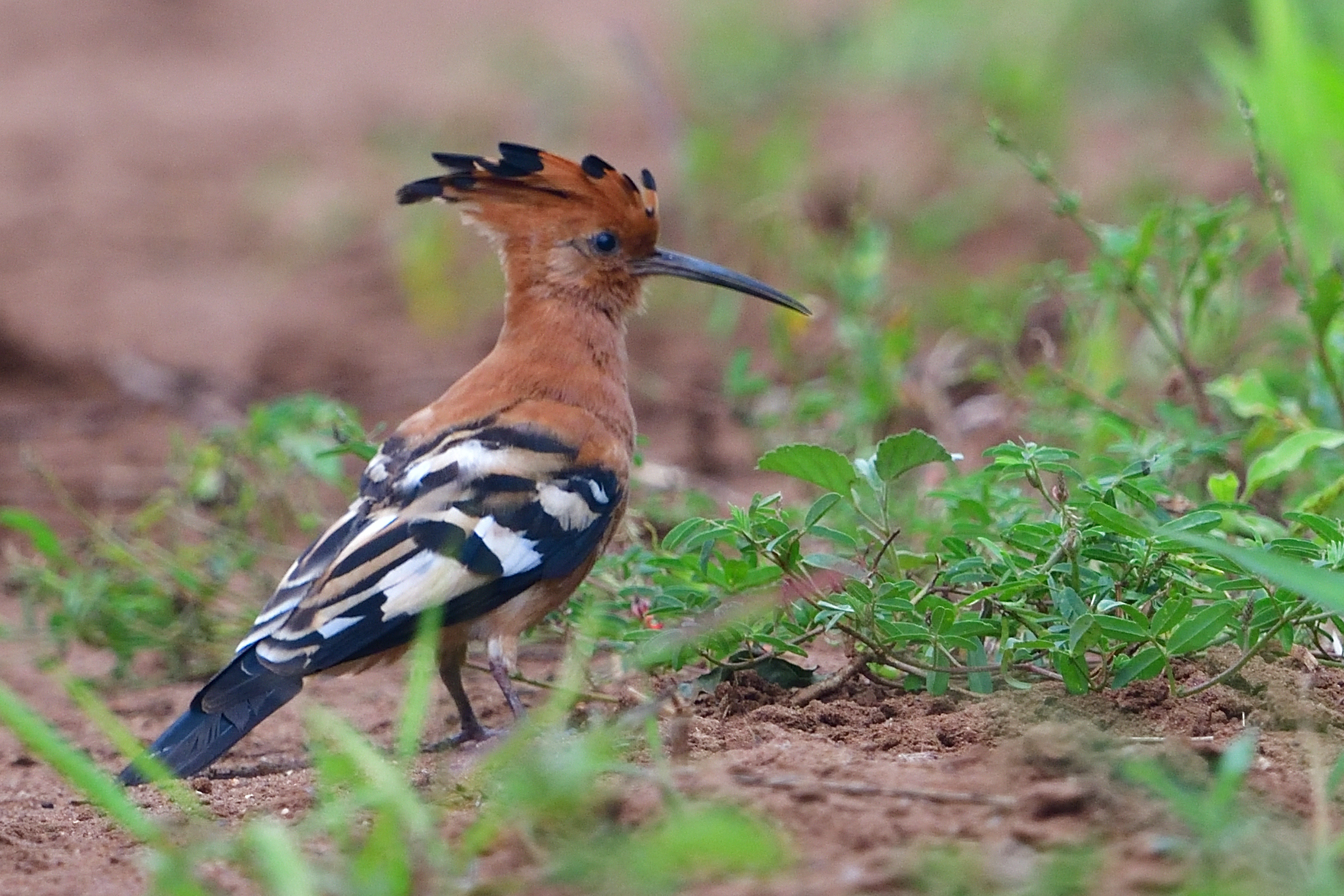
African Hoopoe, Upupa africana
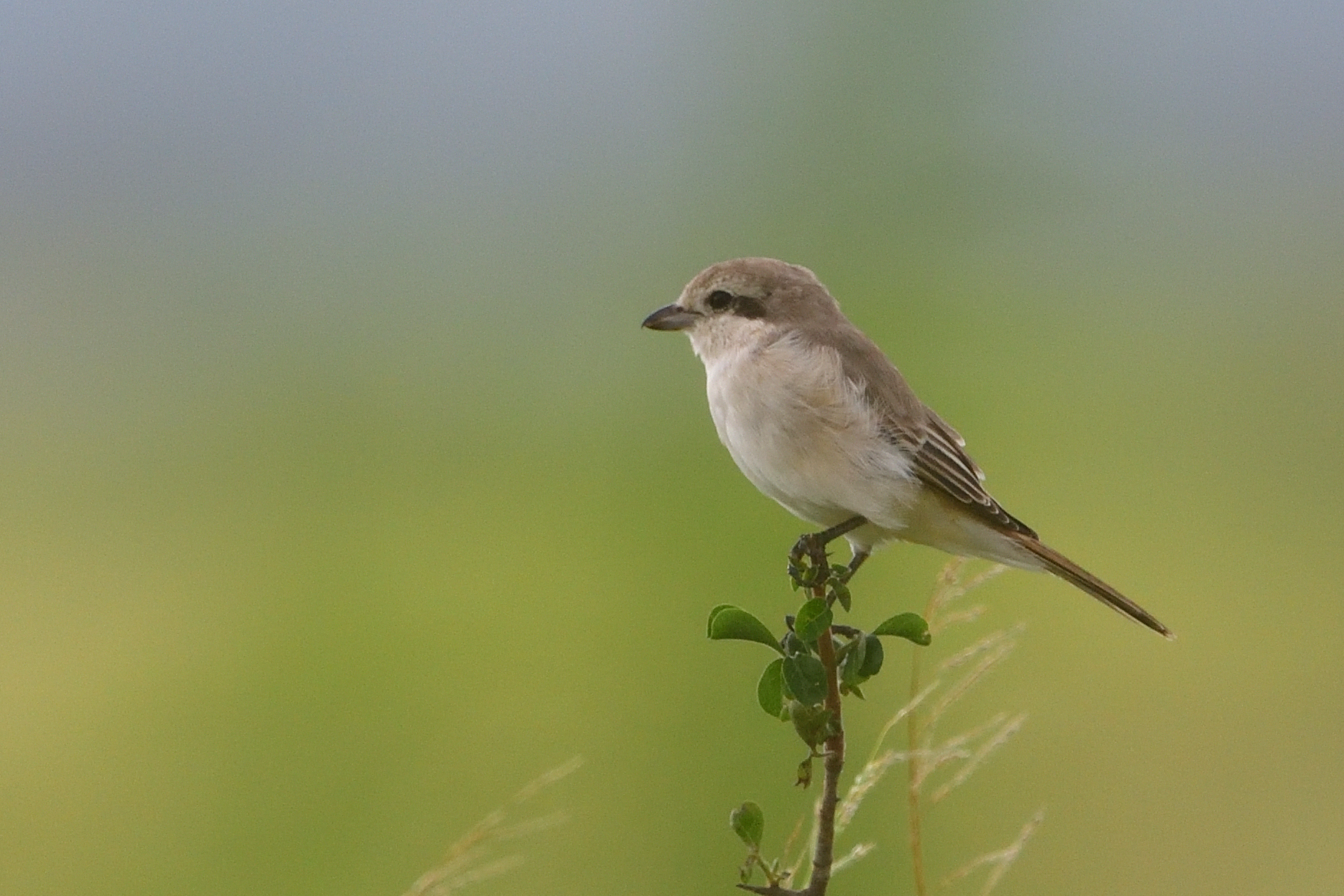
Isabelline Shrike, Lanius isabellinus
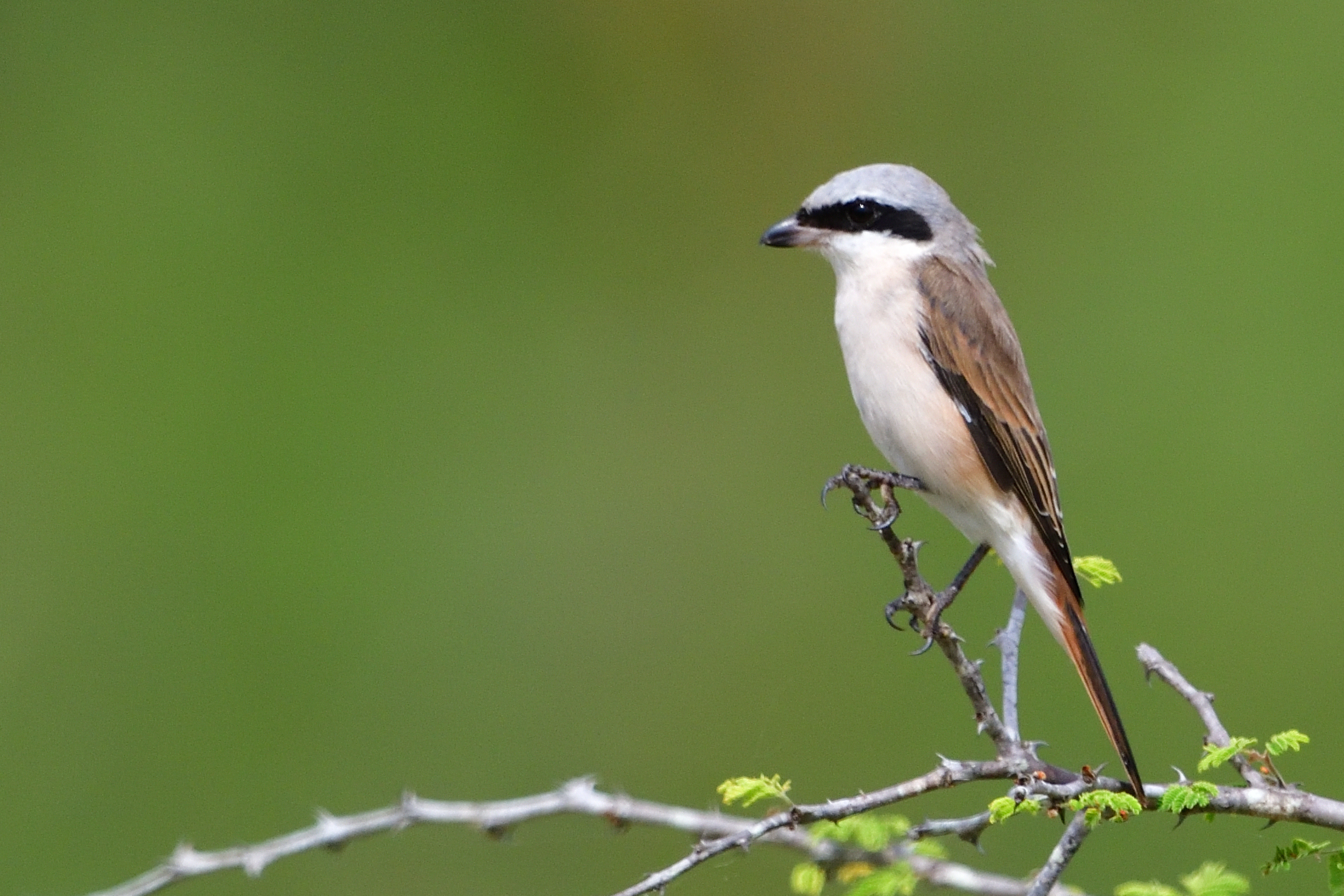
Red-backed Shrike, Lanius collurio
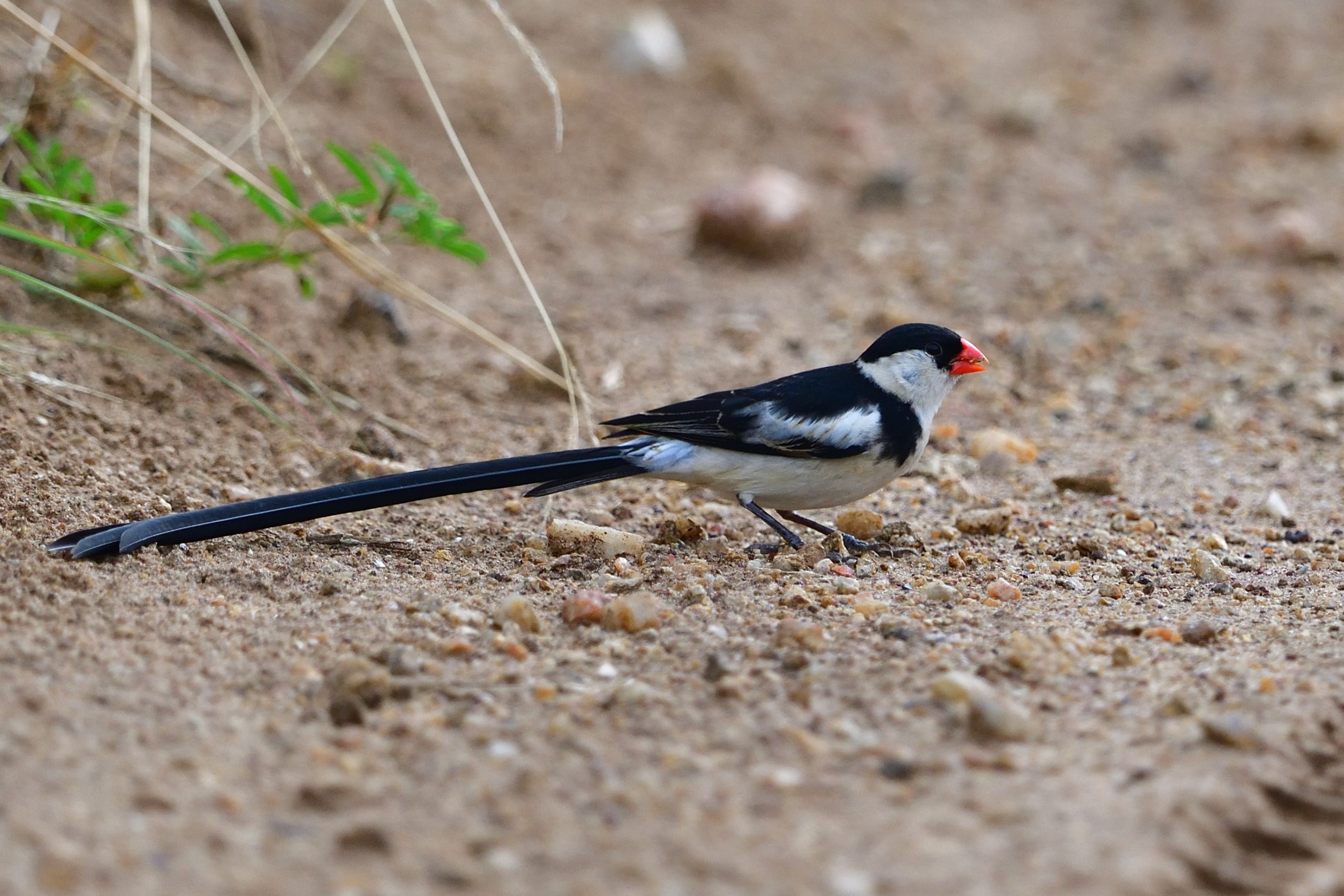
Pim-tailed Whydah, Vidua macroura
Day 3, Saturday, February 15: Mkomazi National Park
We birded in camp in the morning and added: Bare-eyed Thrush, Greater Honeyguide, Spotted Palm Thrush, Brubru, Yellow-breasted Apalis, Violet-backed Starling, Red-cheeked Cordon-bleu and African Paradise Flycatcher. We needed to stock up on some necessities so took a trip to Same. In the afternoon a Ranger came and took us out. It was nice to not have to drive. We added: Fischer´s Starling, Eastern Oliviaceous Warbler, Southern Black Flycatcher, Pink-breasted Lark, Secretarybird, Verreaux´s Eagle-Owl, Grey-backed Fiscal, Flappet Lark and Village Indigobird
Some pictures from day 3:
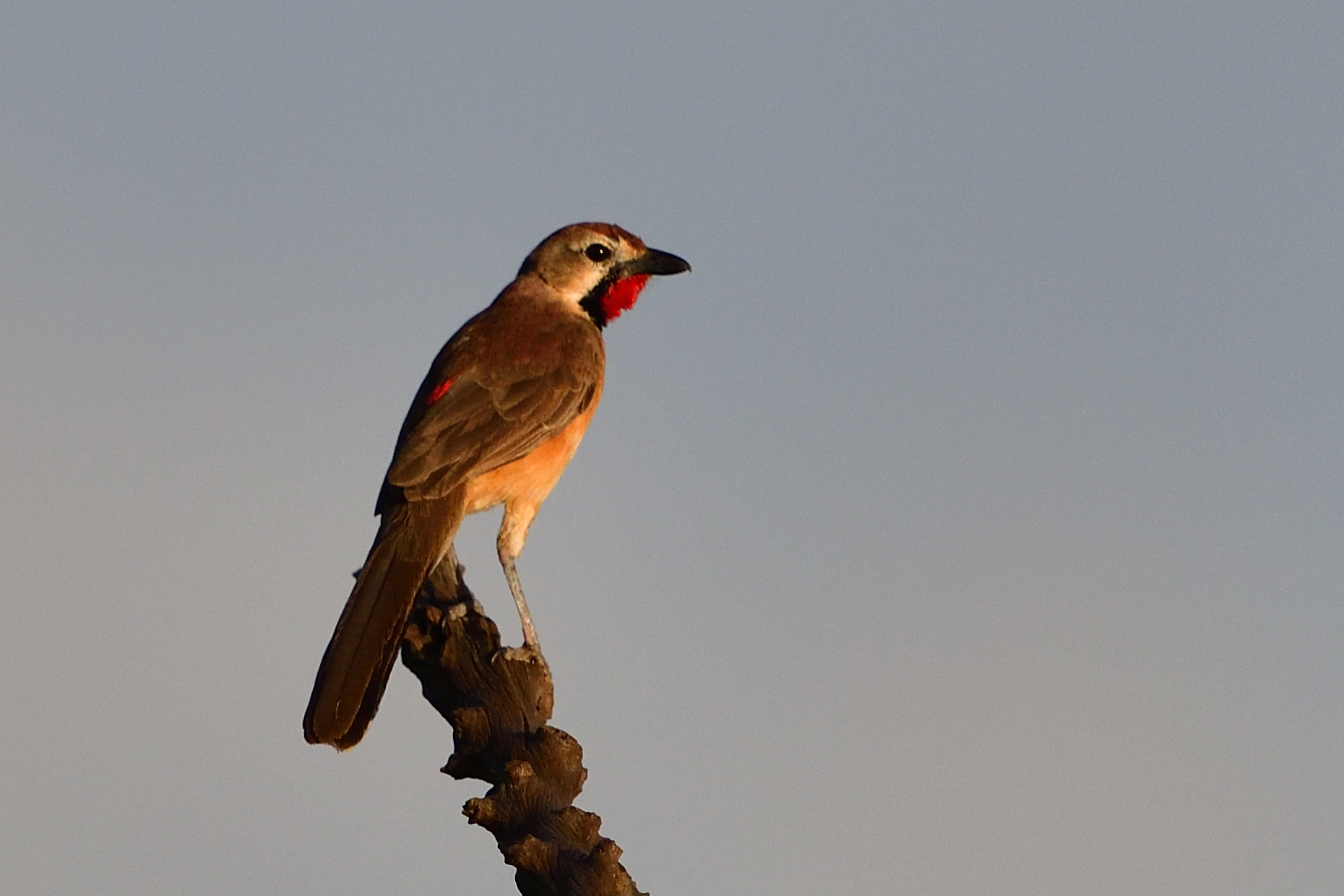
Rosy-patched Bushshrike, Rhodophoneus cruentis – Endemic to NE Africa
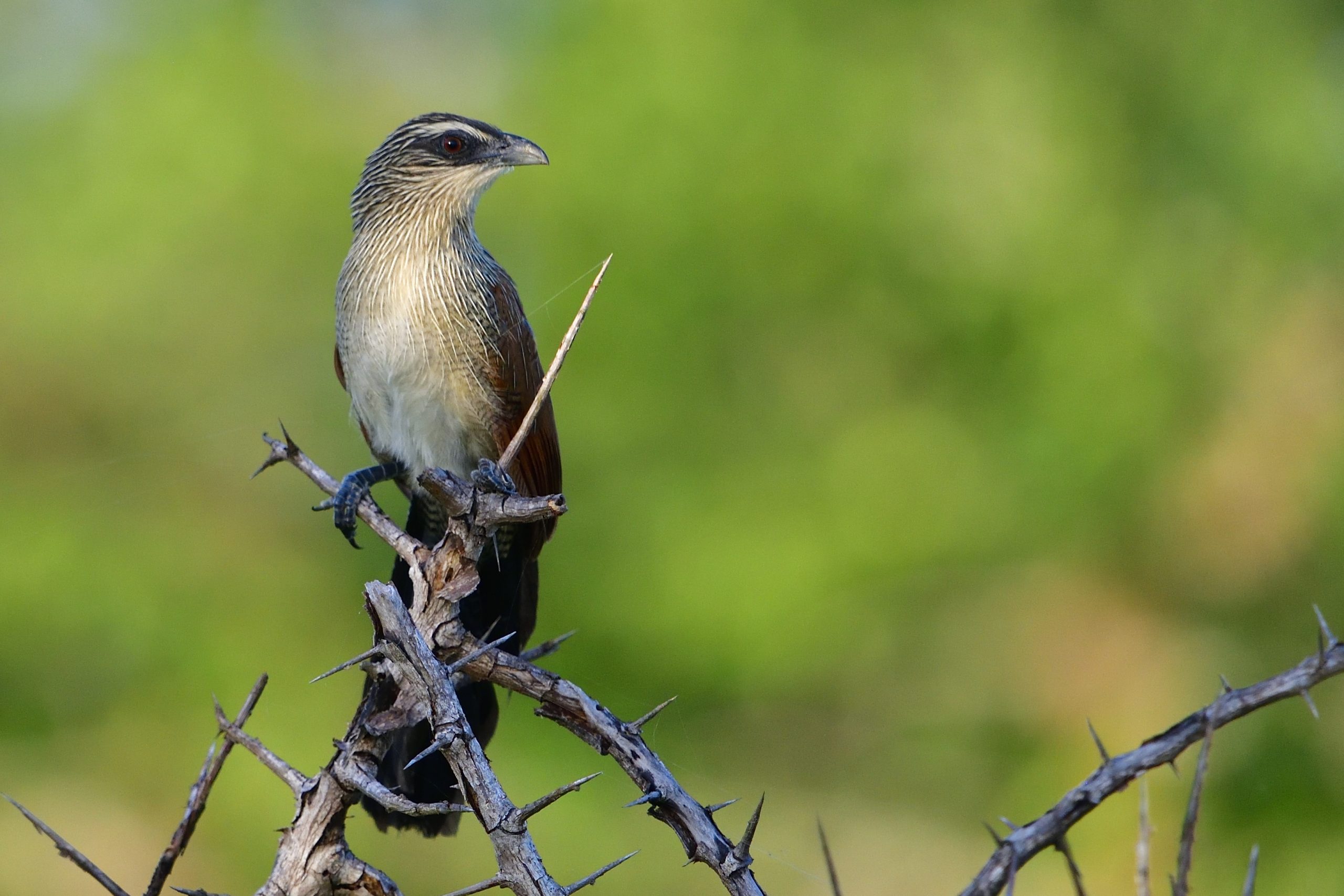
White-browed Coucal, Centropus superciliosus
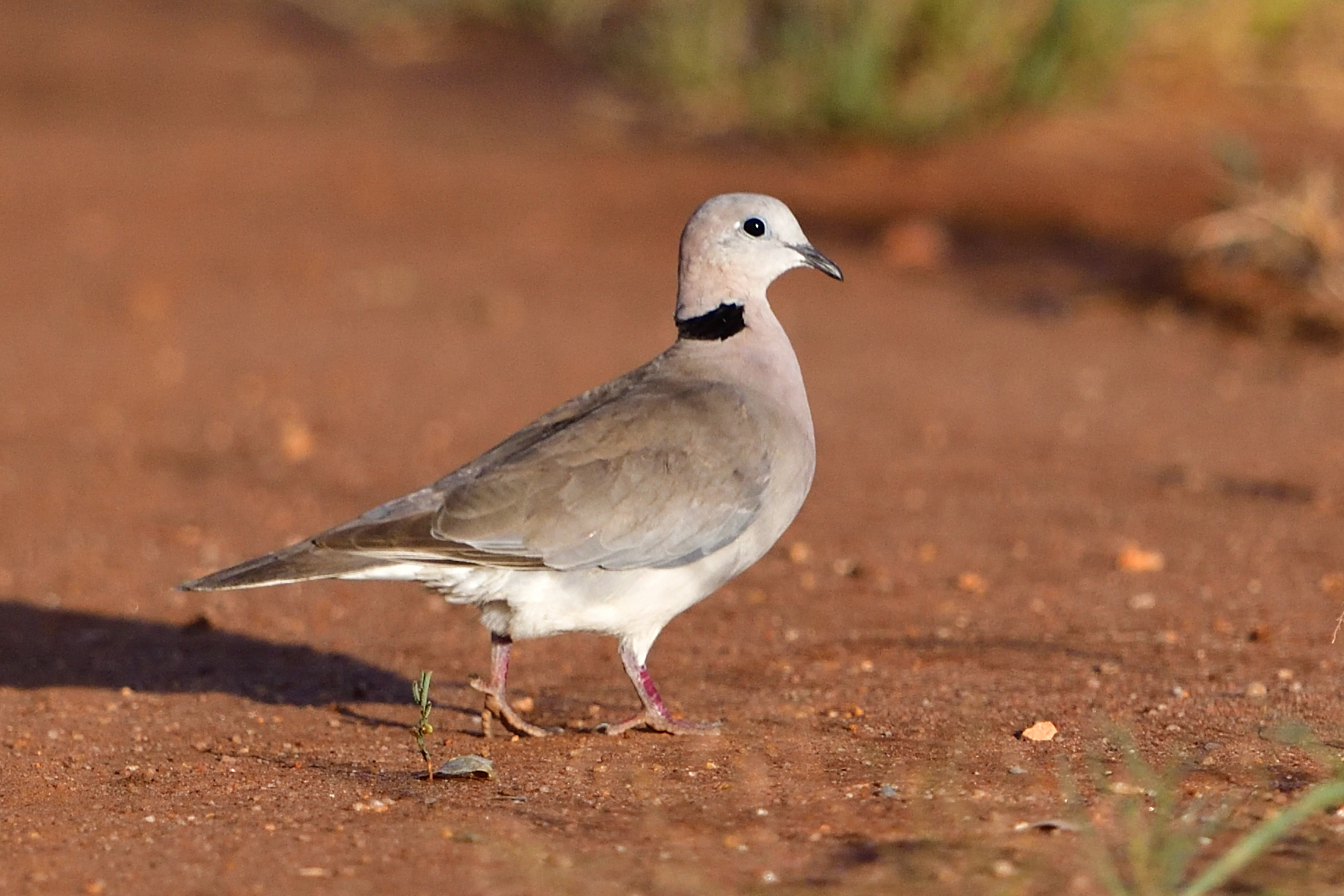
Ring-necked (Cape Turtle) Dove, Streptopelia capicola
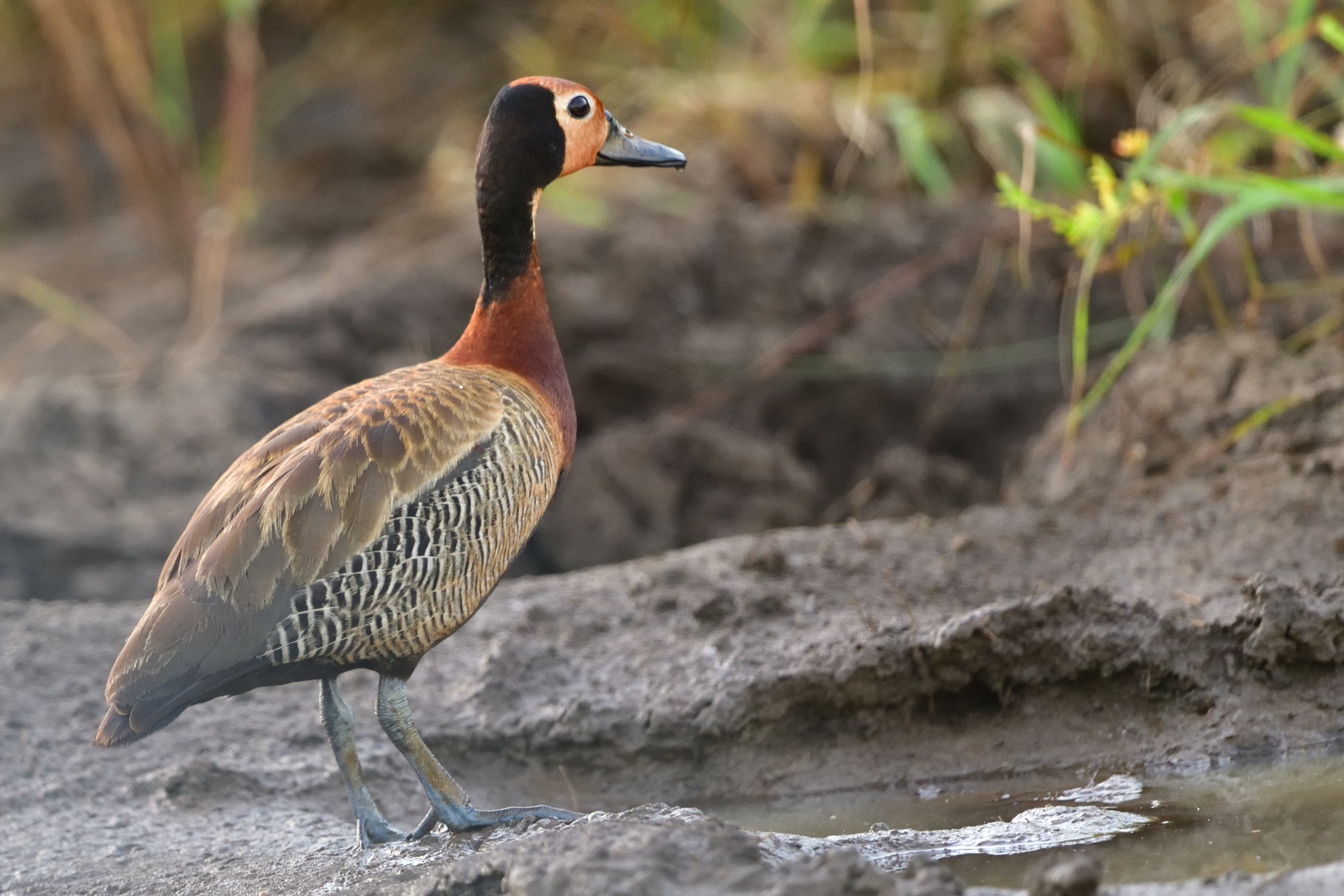
White-faced Whistling Dove, Dendrocygna viduata
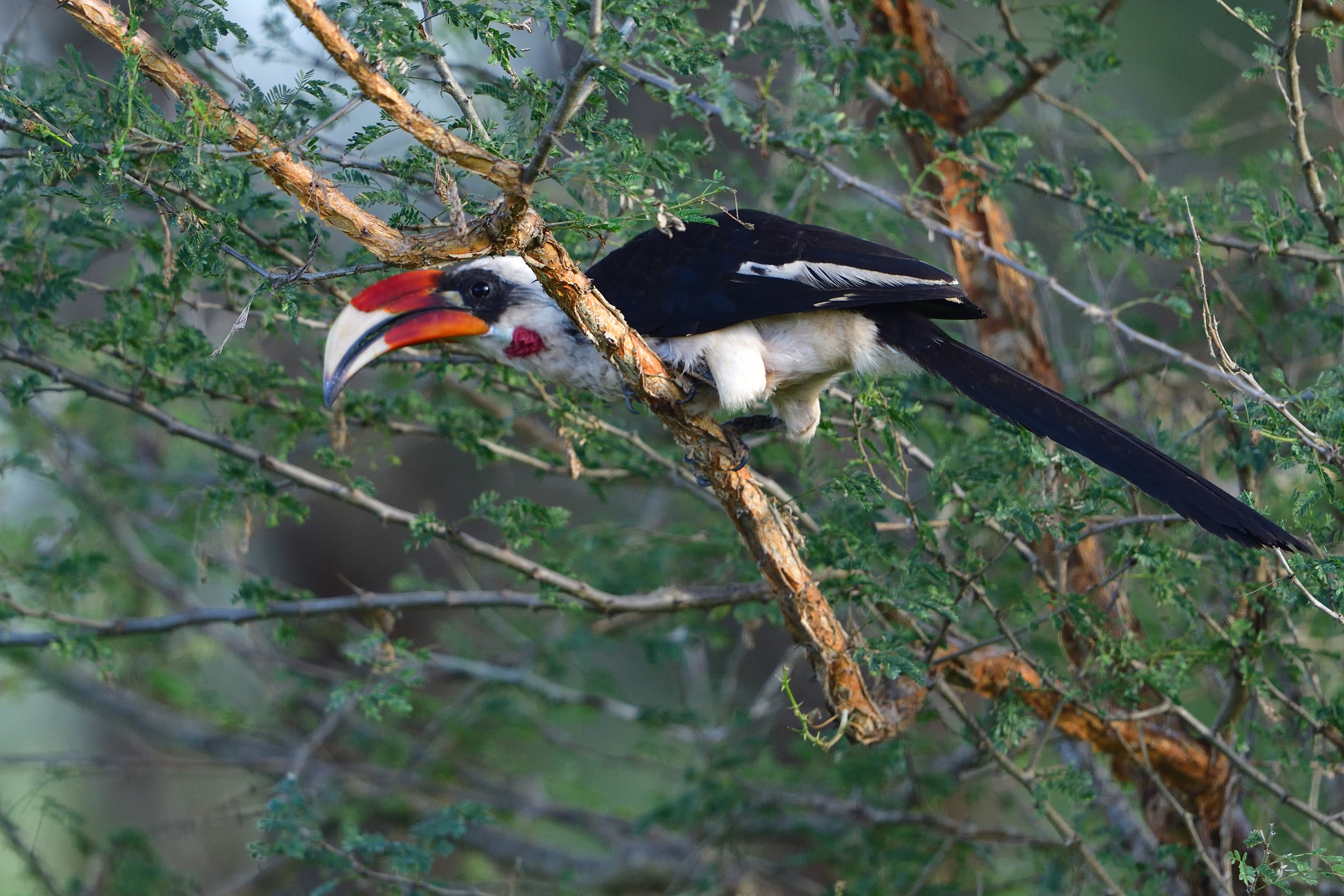
Von der Decken´s Hornbill, Tockus deckeni – Endemic to NE Africa
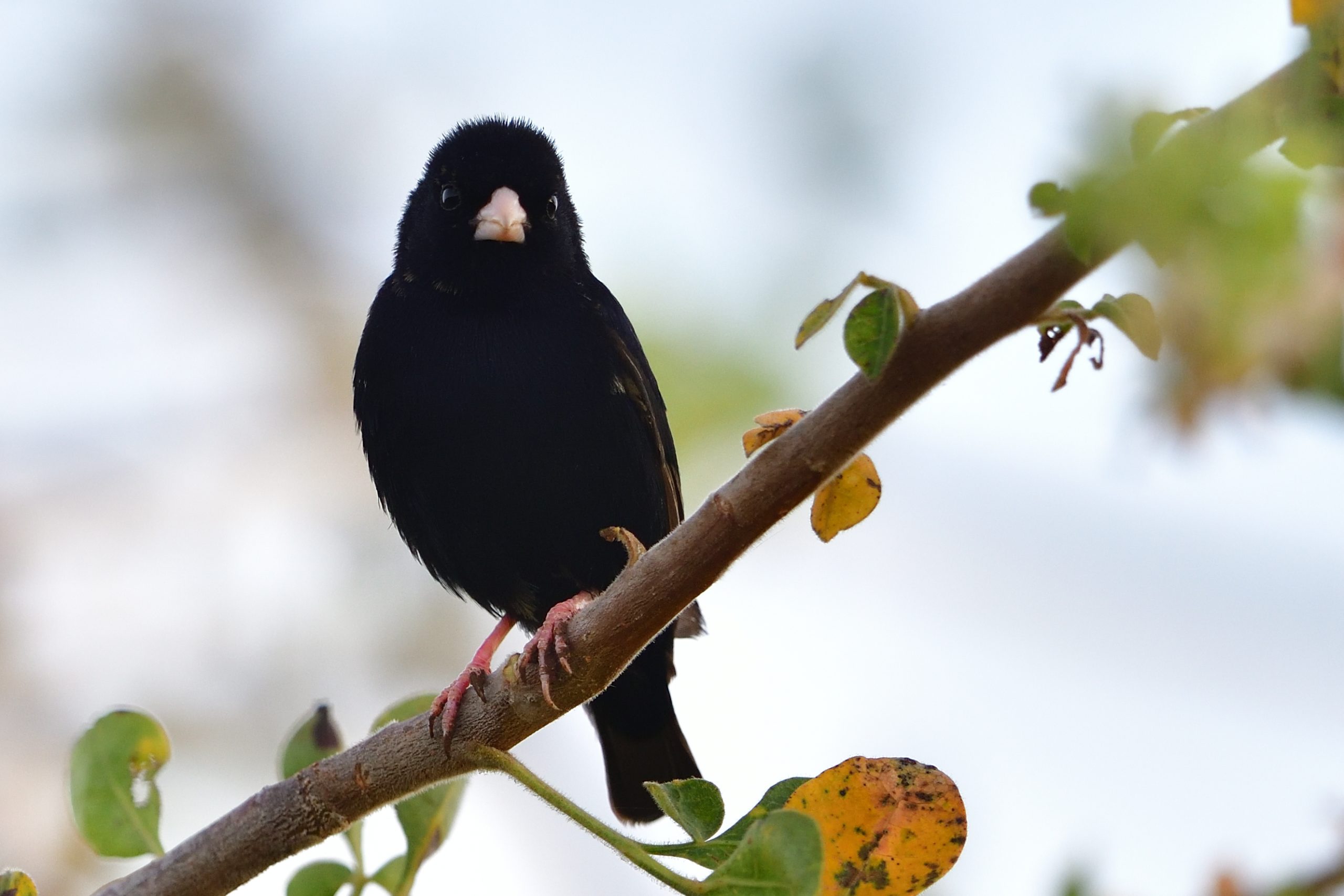
Village Indigobird, Vidua chalybeata
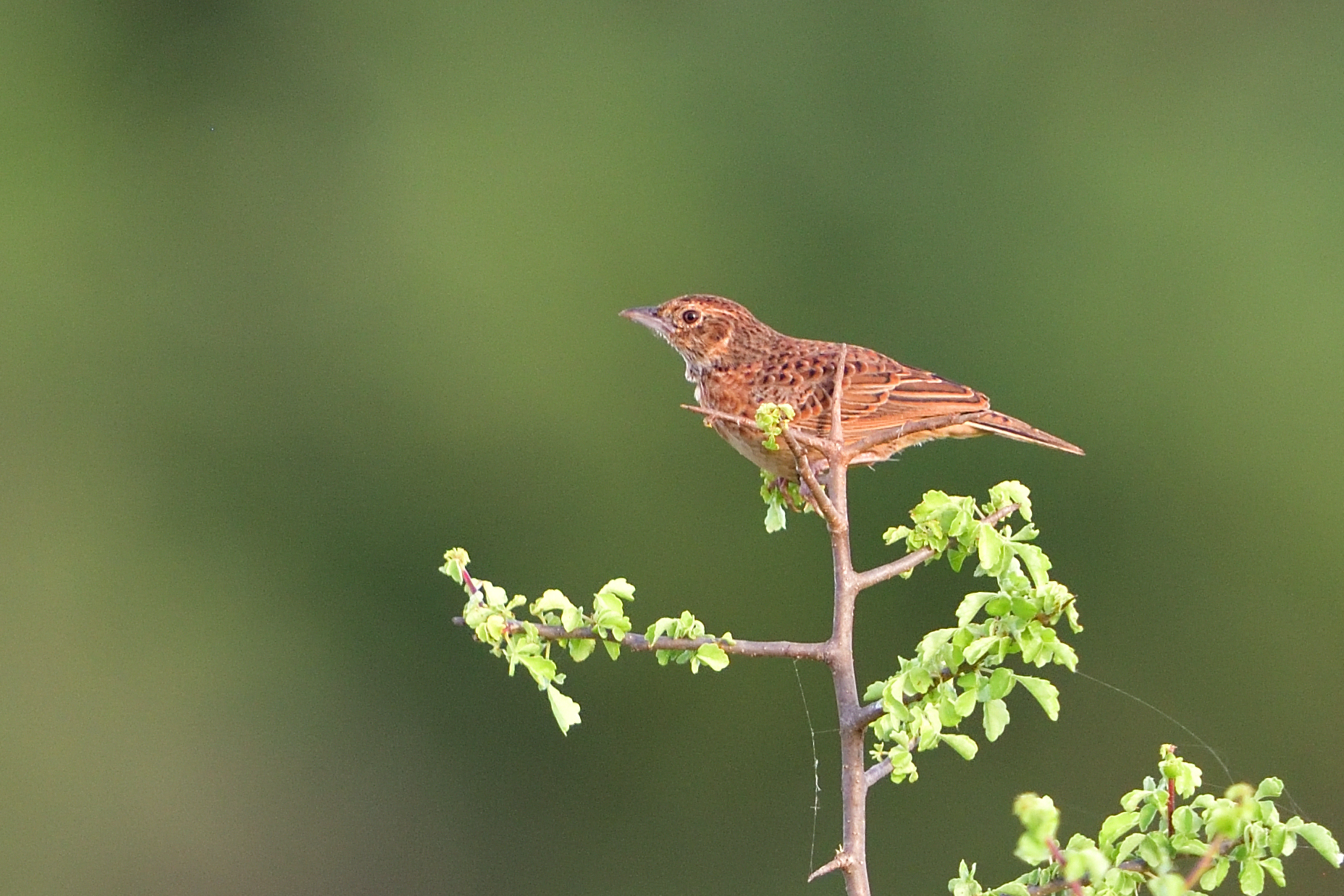
Flappet Lark, Mirafra rufocinnamomea
Day 4, Sunday, February 16: Mkomazi National Park.
The ranger were picking us up that morning and we were soon on our way for a longer drive, still with base in the camp site: Northern Carmine Bee-eater, Red-fronted Barbet, Three-banded Courser, Black-chested Snake Eagle, Blue-naped Mousebird, Golden-breasted Starling, African Fish-Eagle, Martial Eagle, Red-winged Lark, Grey-headed Kingfisher, Common Ostrich, Common Buzzard, Nubian Woodpecker, Pygmy Falcon, Parrot-billed Sparrow, Green Wood-Hoopoe and Purple Roller. We returned to camp for lunch. After lunch we did some birding in camp before the Ranger picked us up again: Common Rock Thrush and Steppe Eagle were picked up. After dinner, we found a Plain Nightjar (Lifer) in camp.
Some pictures from day 4:
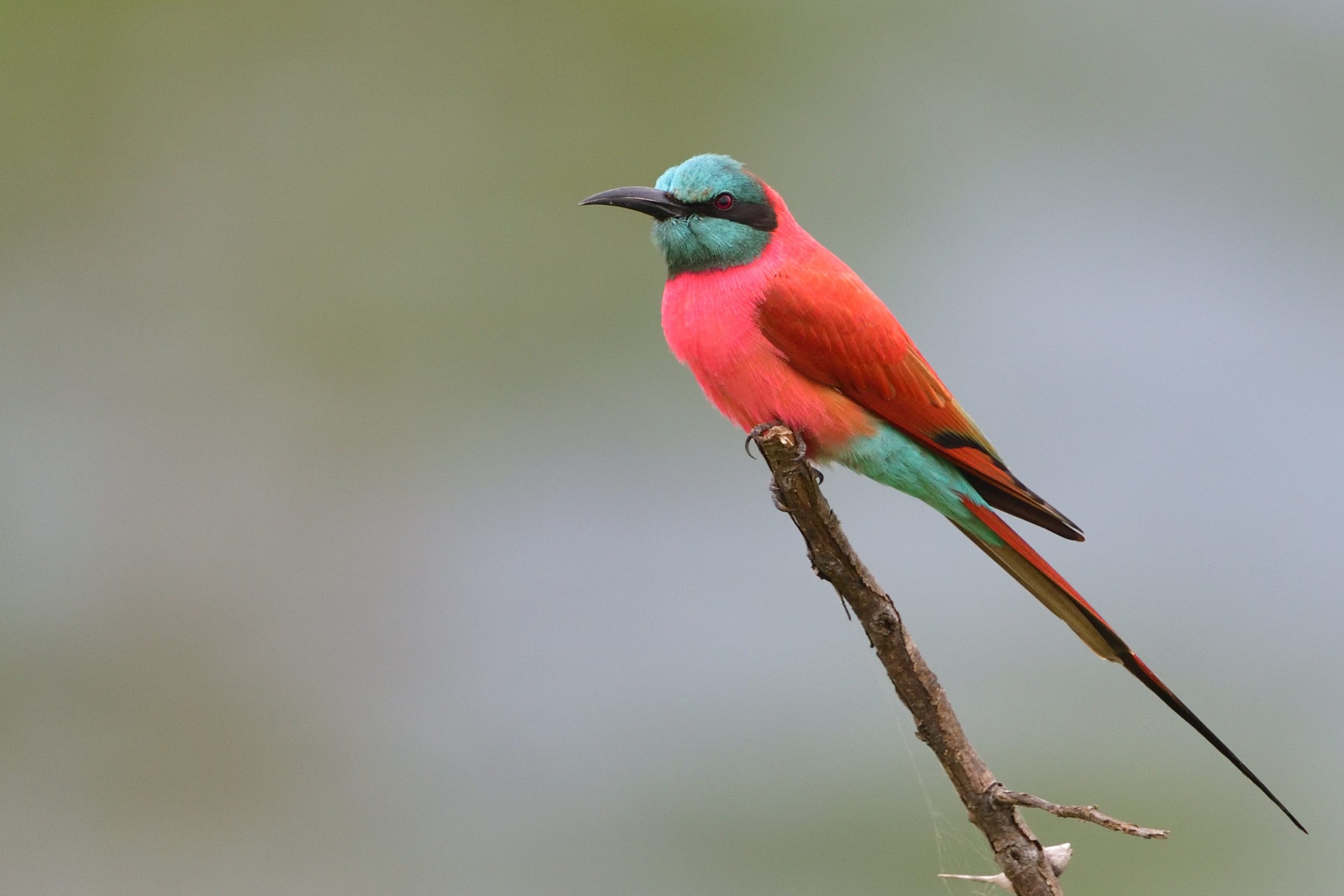
Northern Carmine Bee-eater, Merops nubicus
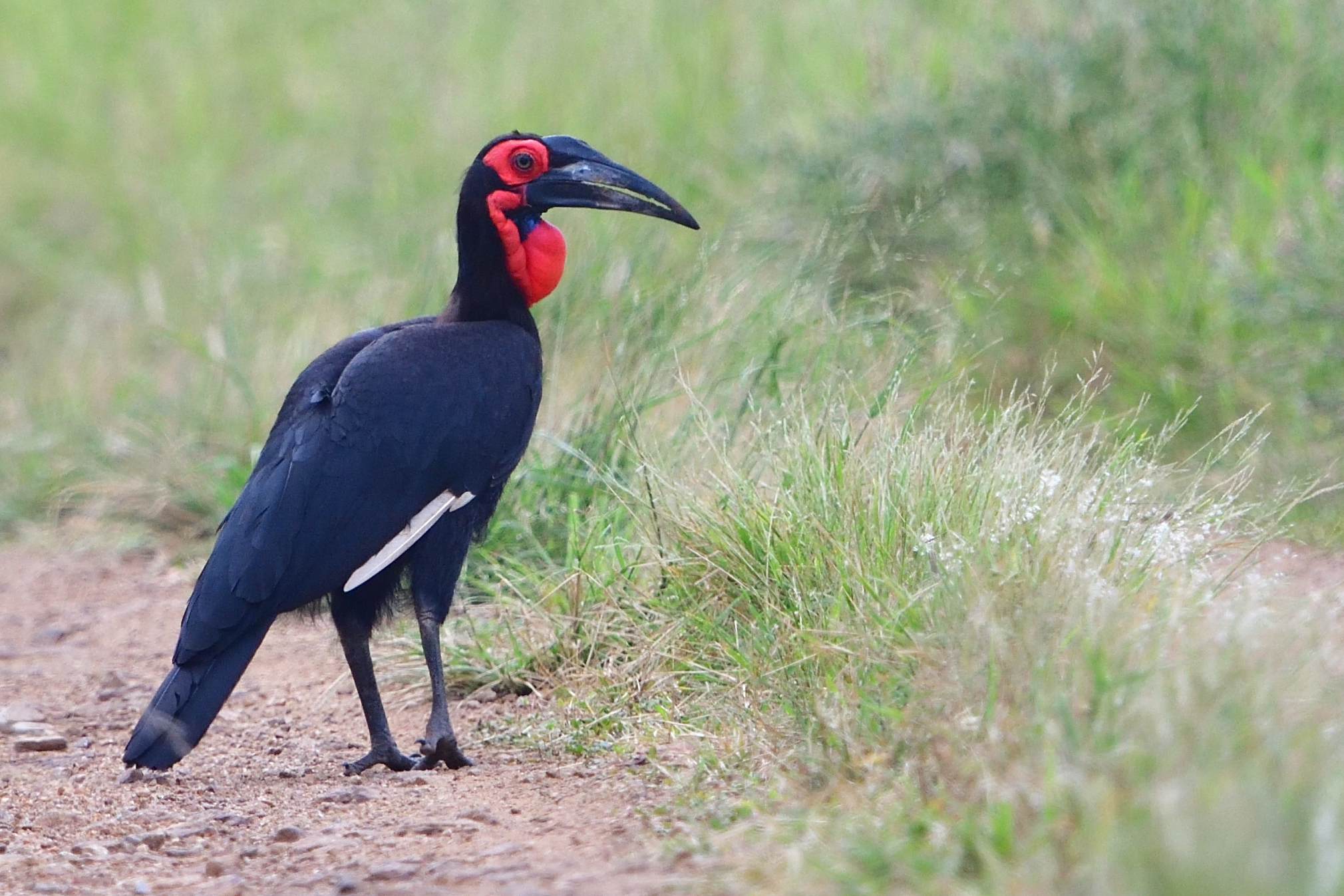
Southern Ground Hornbill, Bucorvus leadbeateri
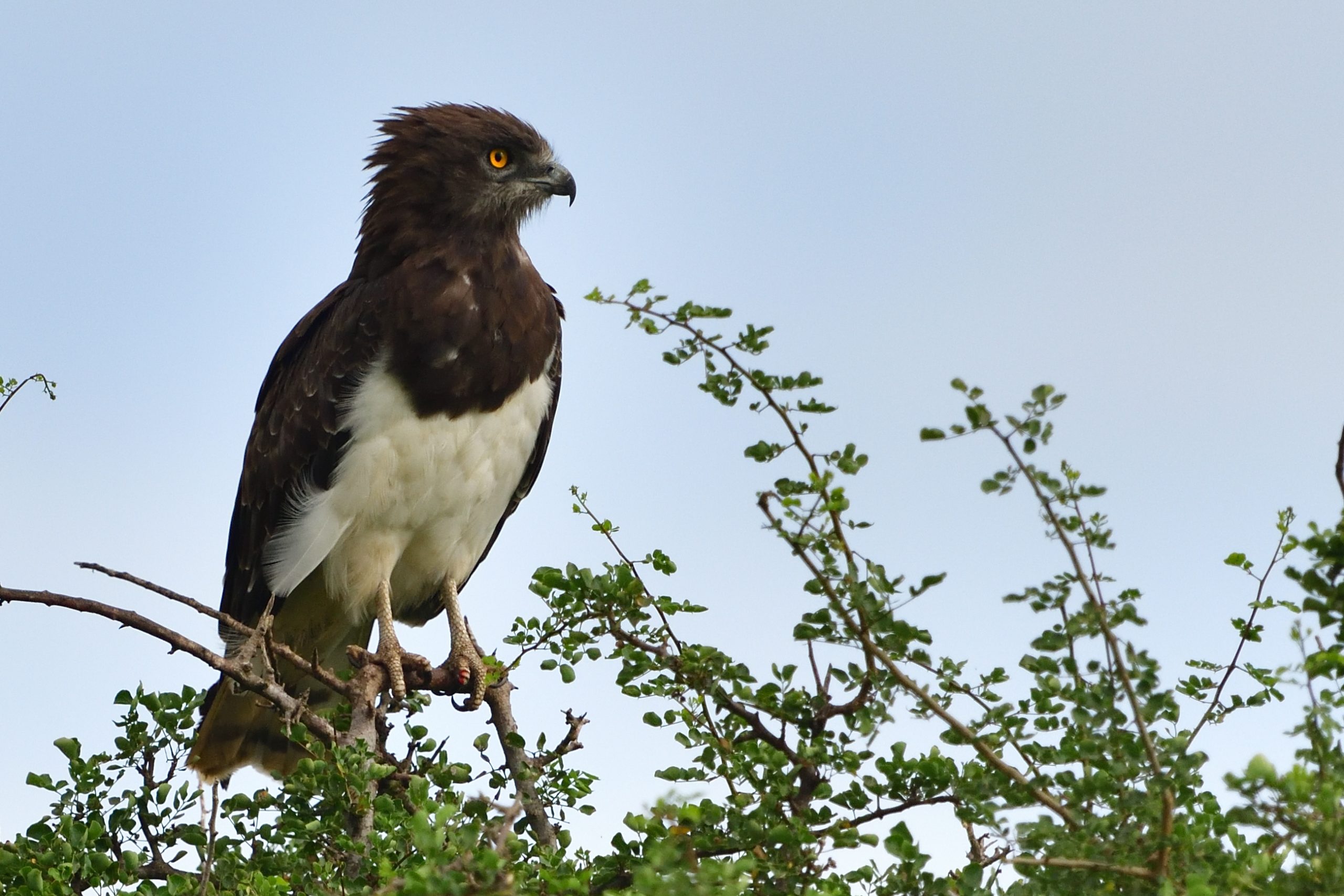
Black-chested Snake Eagle, Circaetus pectoralis
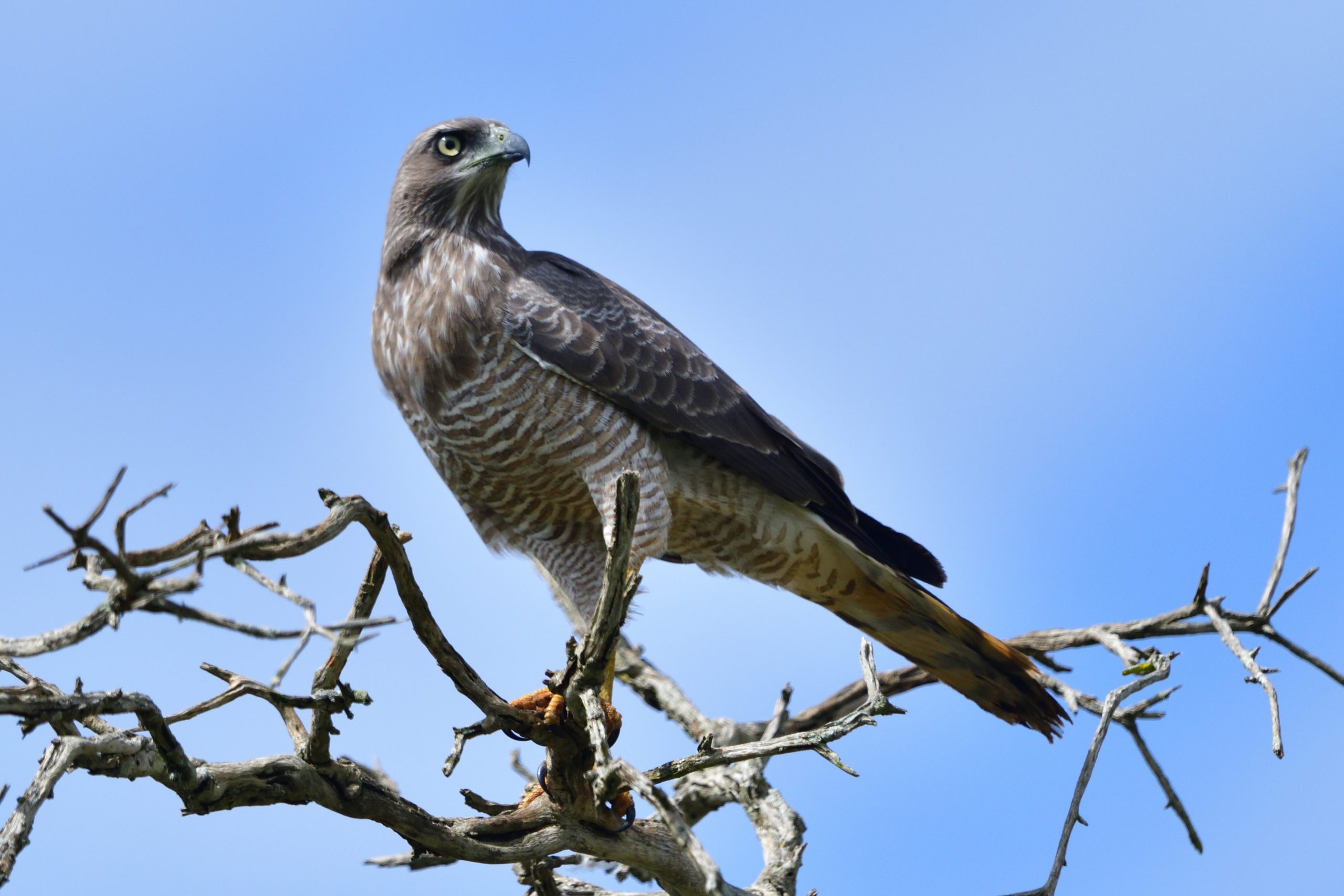
Eastern Chanting Goshawk (Juvenile), Melierax poliopterus – Endemic to NE Africa
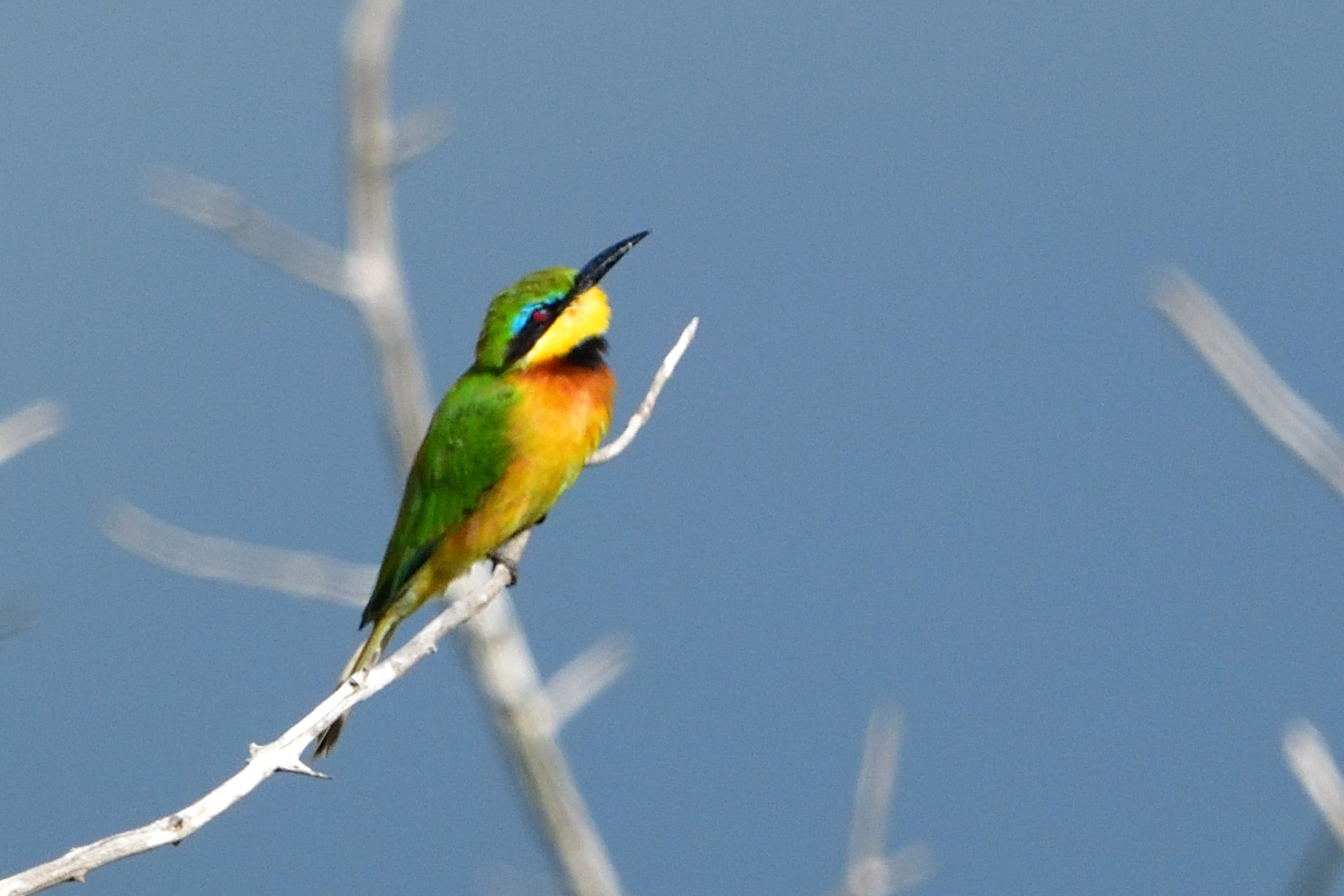
Little Bee-eater, Merops pusillus
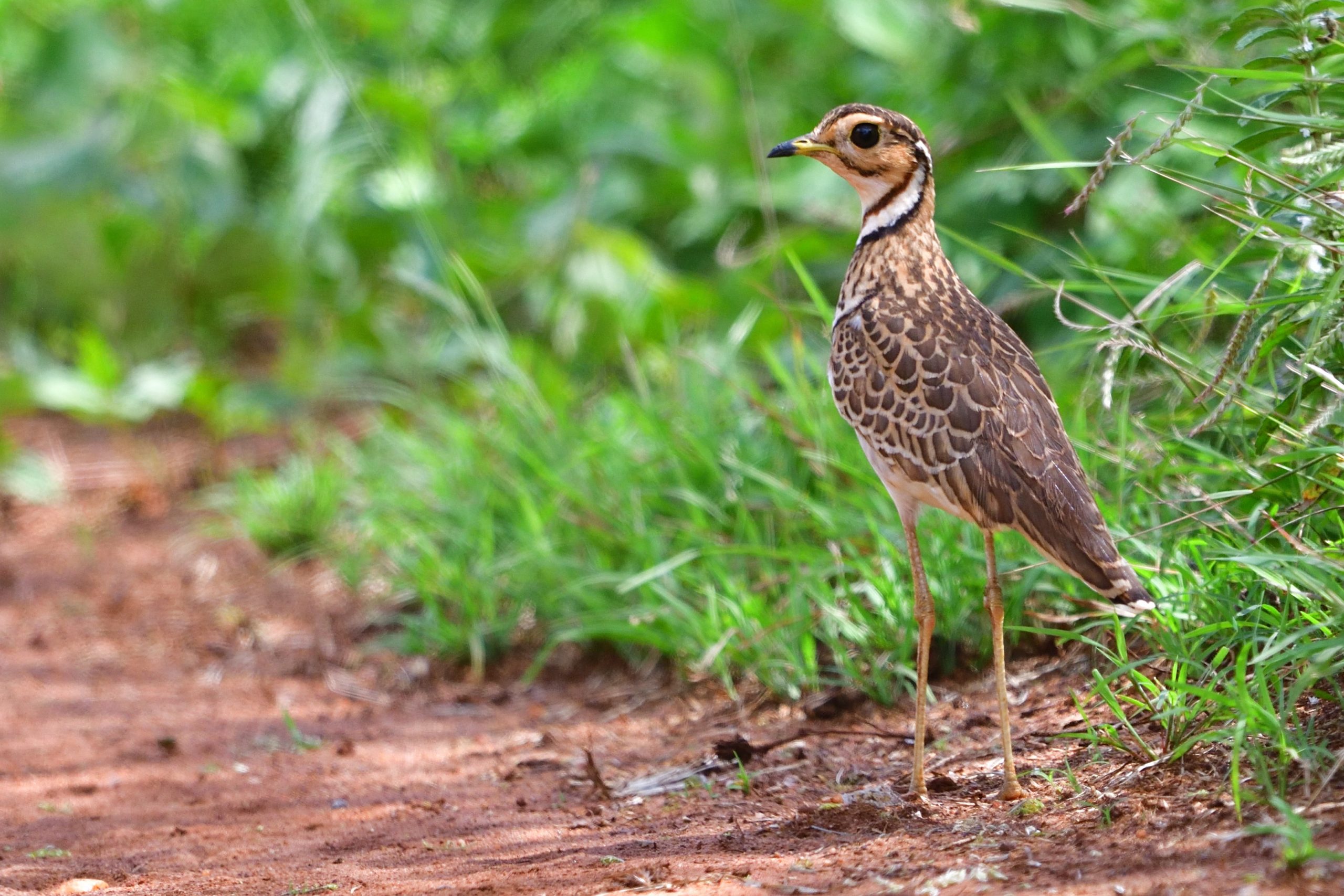
Three-banded Courser, Rhinoptilus cinctus

European Roller, Coracius garrulus
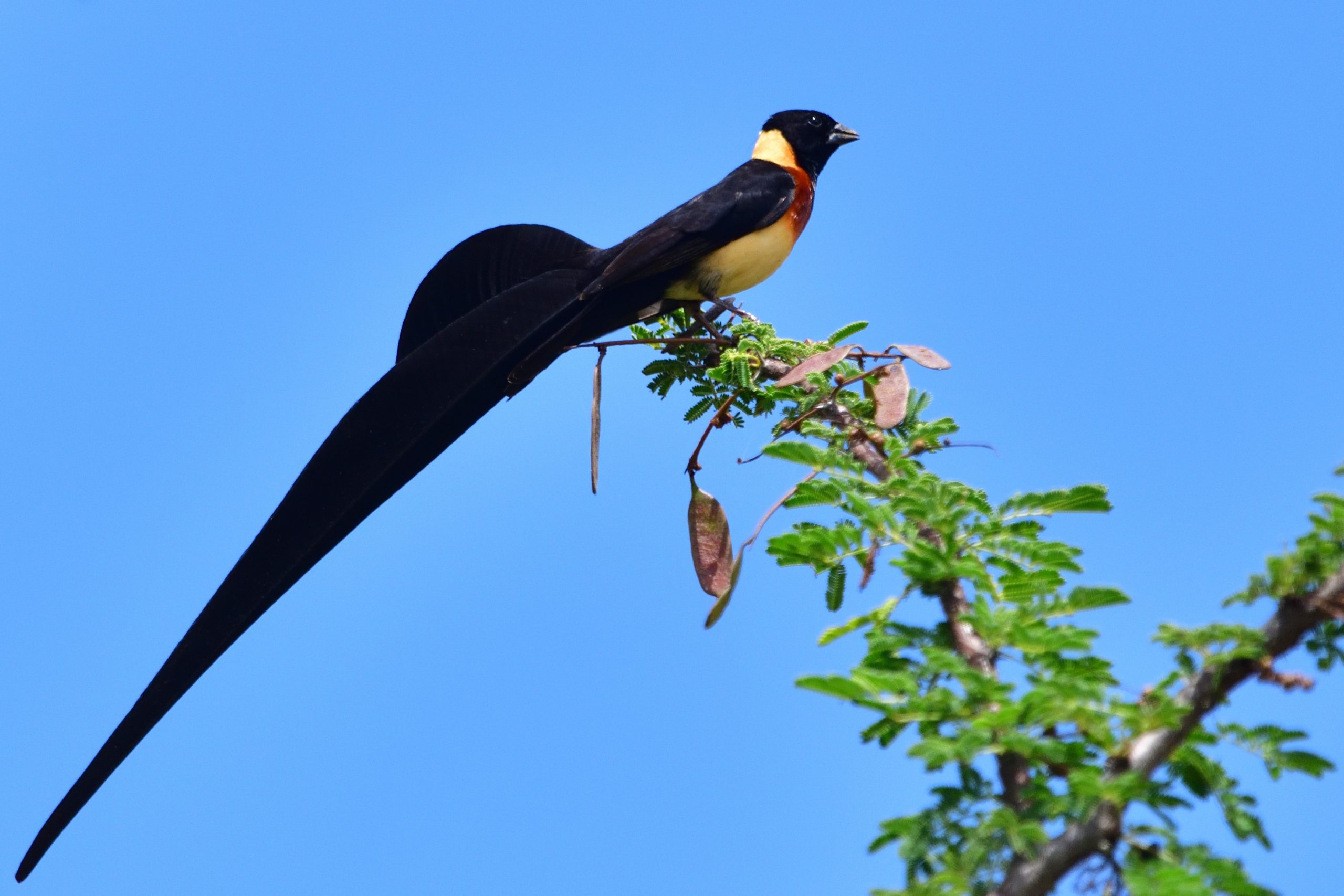
Long-tailed Paradise Whydah, Vidua paradisaea
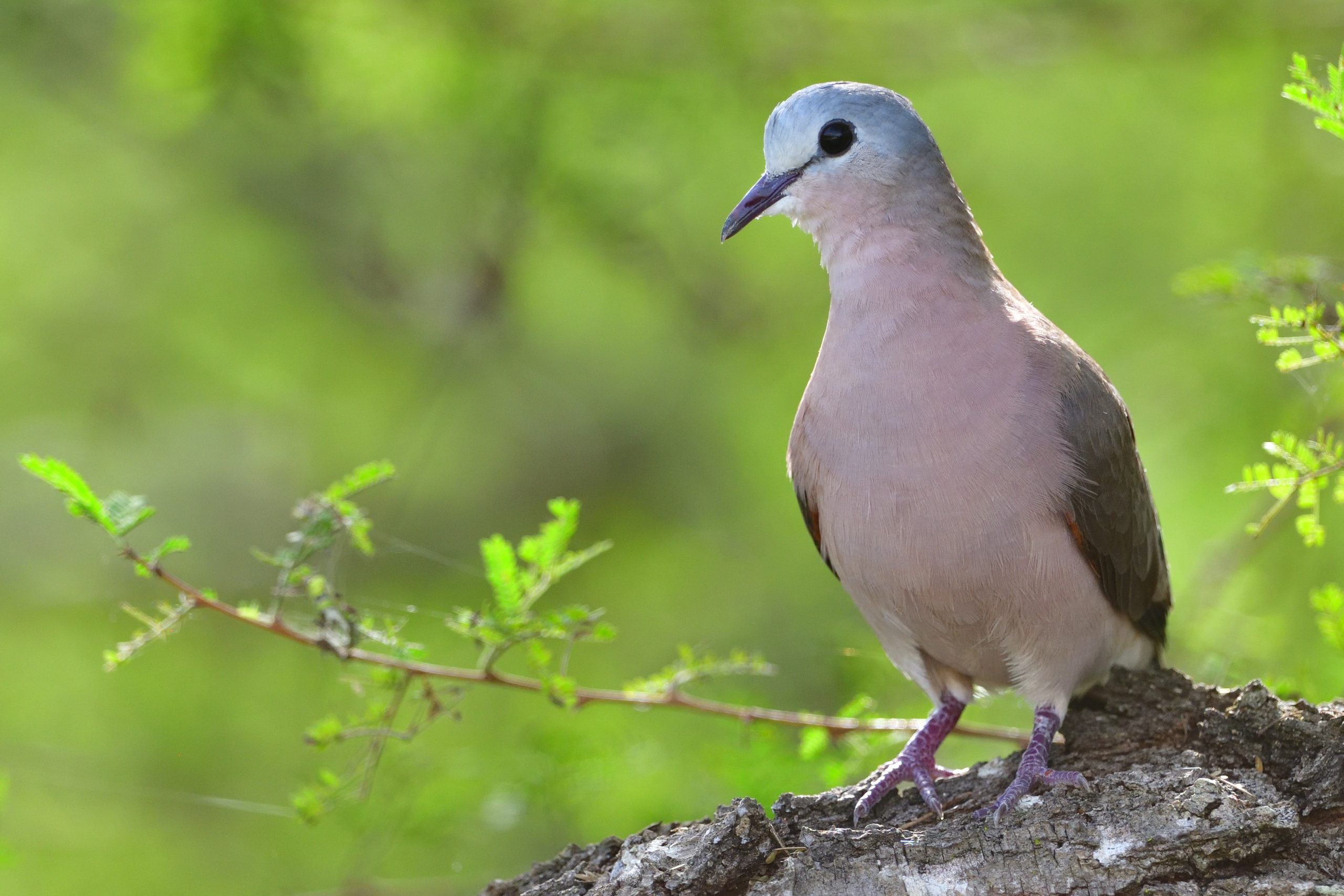
Emerald-spotted Wood-Dove, Turtur chalcospilos
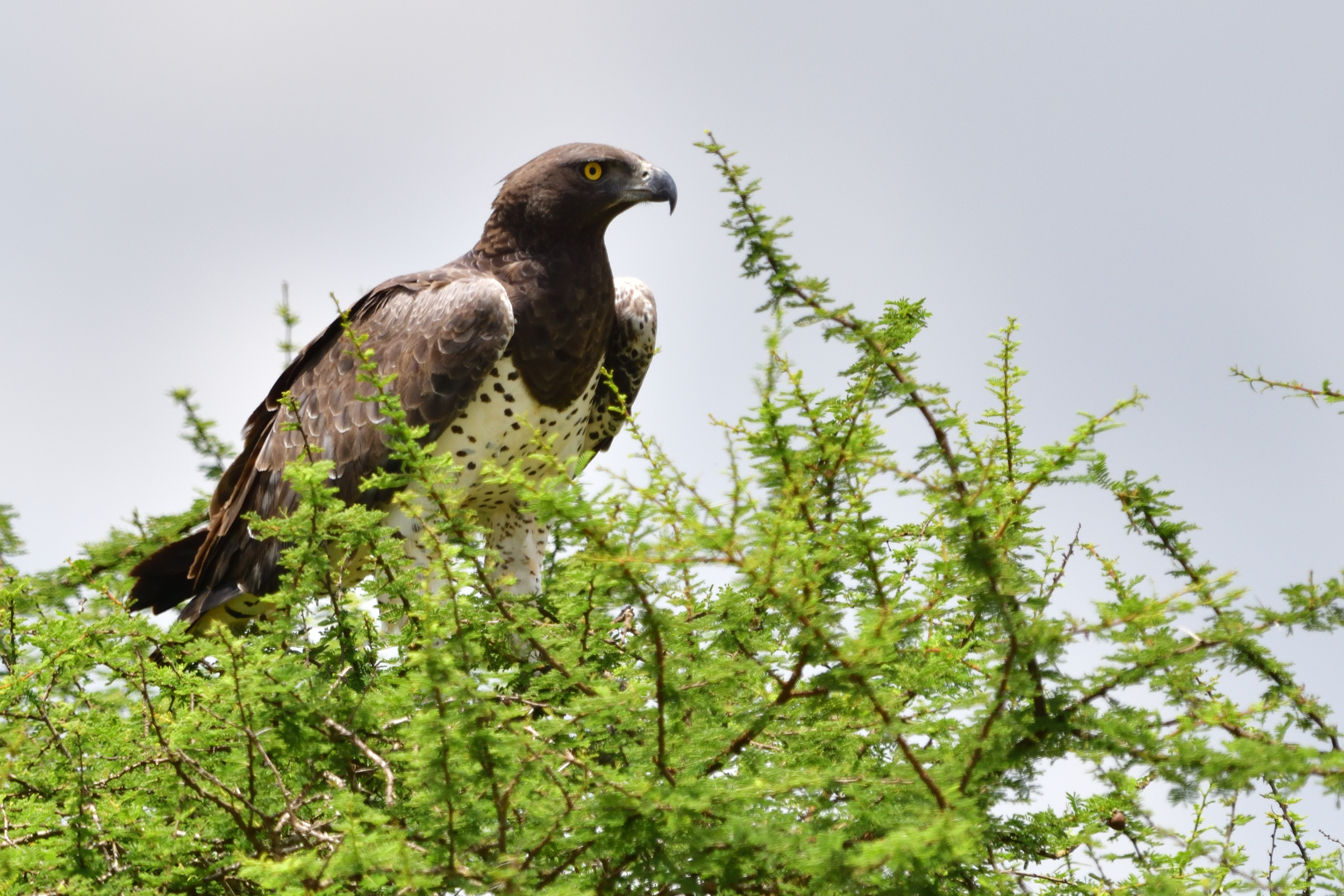
Martial Eagle, Polemaetus bellicosus
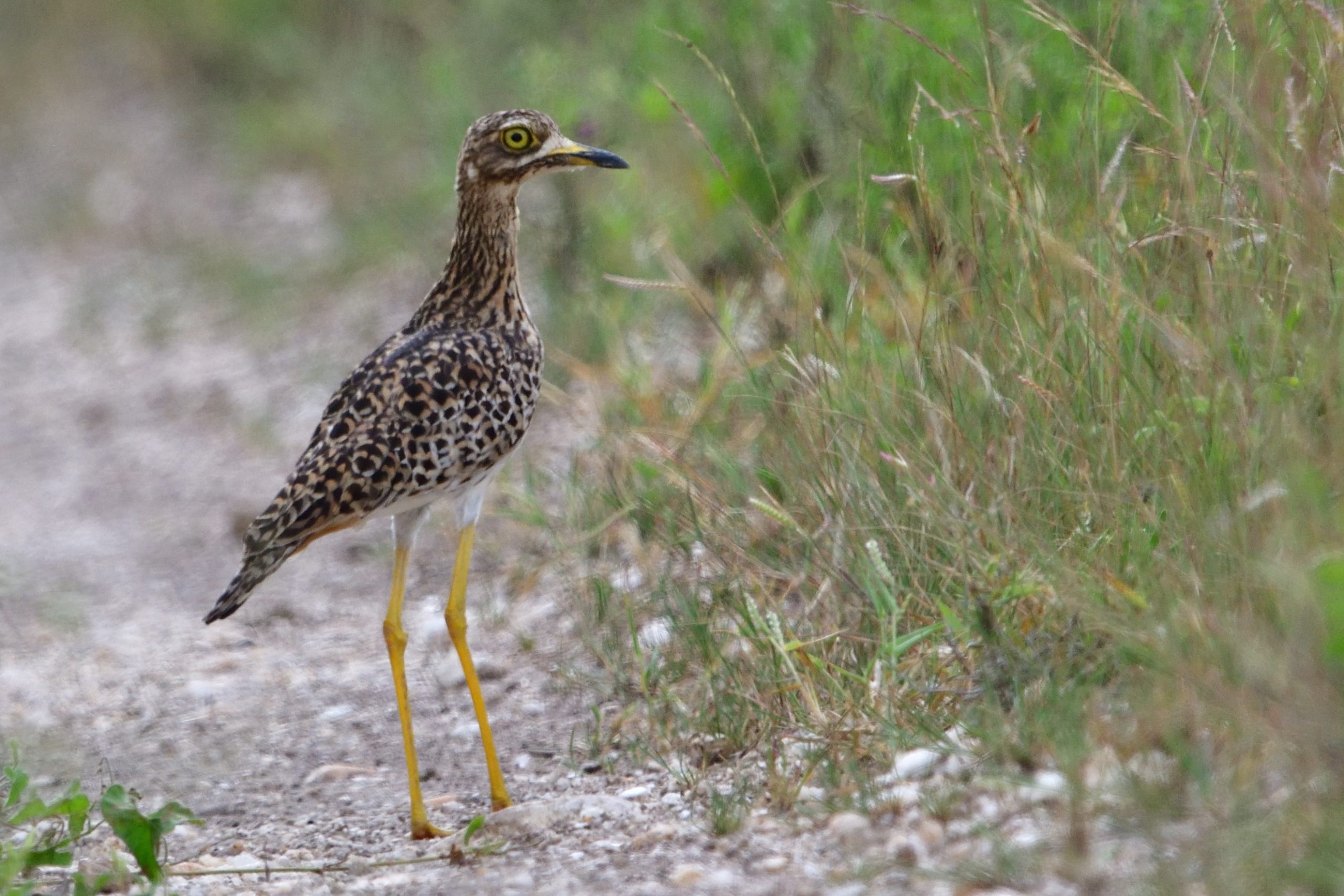
Spotted Thick-knee, Burhinus capensis
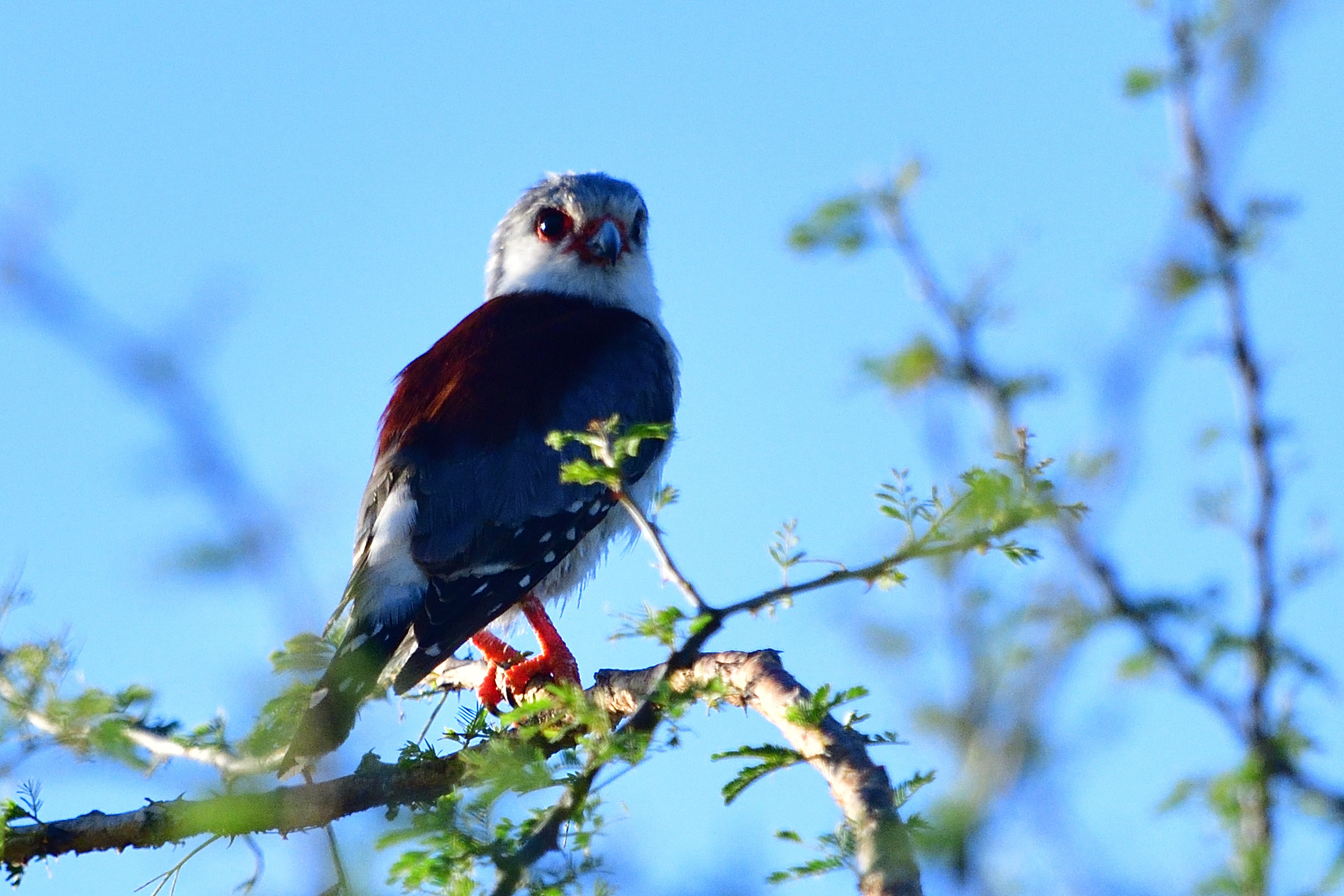
African Pygmy Falcon, Polihierax semitorquatus
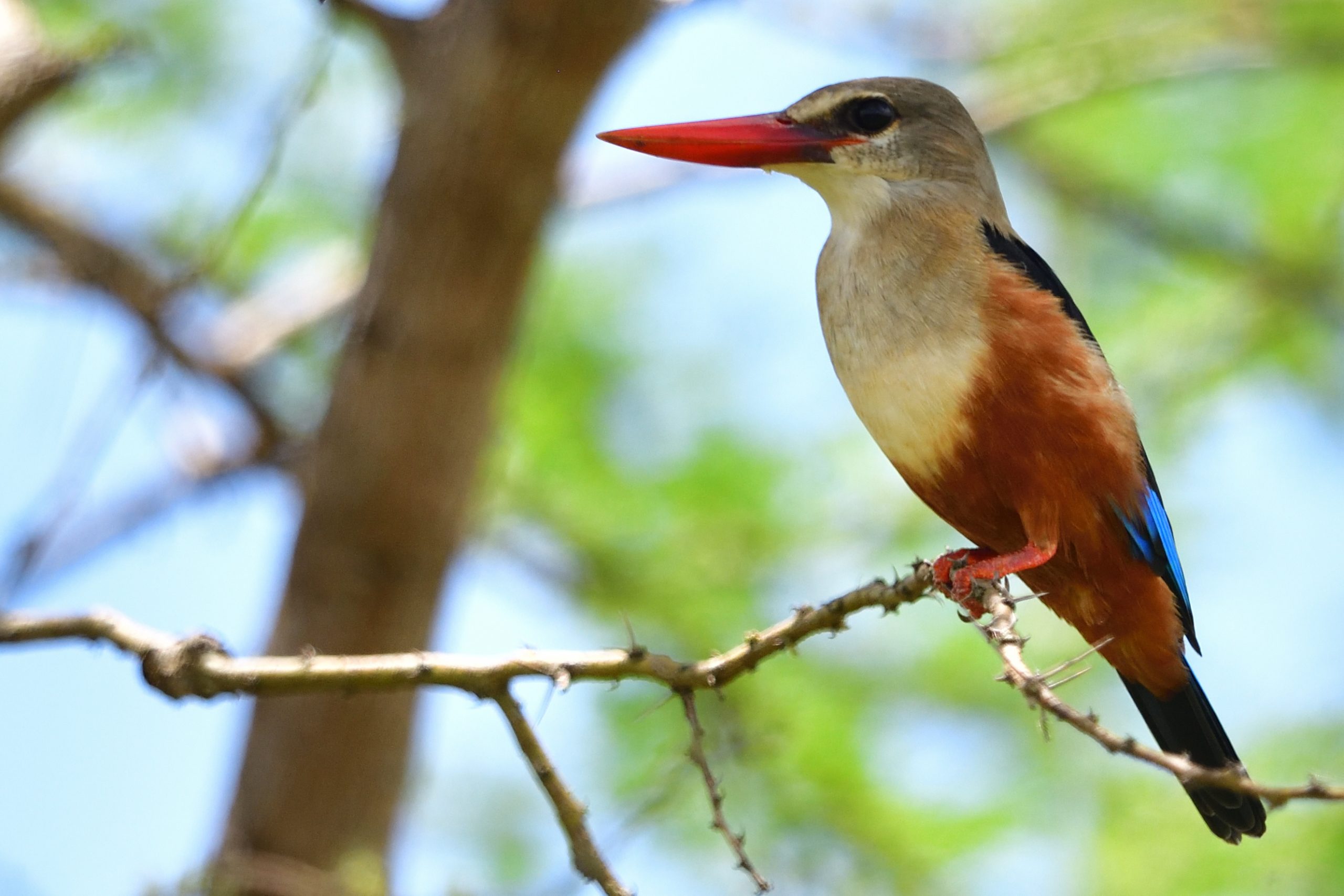
Grey-headed Kingfisher, Halcyon leucocephala
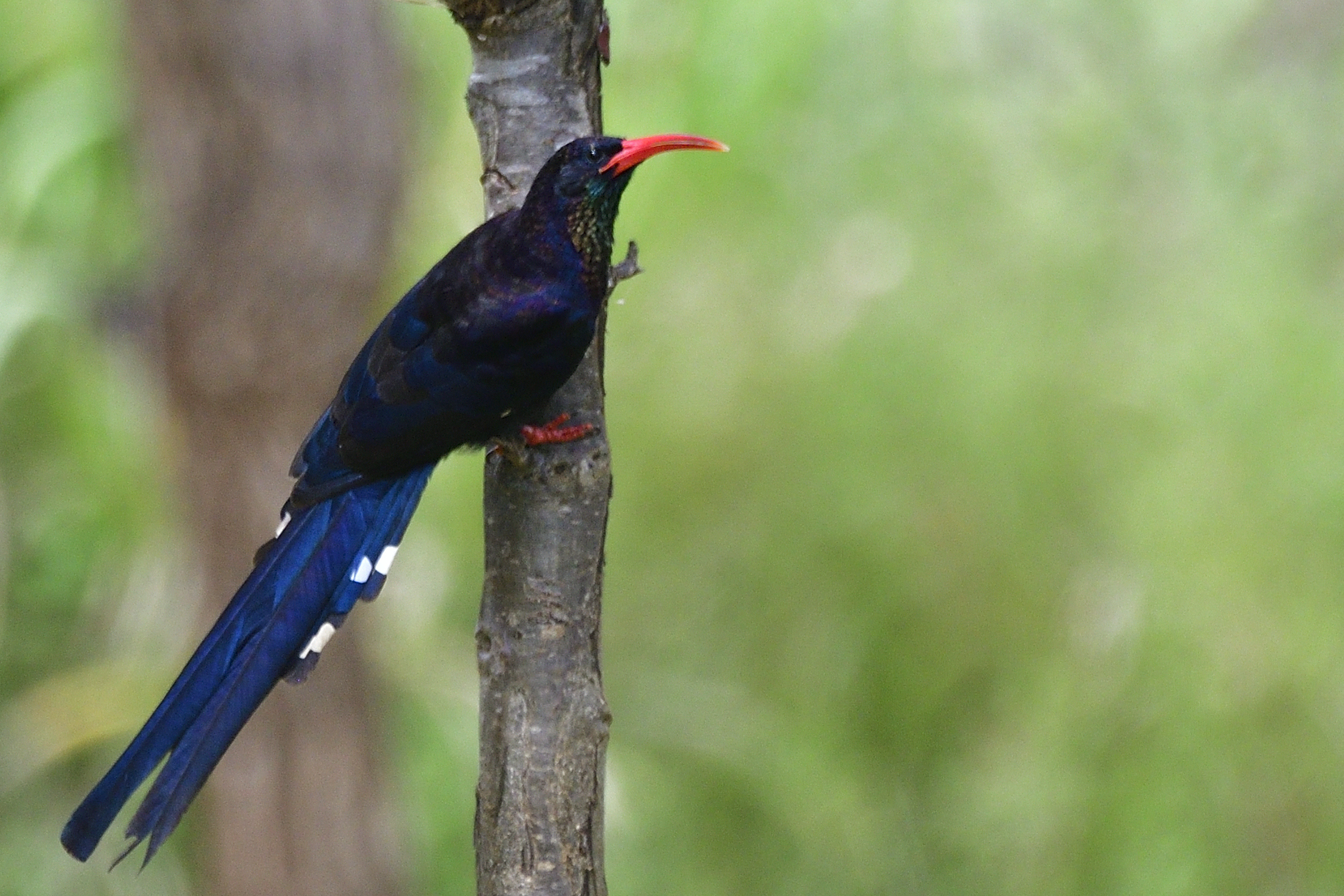
Green Wood-Hoopoe, Phoniculus purpureus
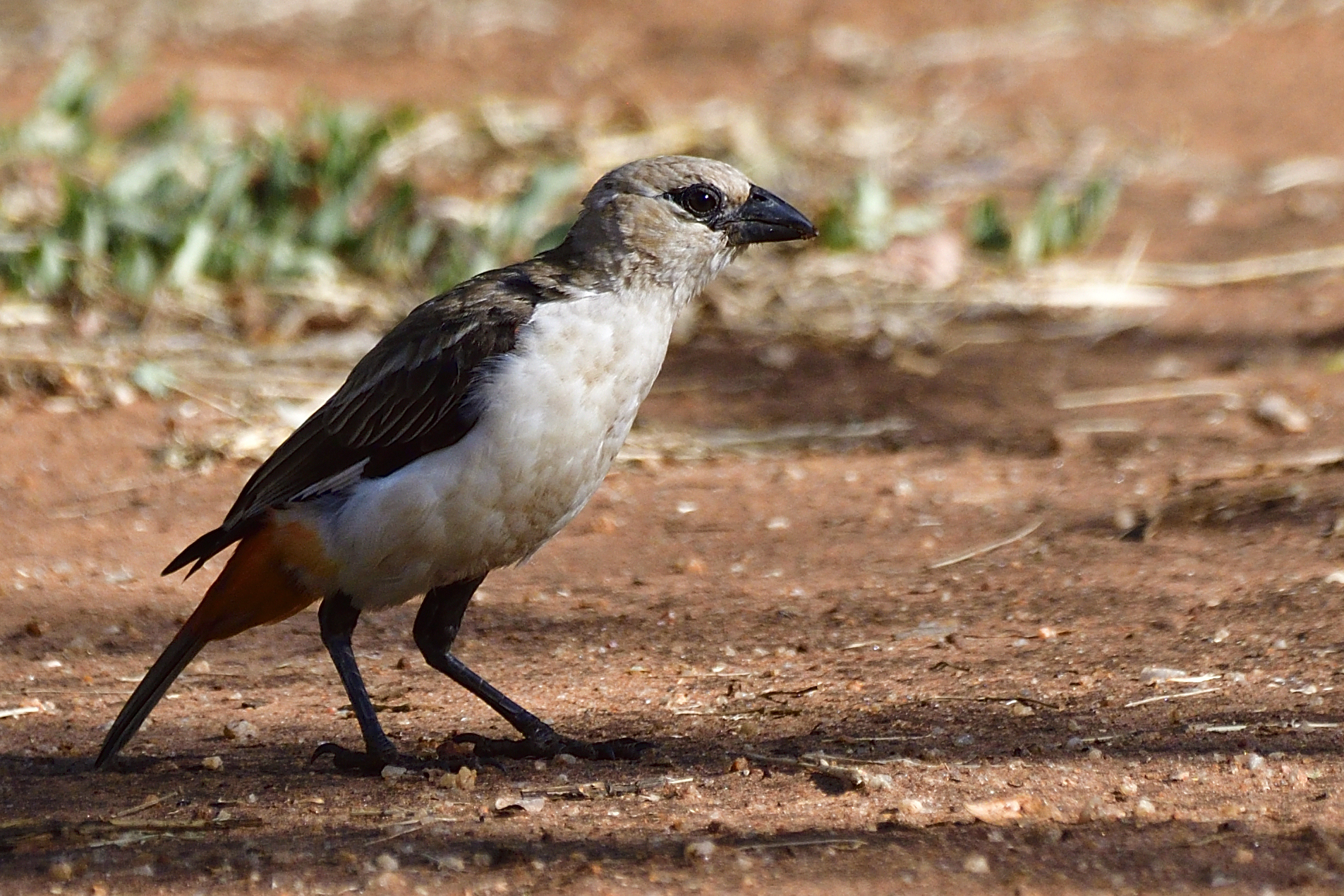
White-headed Buffalo-Weaver, Dinemellia dinemelli – Endemic to NE Africa
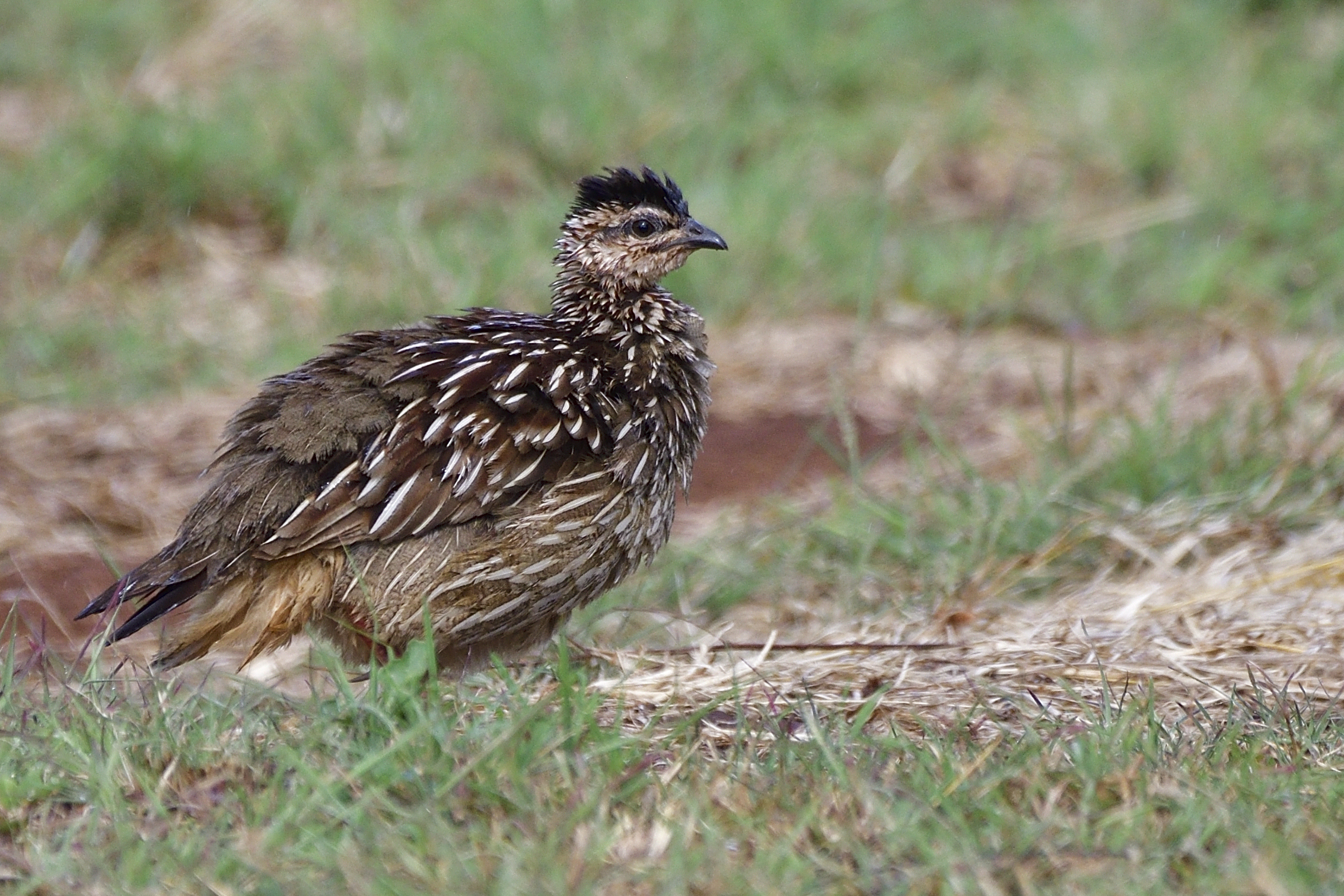
Crested Francolin, Dendroperdix sephaena
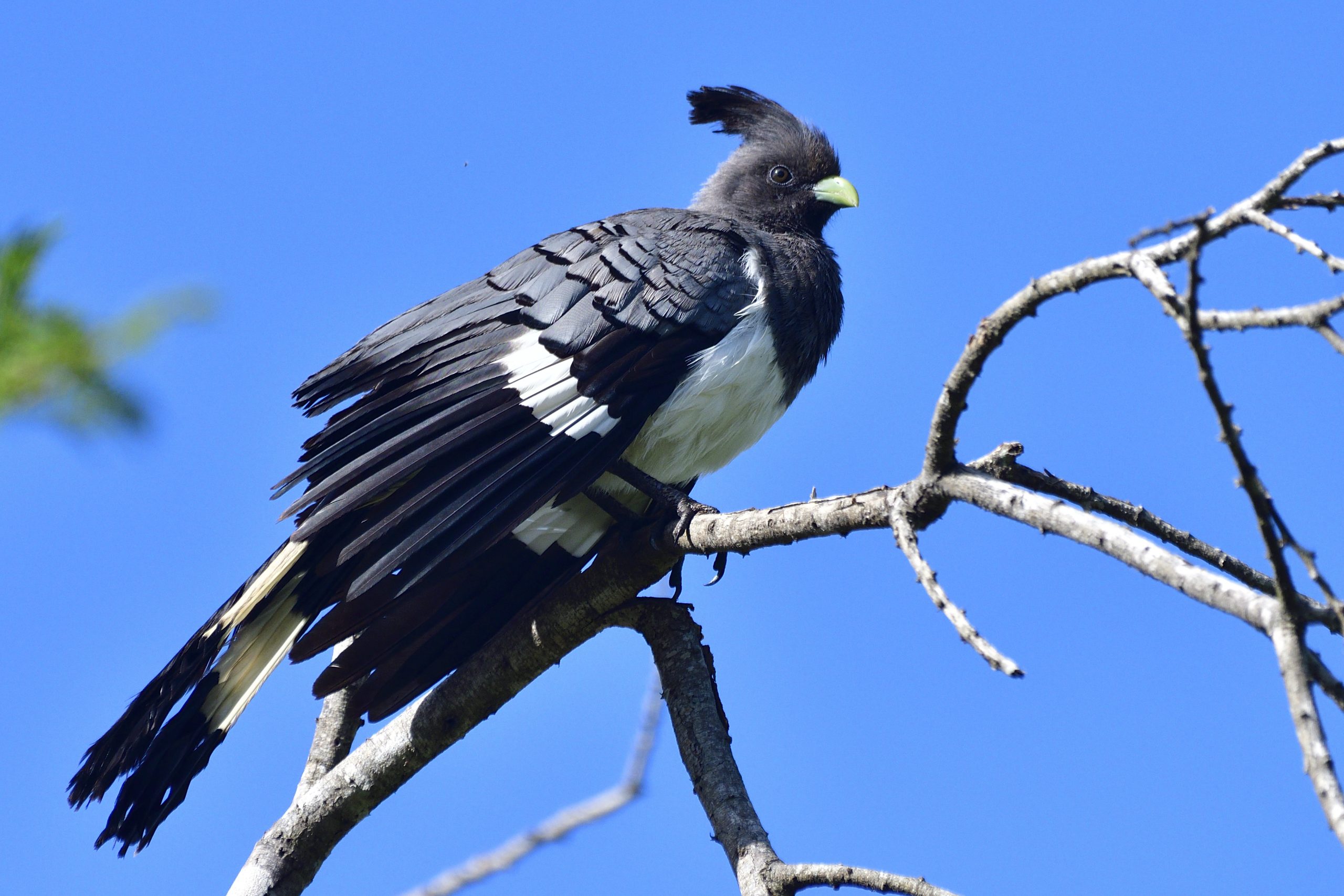
White-bellied Go-away-bird, Corythaixoides leucogaster – Endemic to NE Africa
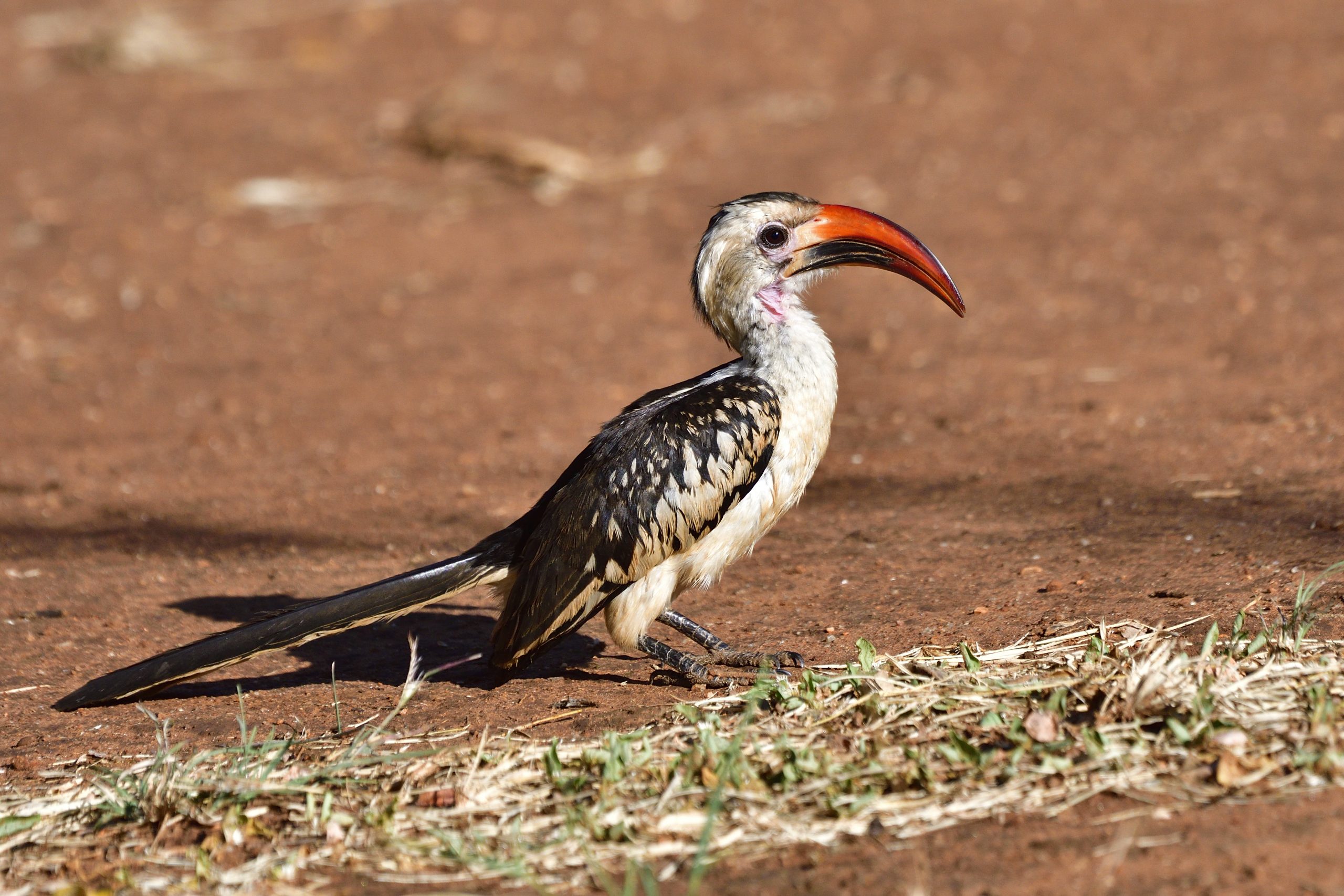
Northern Red-billed Hornbill, Tockus Erythrorhynchus
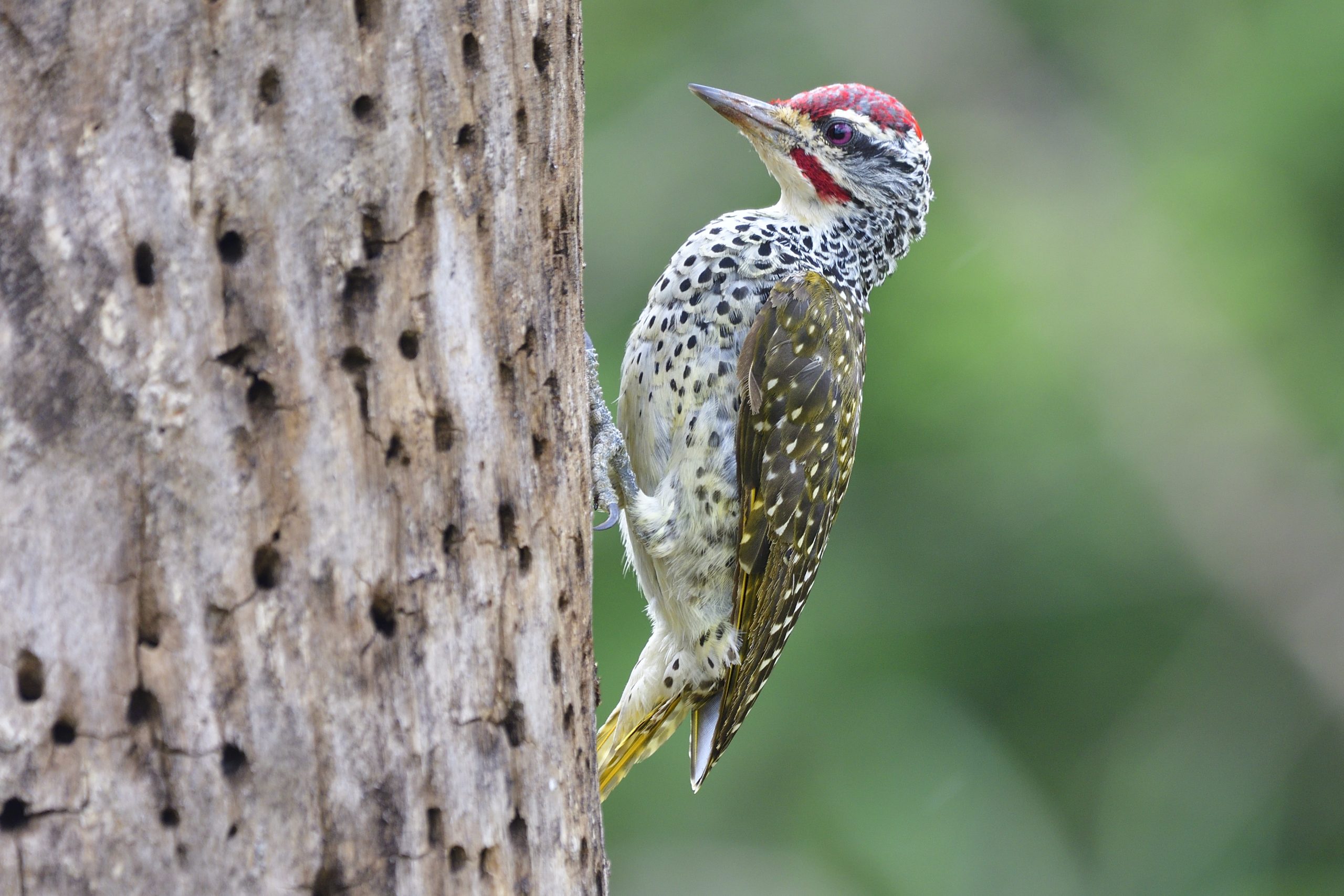
Nubian Woodpecker, Campethera nubica – Endemic to NE Africa
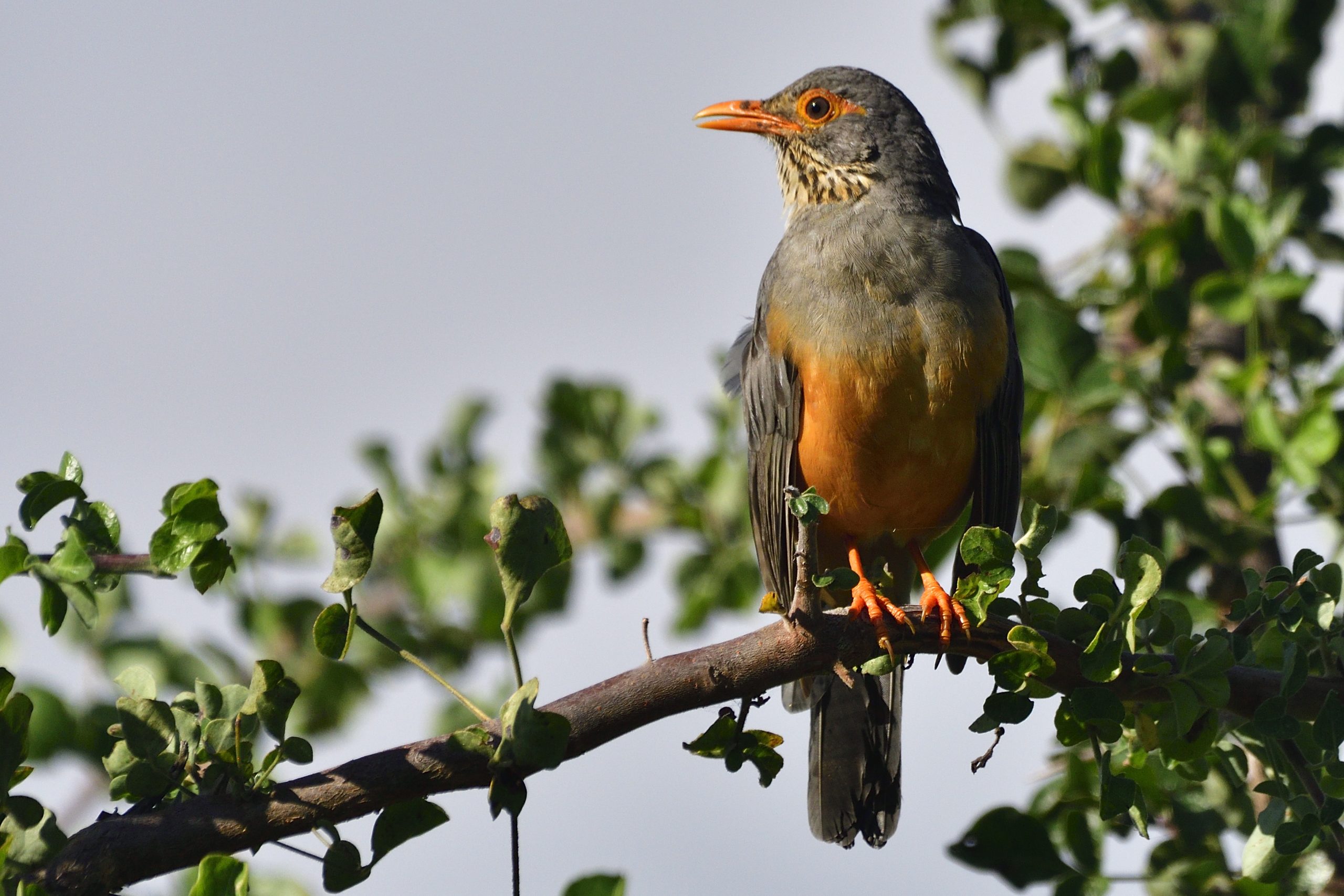
Bare-eyed Thrush, Turdus tephronotus – Endemic to NE Africa
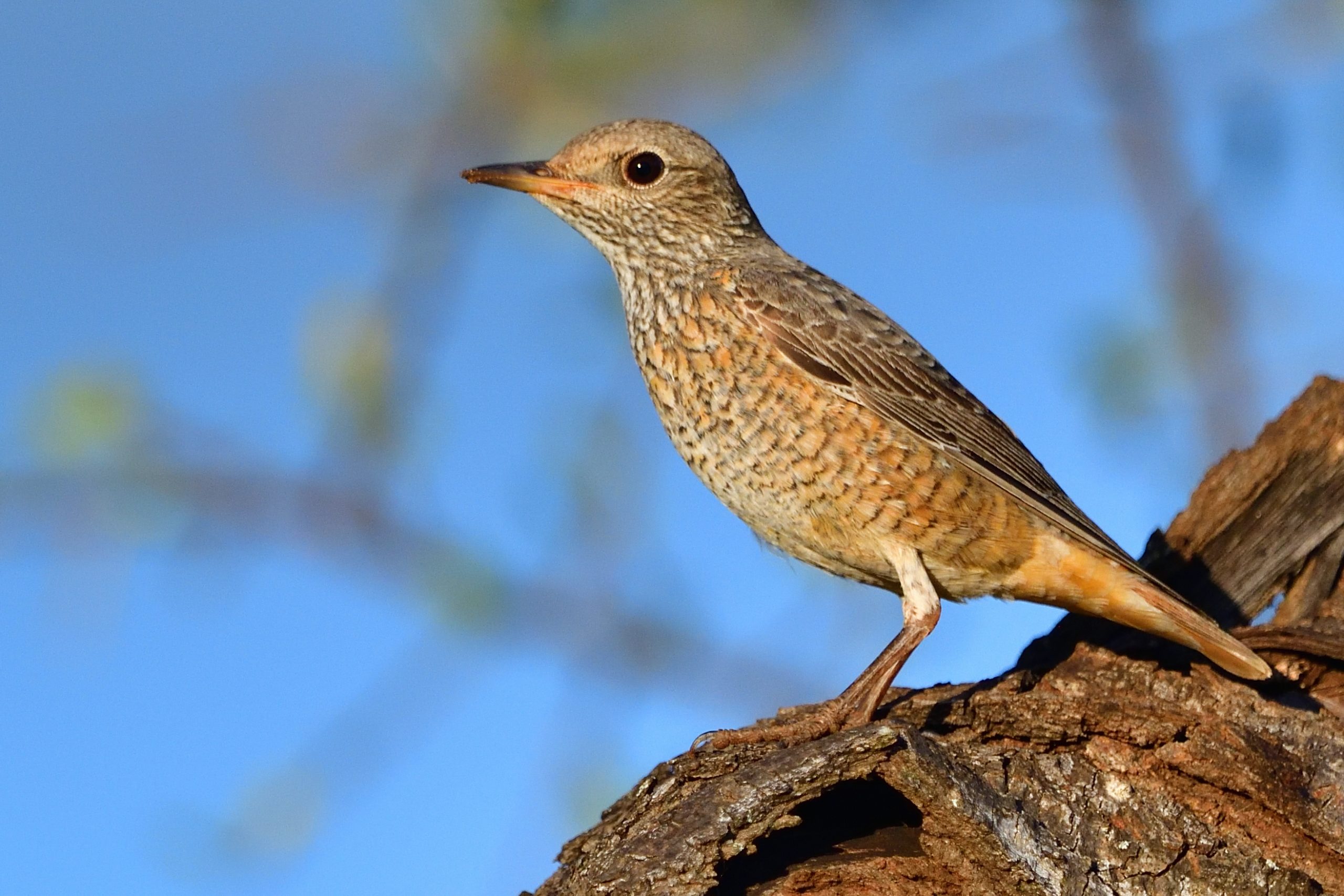
Common Rock Thrush (Female), Monticola saxatilis
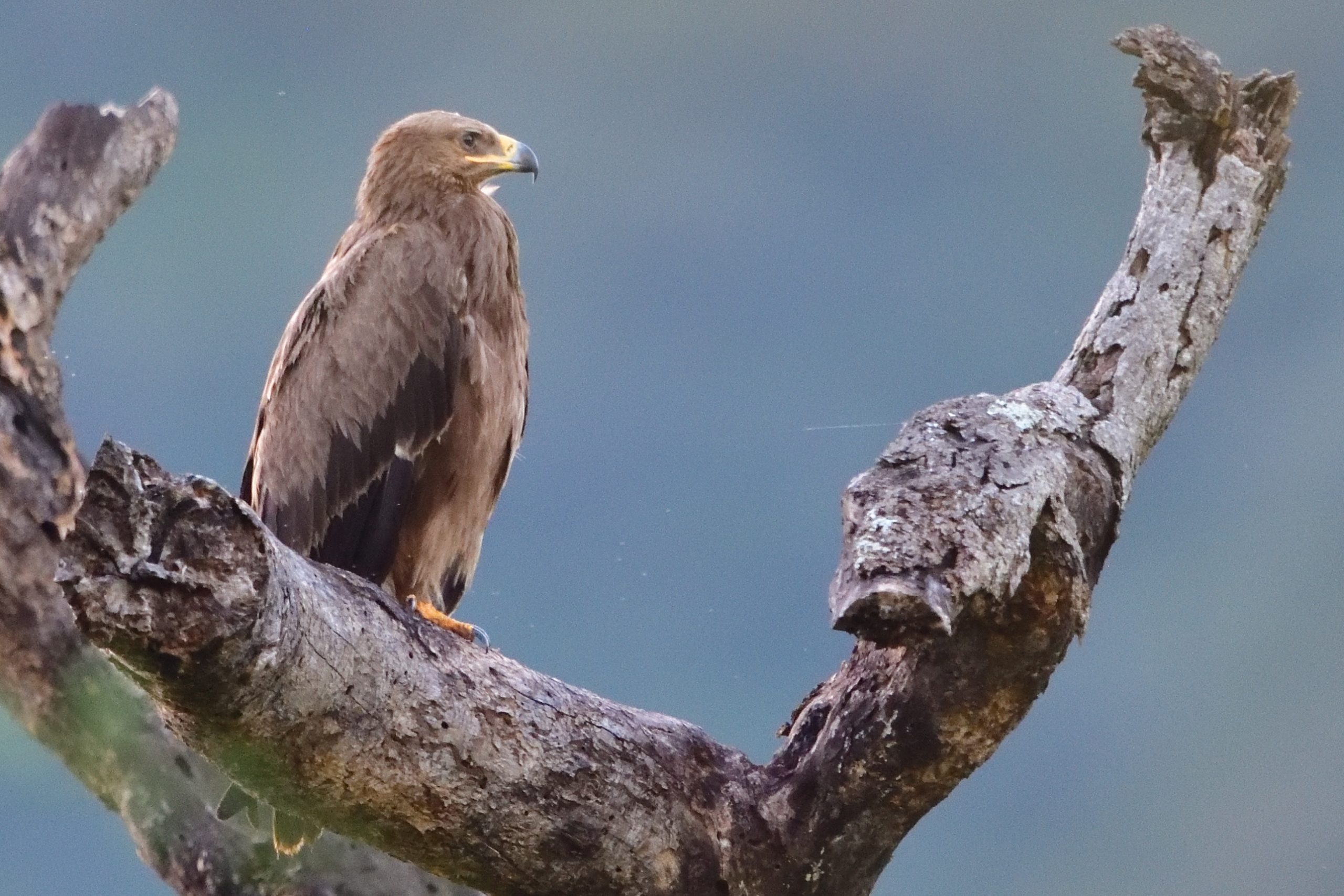
Steppe Eagle, Aquila nipalensis
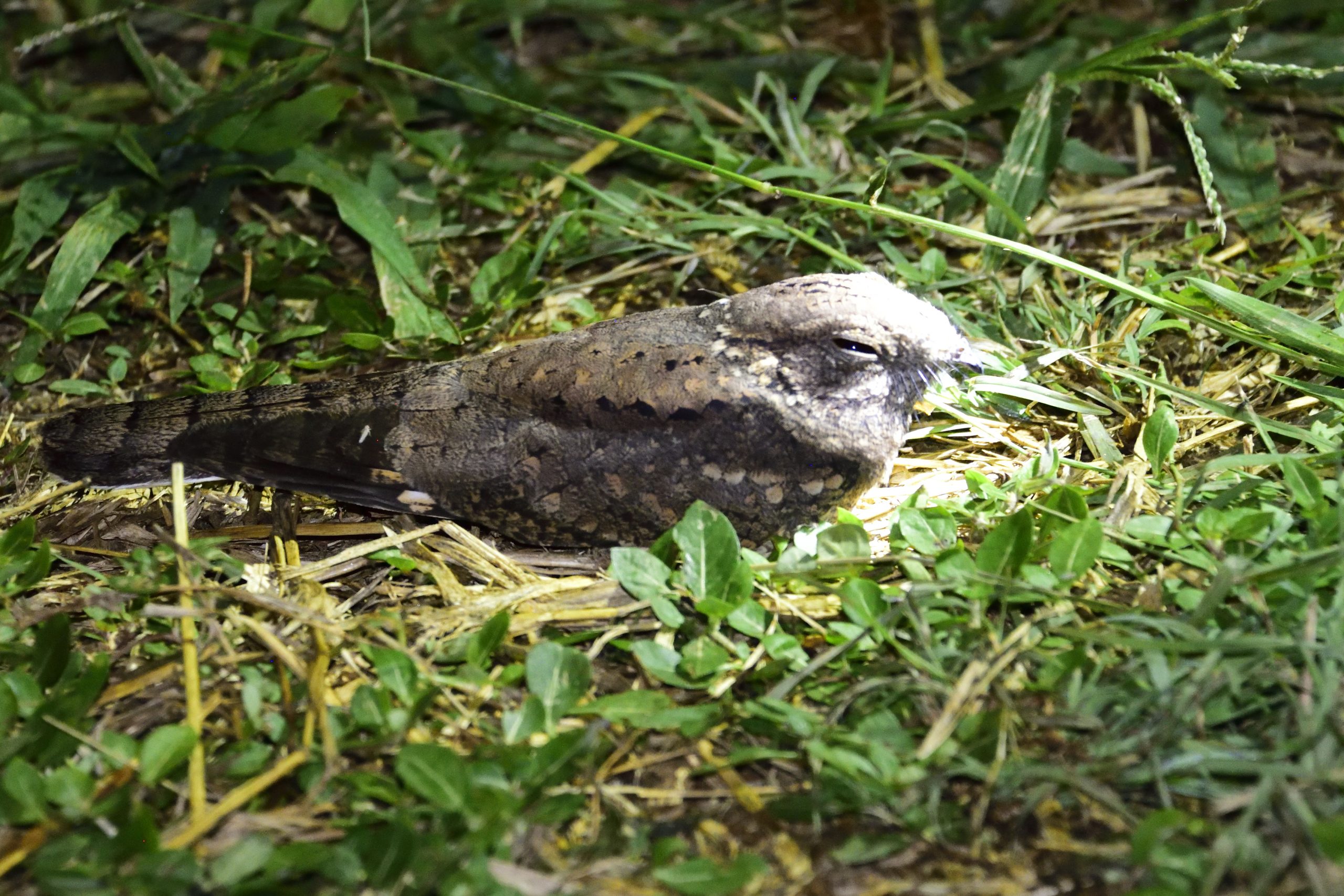
Plain Nightjar, Caprimulgus inornatus – Lifer
Day 5, Monday, February 17: Mkomazi NP
Today, we were finally moving camp. The new ranger had been busy so could only pick us up that day. We planned for a 2 day stay over in a new camp at the old ranger station at Maore at the border to Tsavo West in Kenya. I birded the old camp a little in the morning to get some pictures of common birds. The ranger showed up, we packed the car and was on our way. We were covering a lot of distance that day and drove mostly through areas we had birded before for the first couple of hours so were going quit fast. When we got closer, we started birding and added: Bateleur, Olive Bee-eater, Wattled Starling, Taita Fiscal, Long-crested Eagle, at a dam close to camp we had Secretaerybird, African Fish-Eagle and Southern Ground Hornbill. We came to our camp spot and set up camp. I wandered around a little and found an enclosed area like a Masai Booma. Inside there: Red-tailed Shrike, Somali Bunting, Fischer´s Starling, Red-fronted Prinia (Warbler), Hunter´s Sunbird and D´Arnaud´s Barbet. We had some lunch and started driving a path that went parallel to the Kenyan border: Whinchat, a young male Hartlaub´s Bustard, Harlequin Quail, Rosy-patched Bushshrike, Scaly Chatterer, Black-necked Weaver, Golden-breasted Starling, Vulturine Guineafowl, Tiny Cisticola, Buff-crested Bustard, Pygmy Batis and Steel-blue Whydah. We returned to camp and cooked dinner.
Some pictures from Day 5:
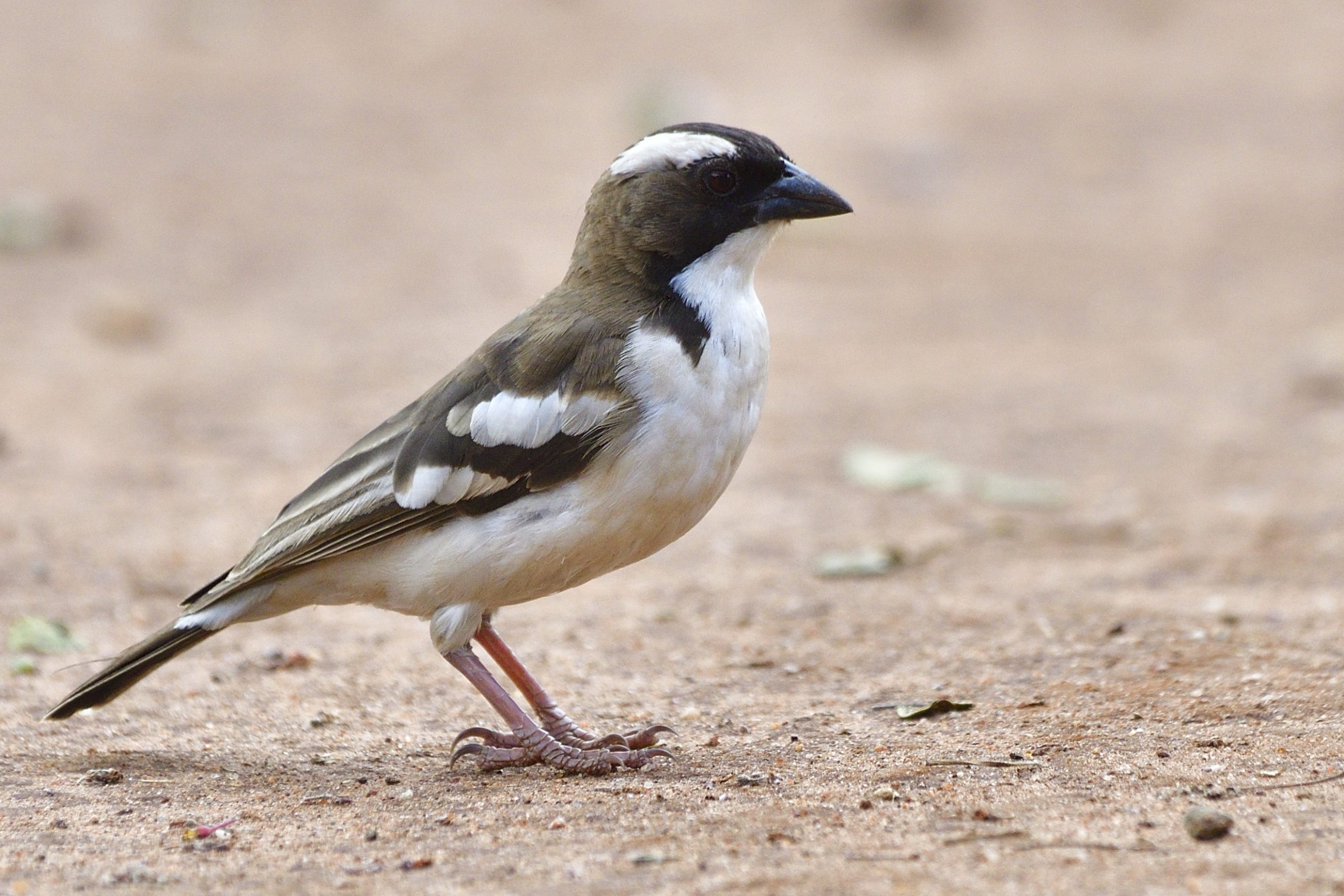
White-browed Sparrow-Weaver, Plocepasser mahali
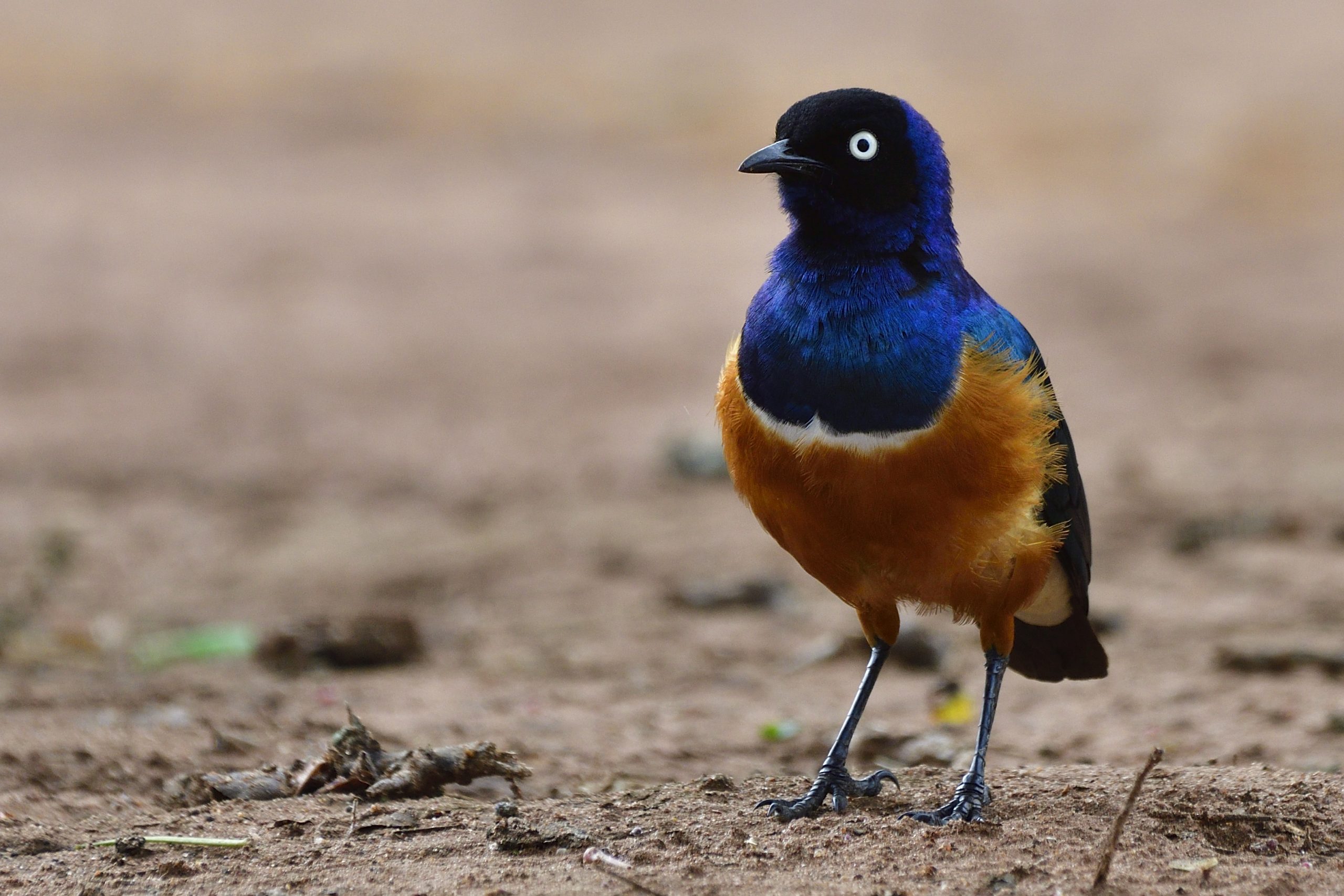
Superb Starling, Lamprotornis superbus – Endemic to NE Africa
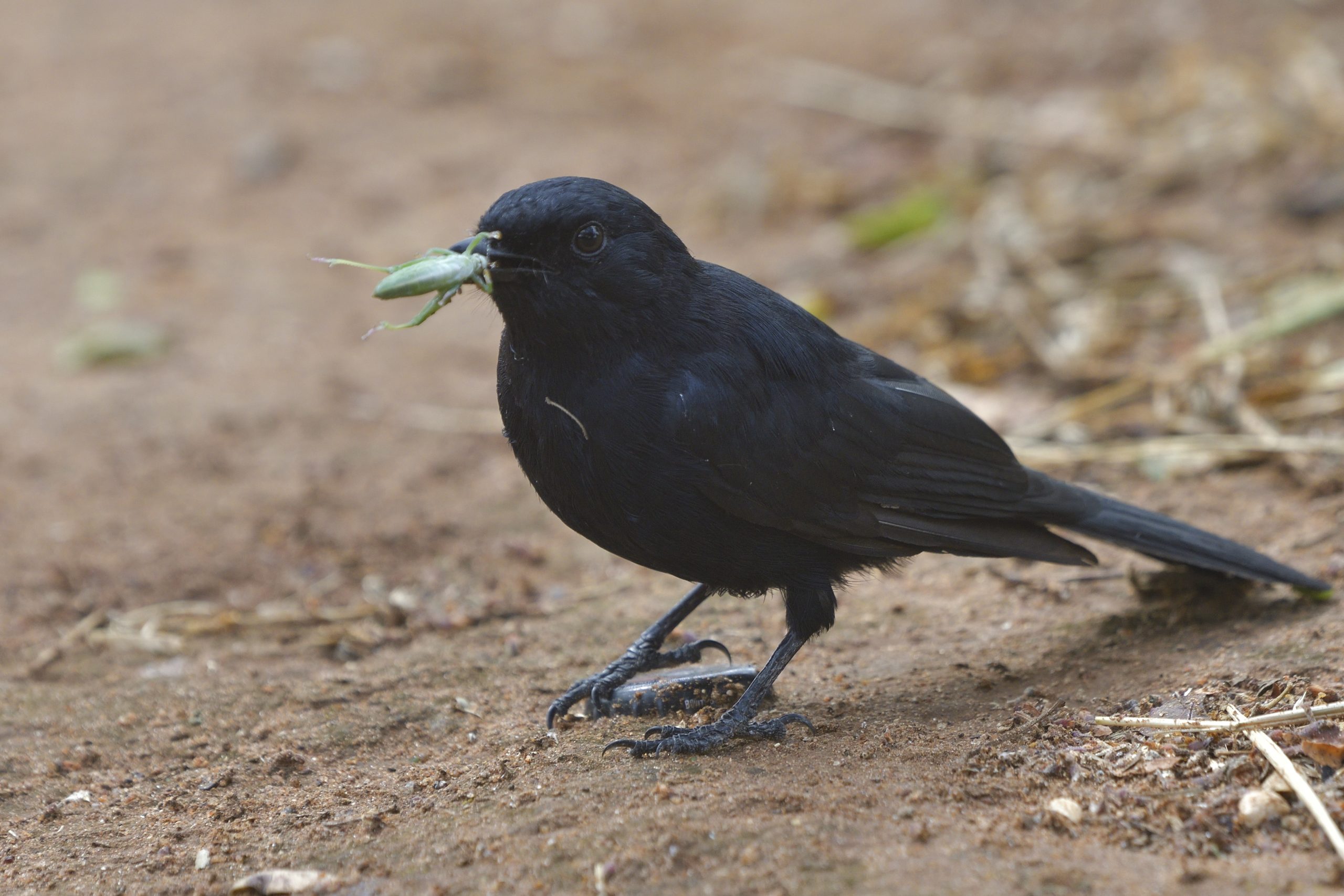
Southern Black Flycatcher, Melaenornis pammelaina
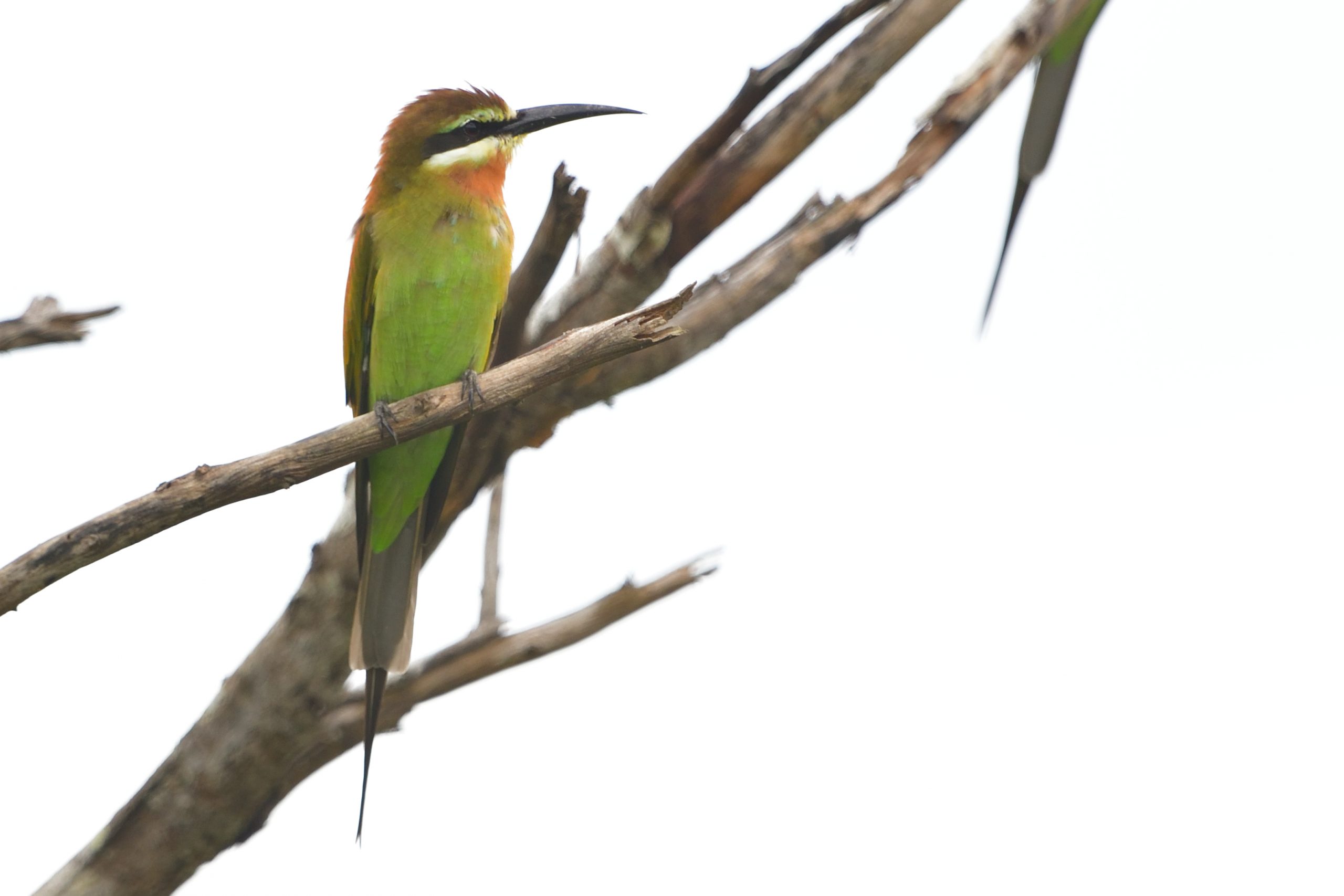
Olive Bee-eater, Merops superciliosus
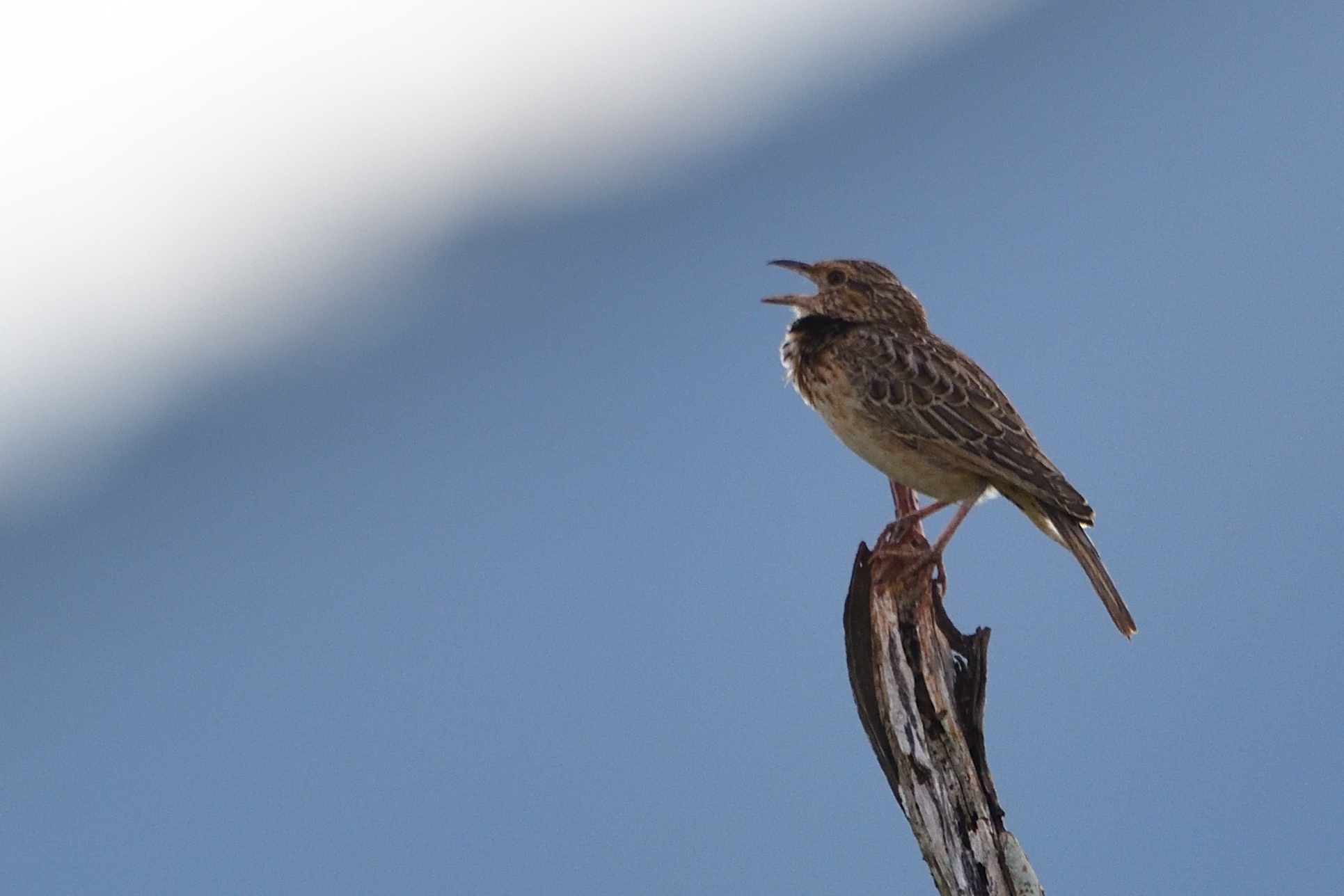
Red-winged Lark, Mirafra hypermetra – Endemic to NE Africa
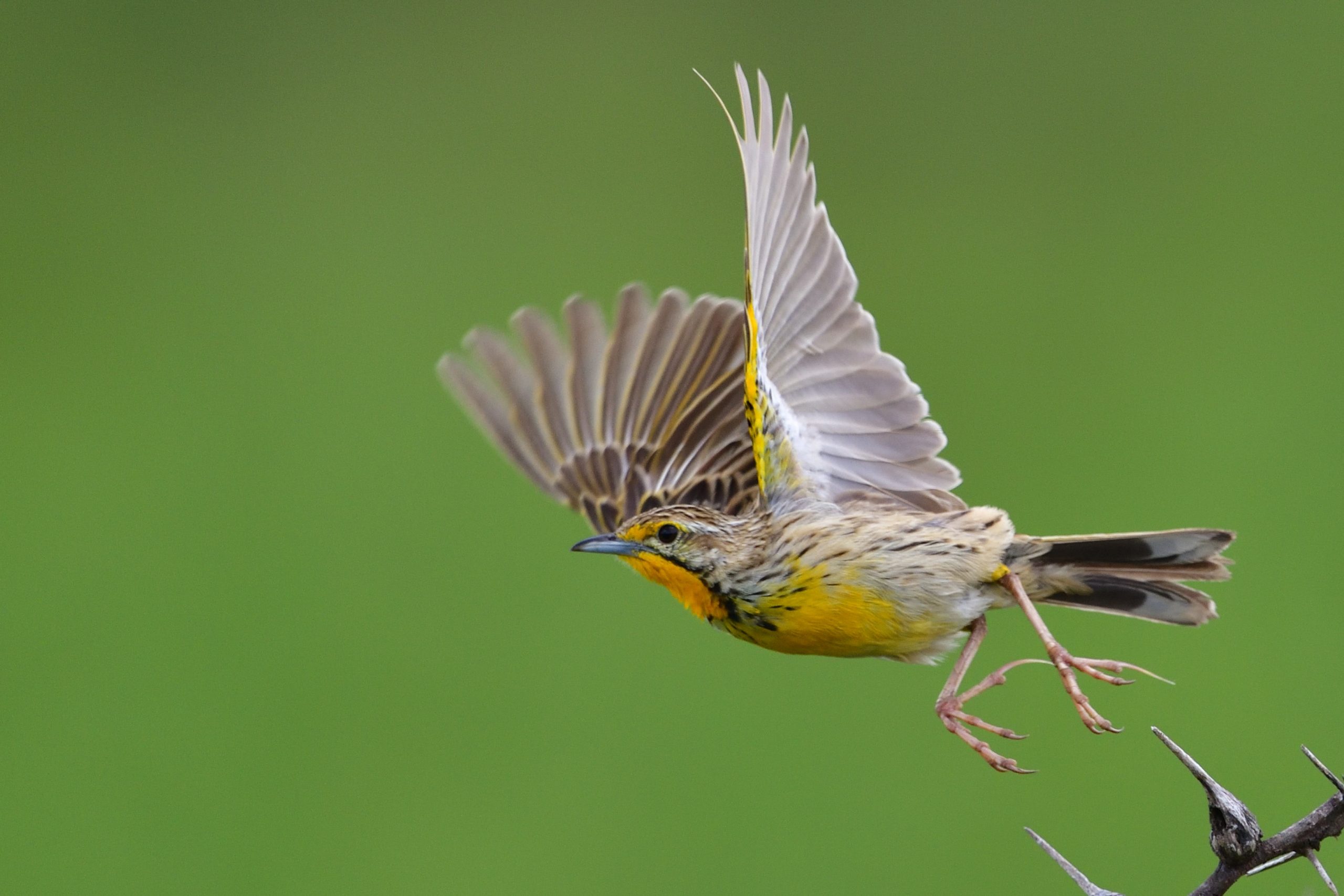
Pangani Longclaw, Macronyx aurantiigula – Endemic to NE Africa
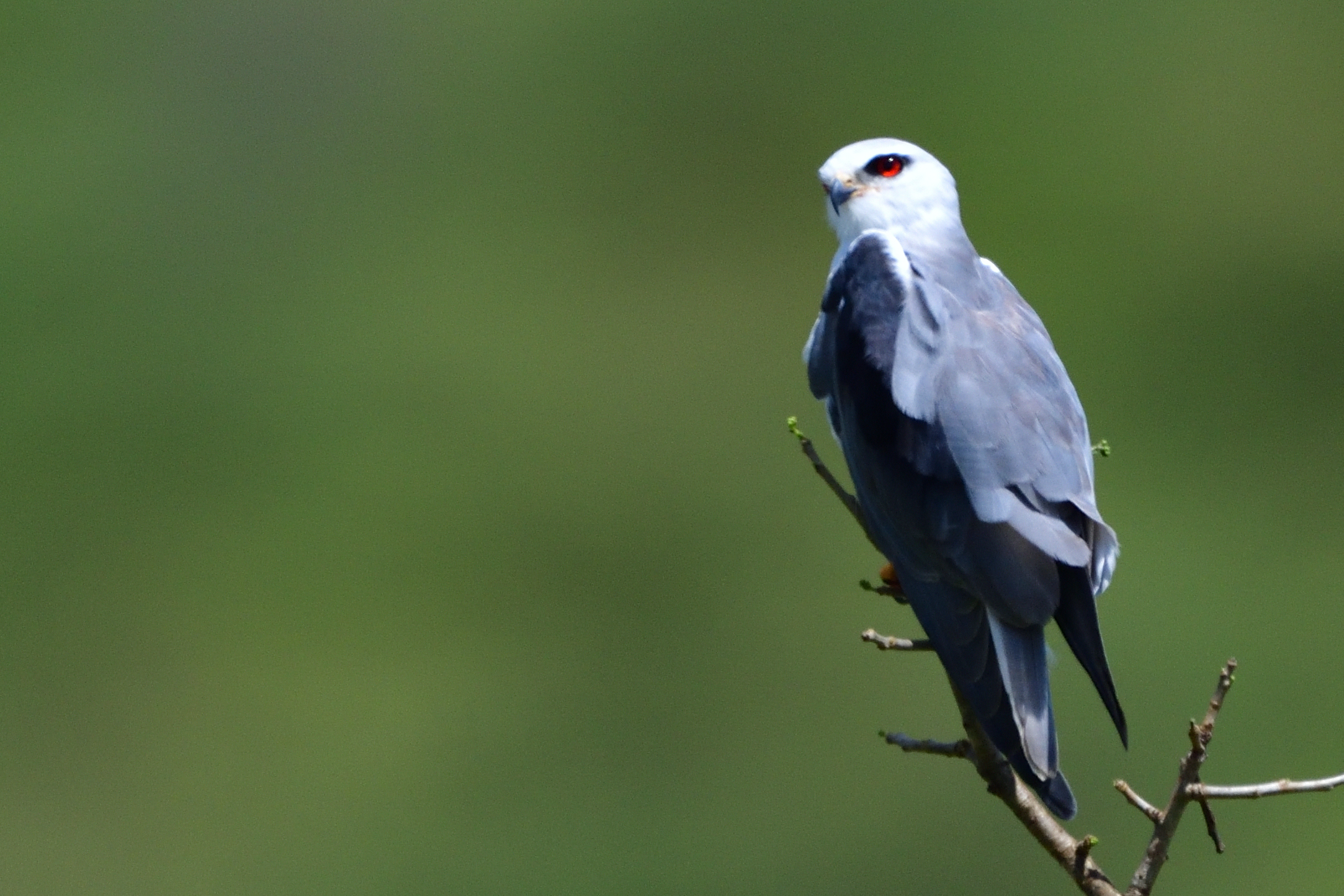
Black-winged Kite, Elanus caeruleus
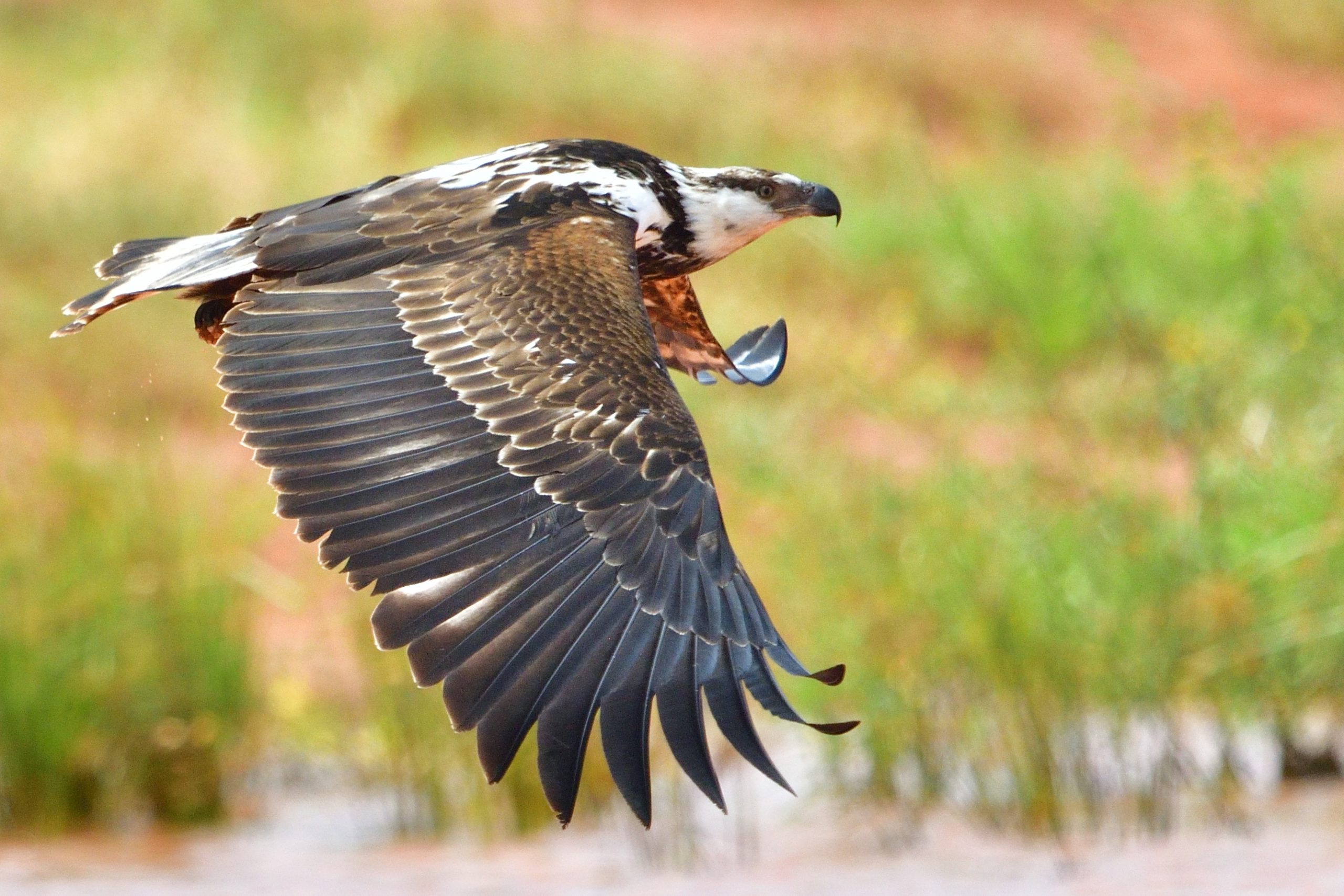
African Fish-Eagle (Juvenile), Haliaeetus vocifer
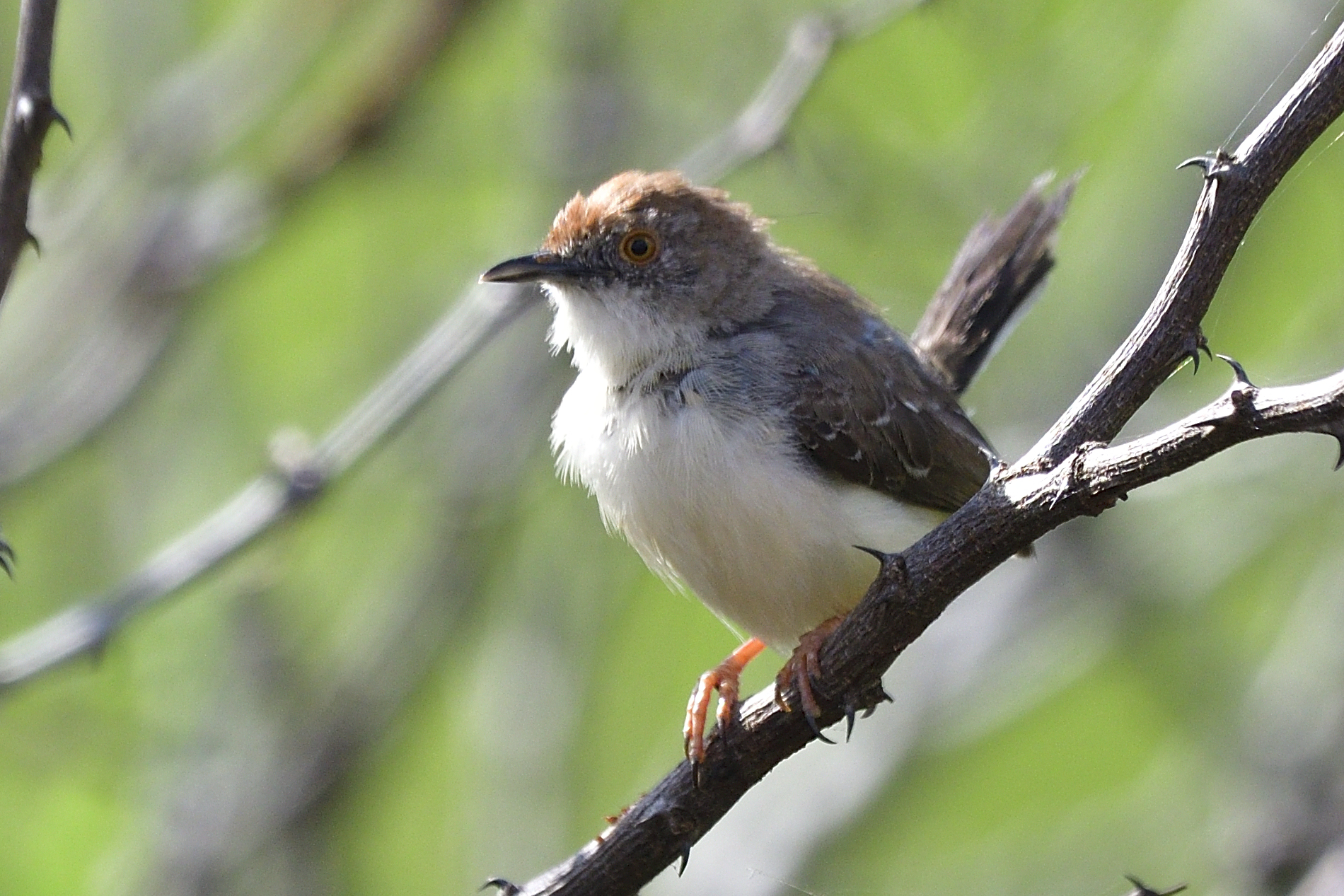
Red-fronted Prinia (Warbler), Urorhipis rufifrons
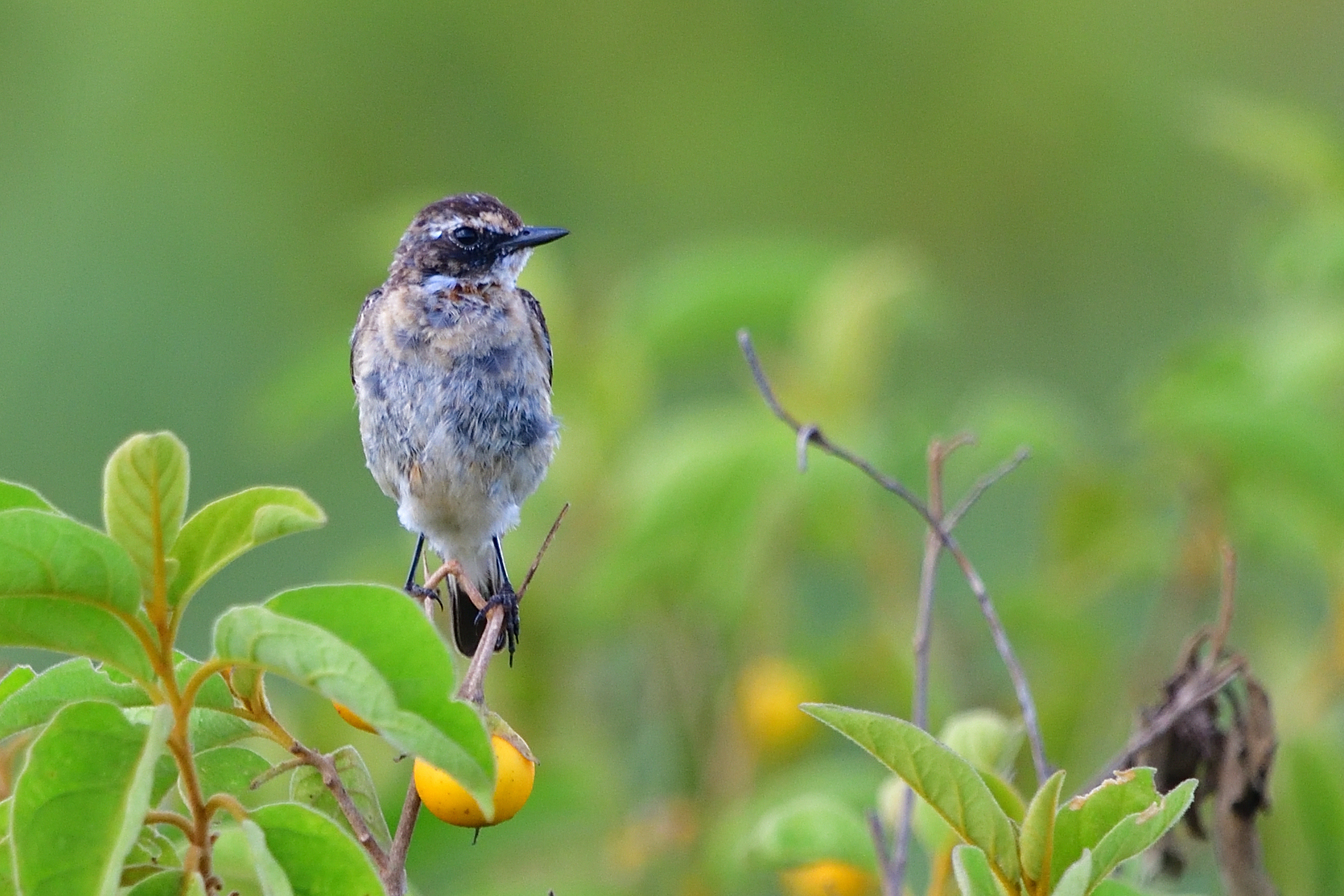
Whinchat, Saxicola rubetra
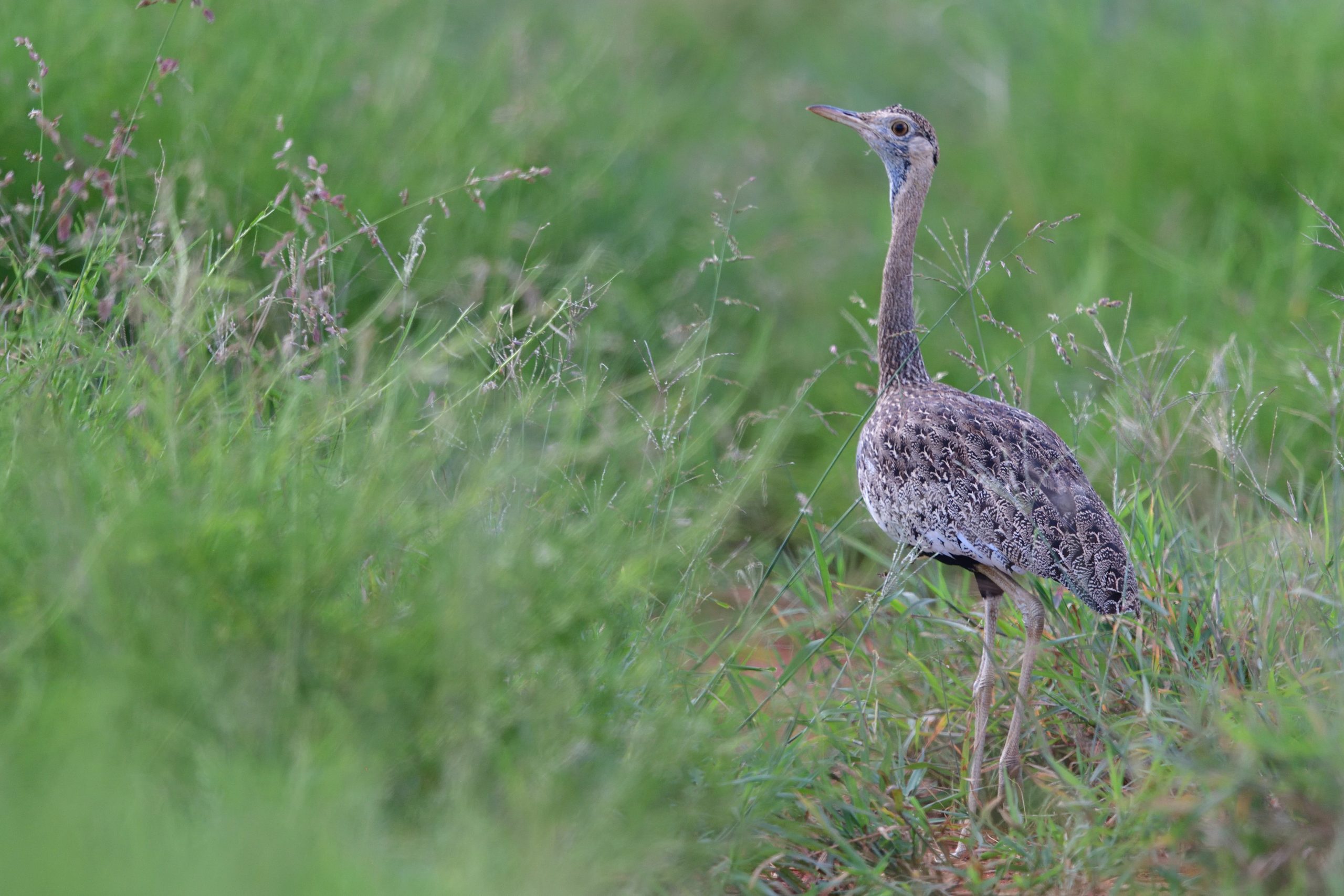
Hartlaub´s Bustard (Youn Male), Lissotis hartlaubii – Endemic to NE Africa
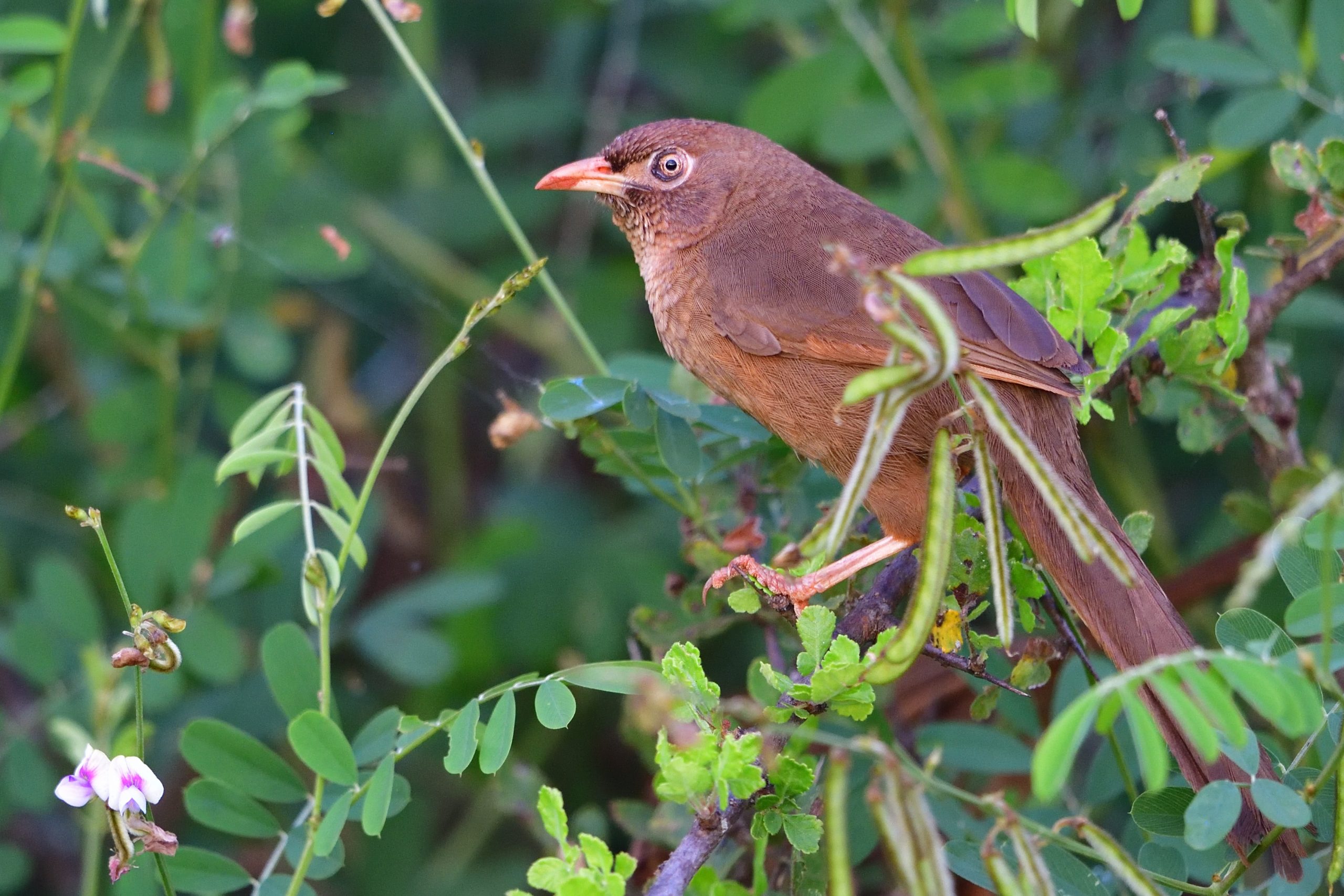
Scaly Chatterer, Turdoides aylmeri – Endemic to NE Africa
Day 6, Tuesday, February 18: Mkomazi NP
We decided to drive along the Kenyan border this morning, but found very few birds. The first new bird of the day was a pair of Egyptian Geese that we found at the waterhole where we had the Fish-Eagle the day before. We drove on and added Gabar Goshawk, African Crake and more Vulturine Guineafowls to our list. After morning birding, we went to the ranger station. They were very nice to us and allowed us to have a shower at their facilities. We returned to camp for some food. On the way we saw both White-bellied and Buff-crested Bustards and Eastern Yellow-billed Hornbill. After lunch, I decided to go back to the “boma” I rigged myself with my 600mm on a tripod and sat in the shade of a tree to wait for birds to come in: Green-winged Pytilia, Northern White-crowned Shrike, Spotted Flycatcher, African Grey Flycatcher, Bushveld Pipit, Grey-headed Silverbill, Long-tailed Paradise Whydah, Northern Crombec, Black-faced Sandgrouse, Spotted Palm Thrush, D´Arnaud´s Barbet and White-bellied Canary was some of the birds recorded. The other went out on a drive in the afternoon, but I was happy with quite a few good pictures. Dinner was prepared and we retired early to bed.
Some pictures from Day 6:
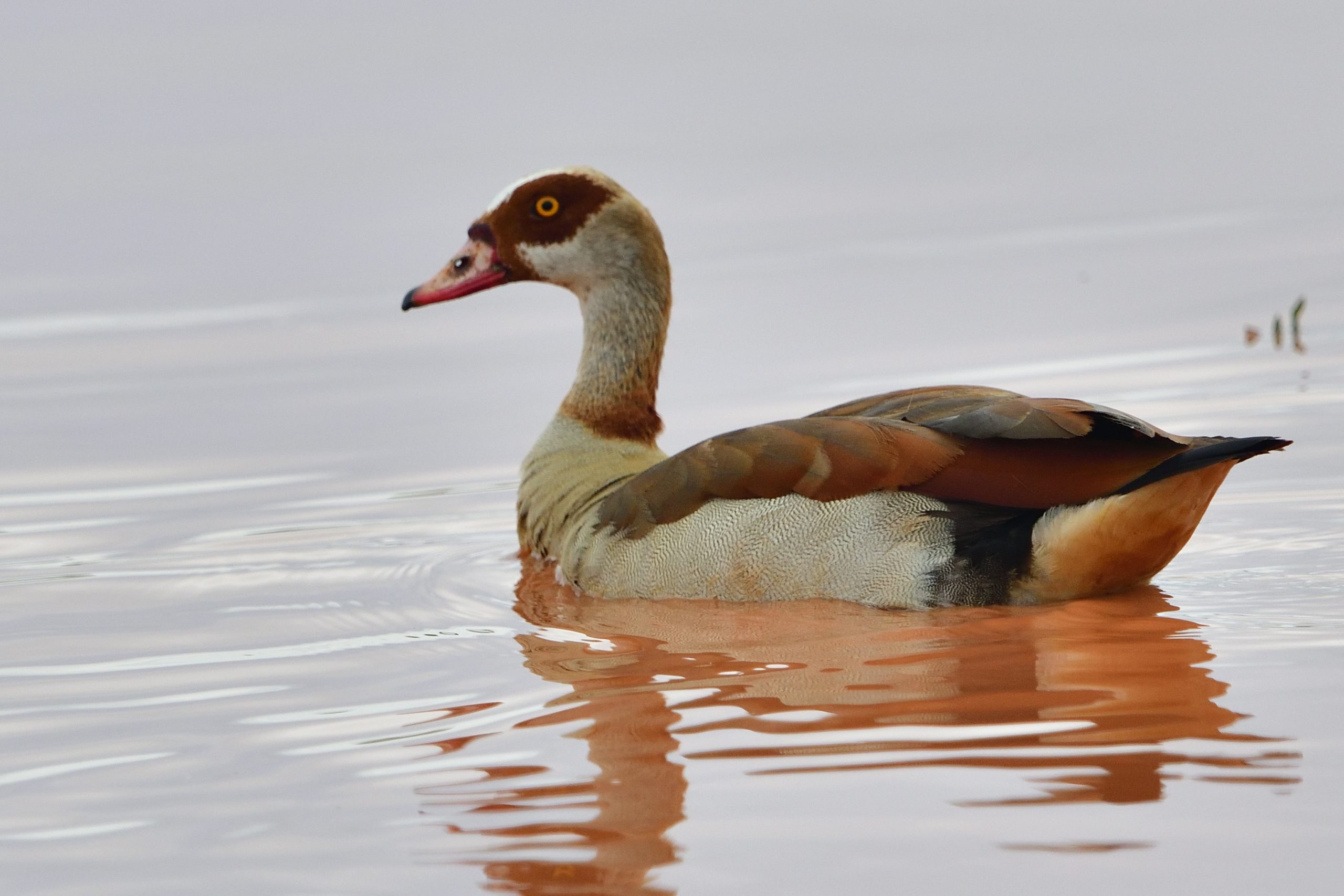
Egyptian Goose, Alopochen aegyptiaca
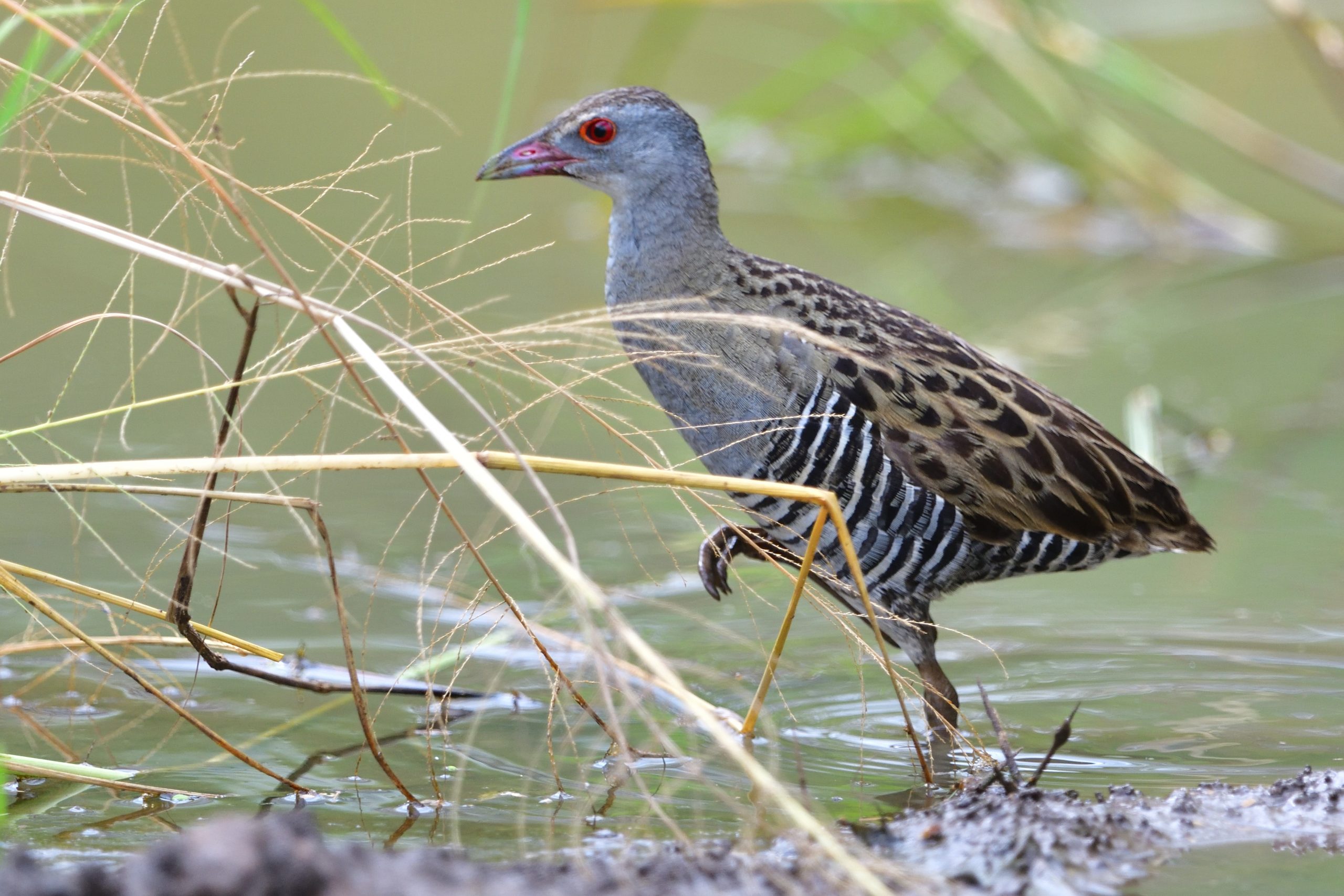
African Crake, Crex egregia
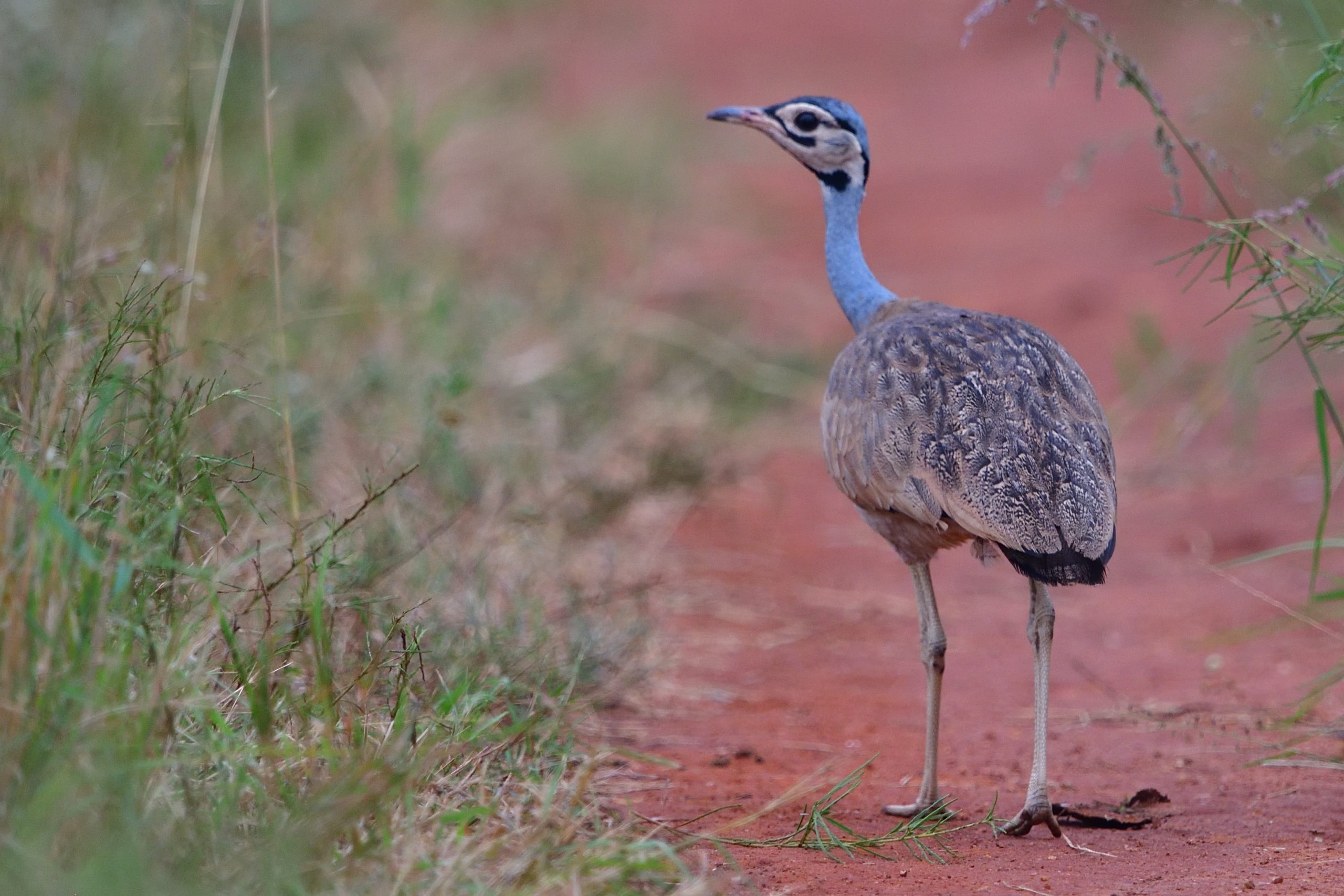
White-bellied Bustard, Eupodotis senegalensis
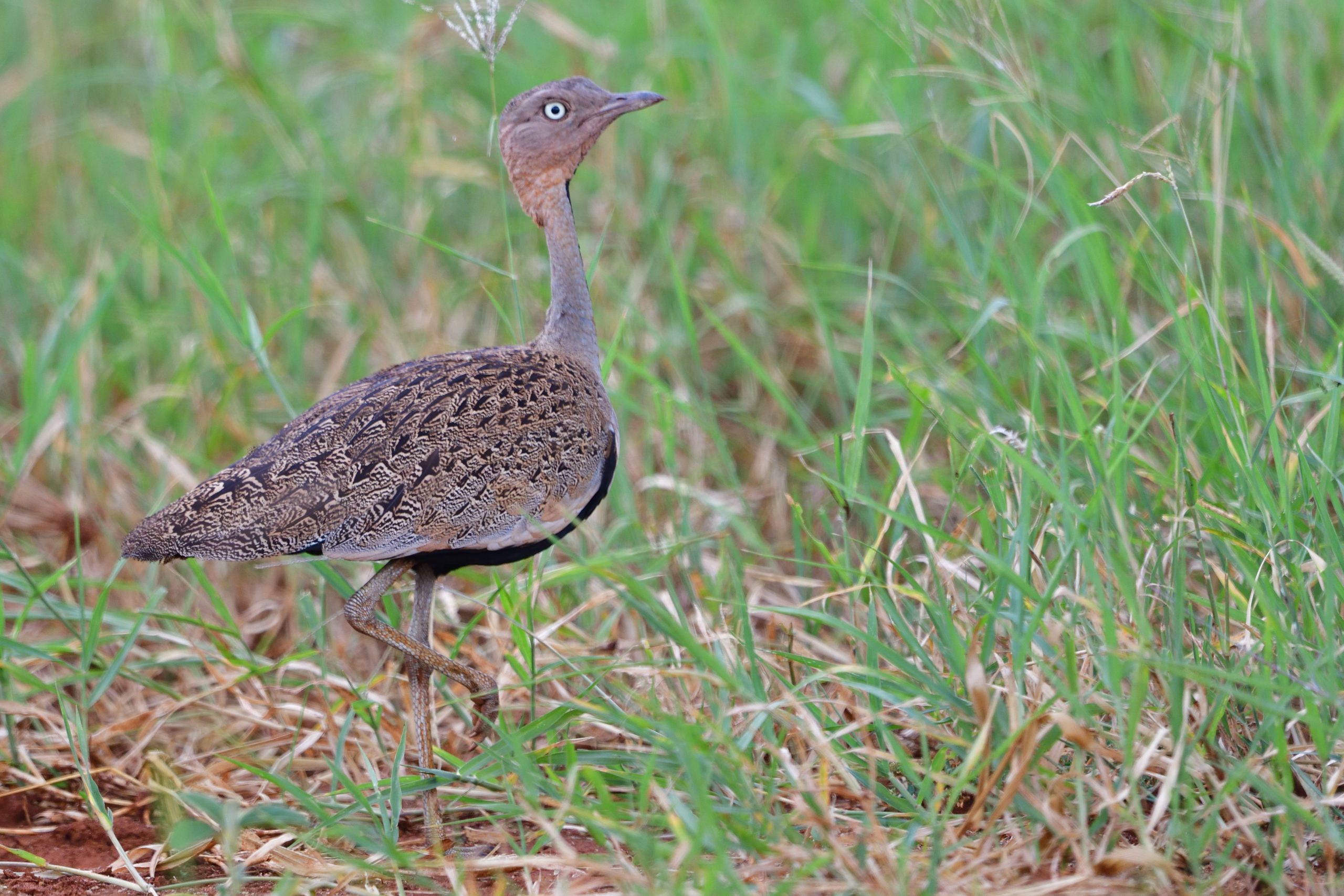
Buff-crested Bustard, Lophotis gindiana – Endemic to NE Africa
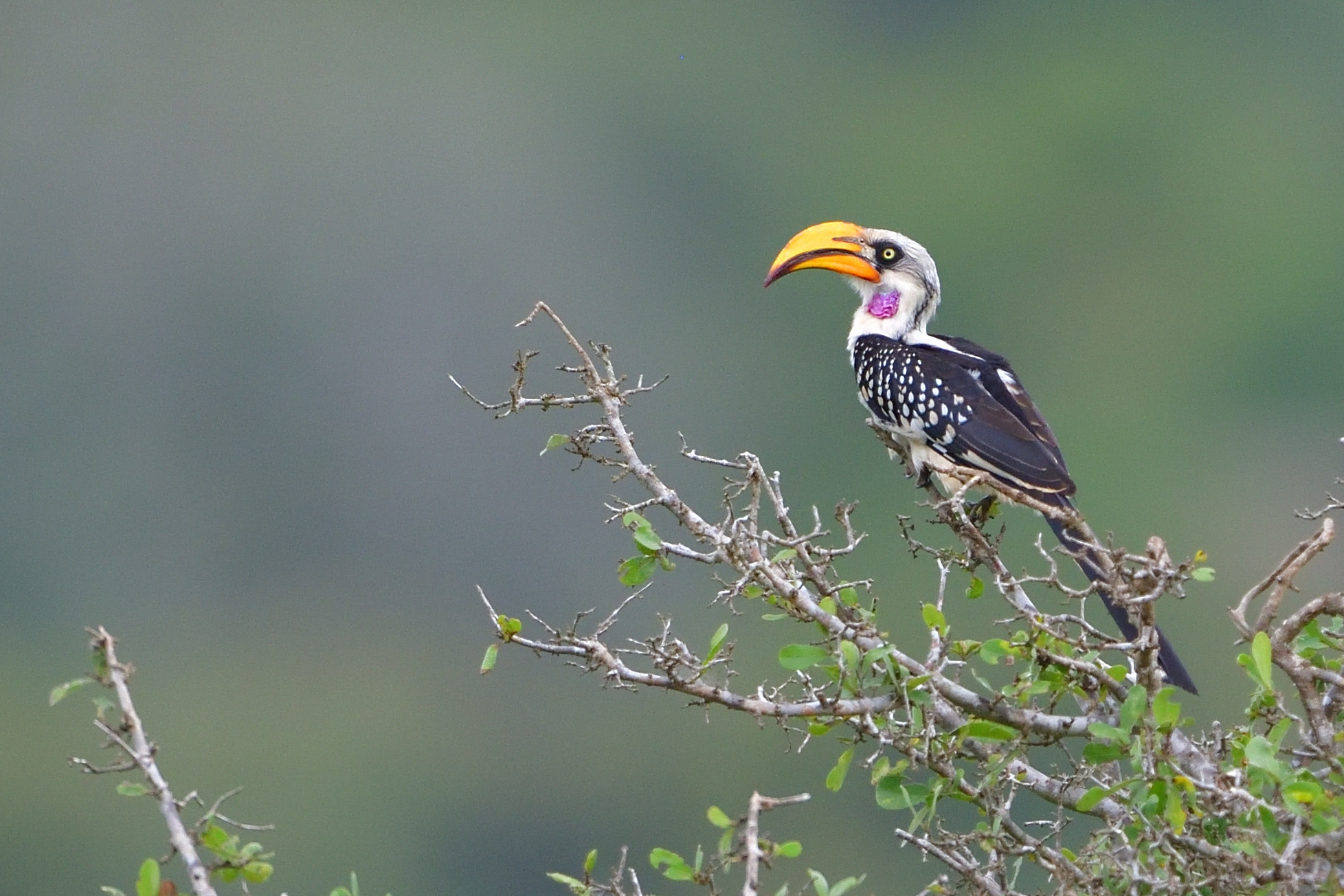
Eastern Yellow-billed Hornbill, Tockus flavirostris -Endemic to NE Africa
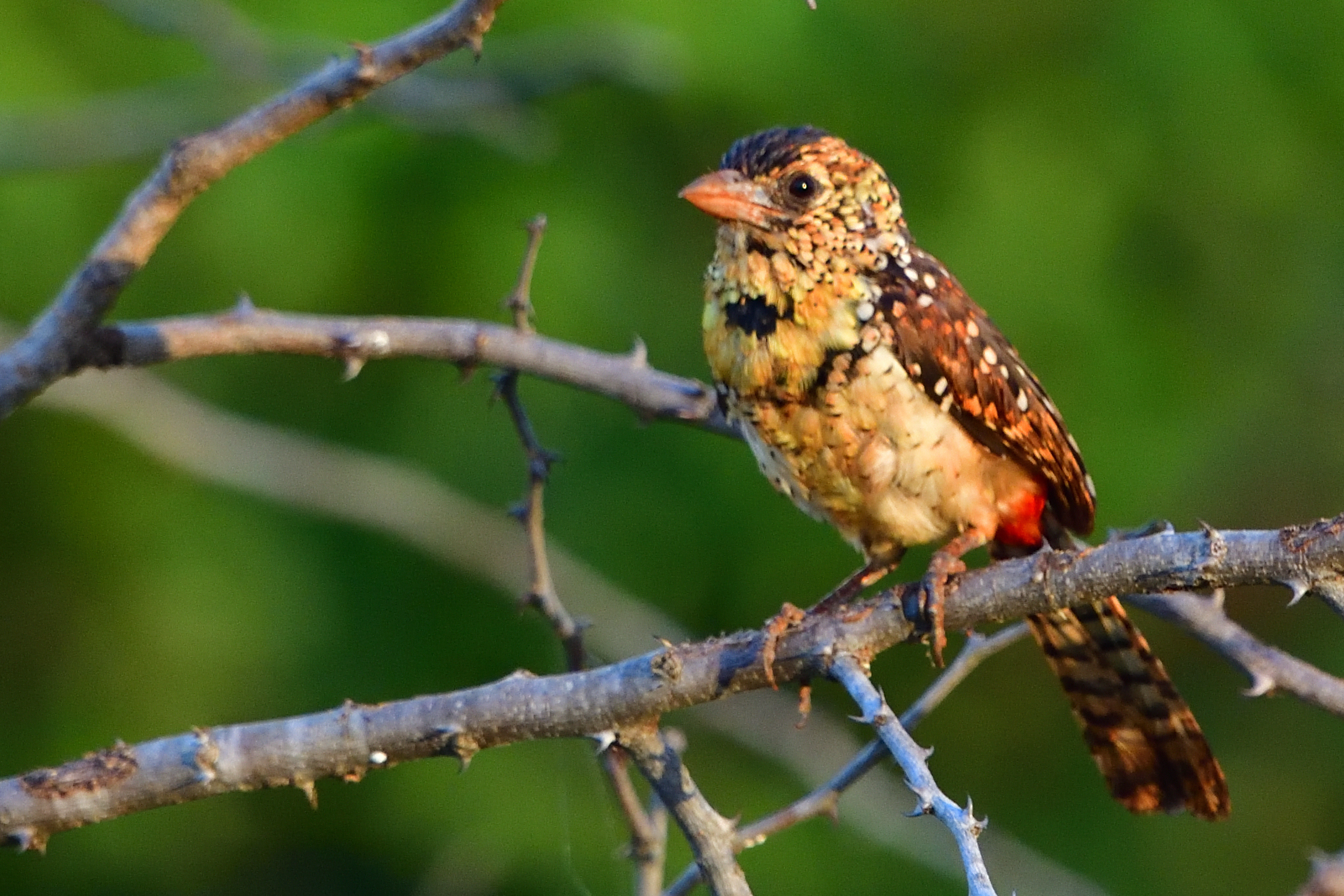
D´Arnaud´s Barbet, Trachyphonus erythrocephalus – Endemic to NE Africa
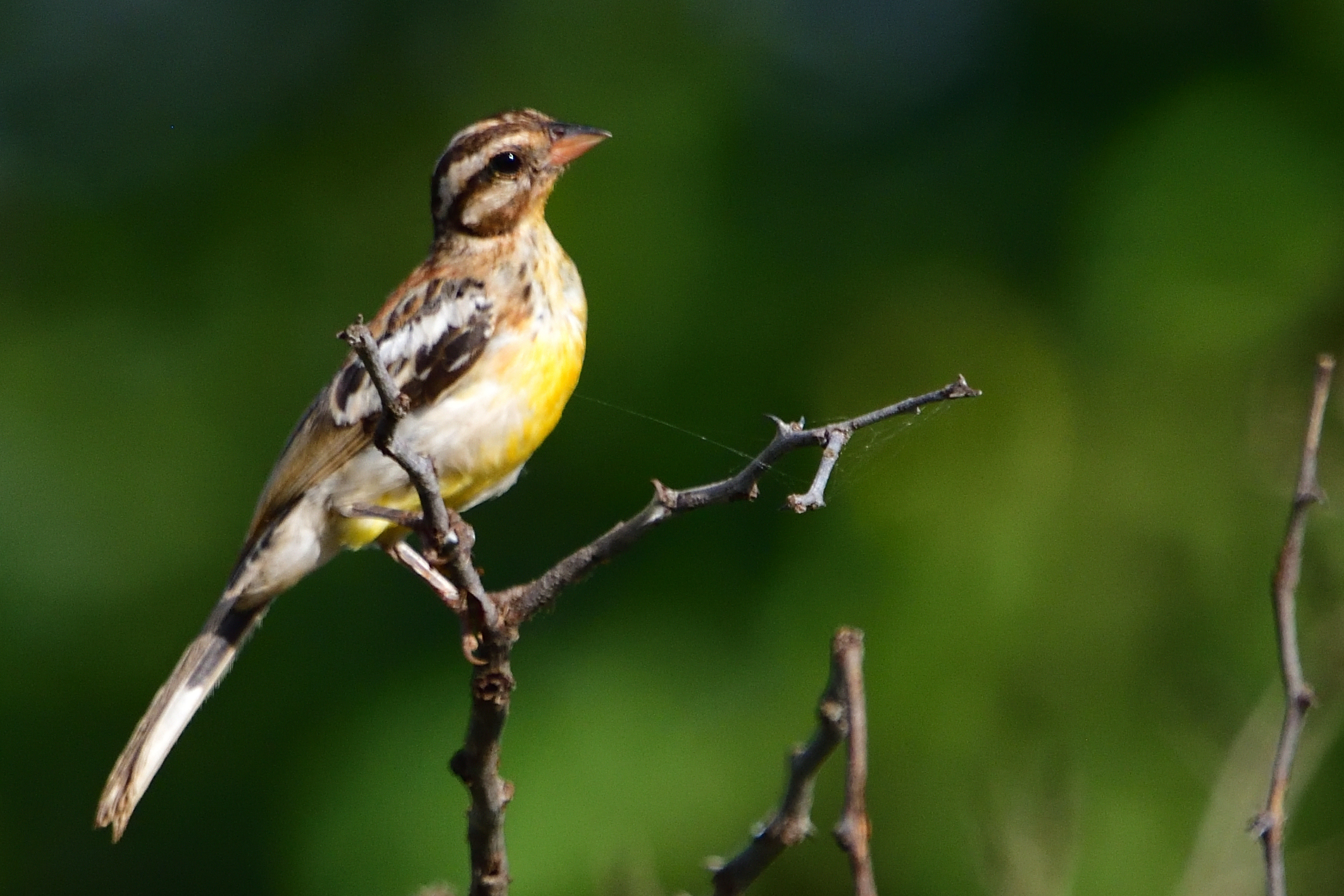
Somali Bunting, Emberiza poliopleura – Endemic to NE Africa
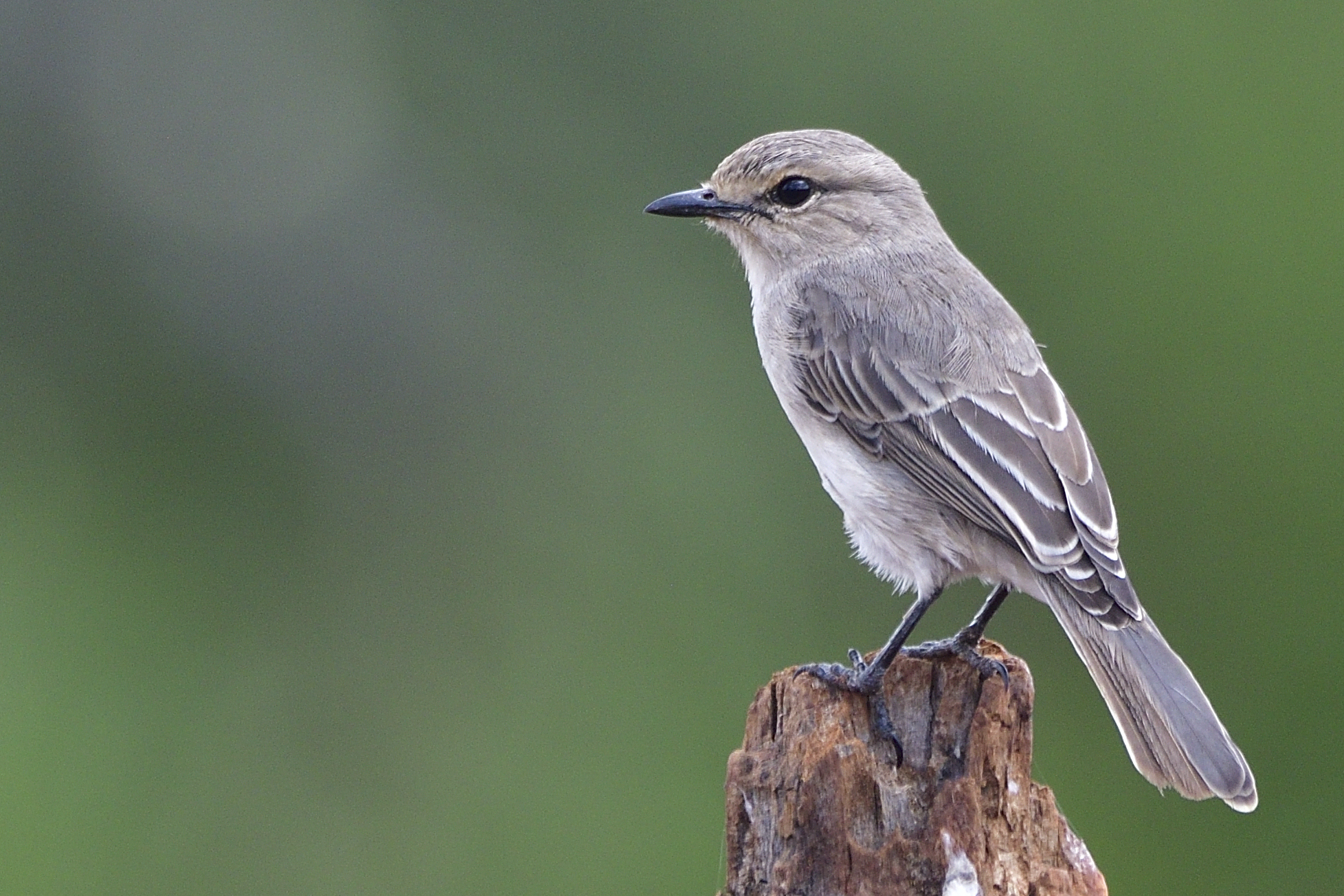
African Grey Flycatcher, Melaenornis microhynchus – Endemic to NE Africa
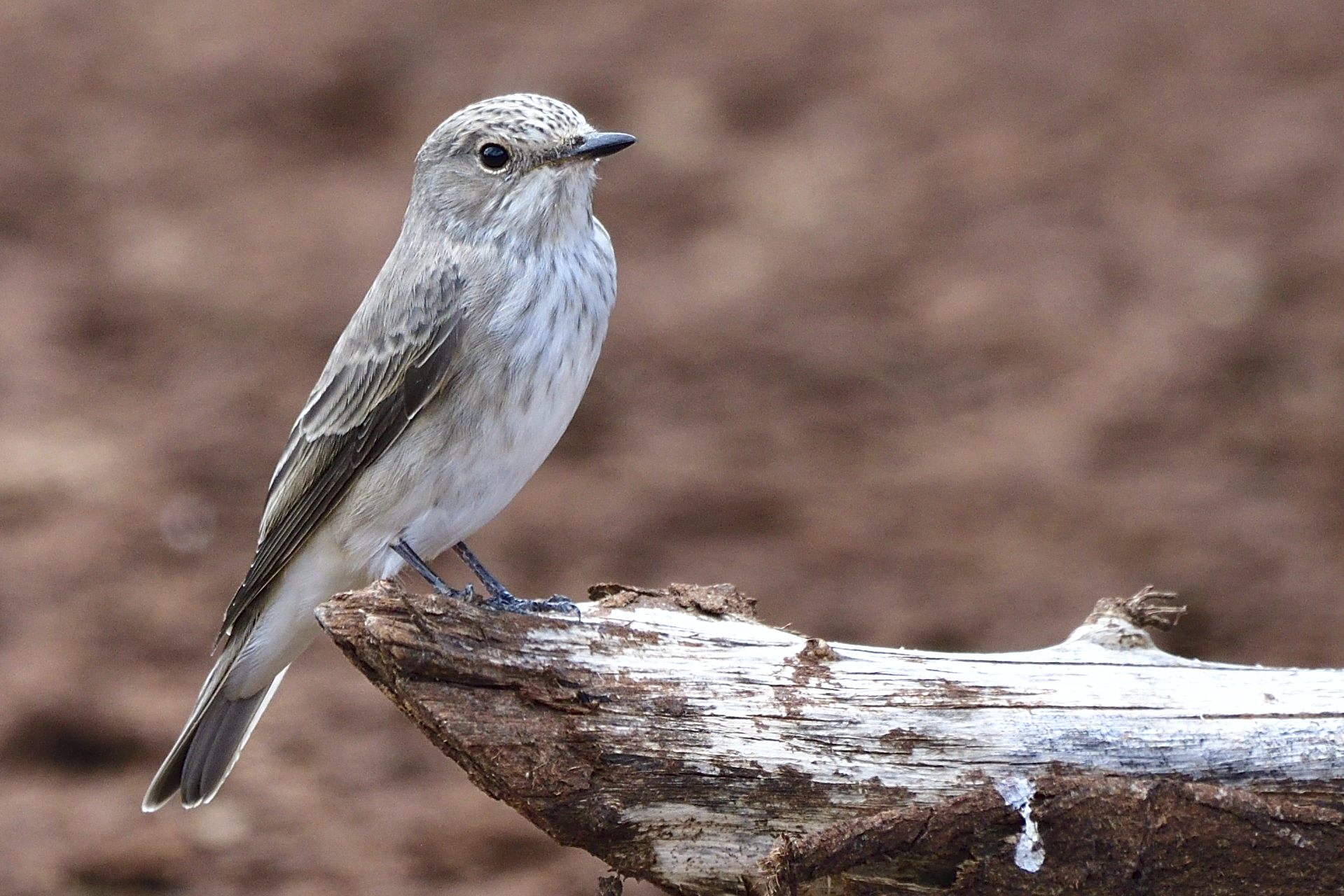
Spotted Flycatcher, Muscicapa striata
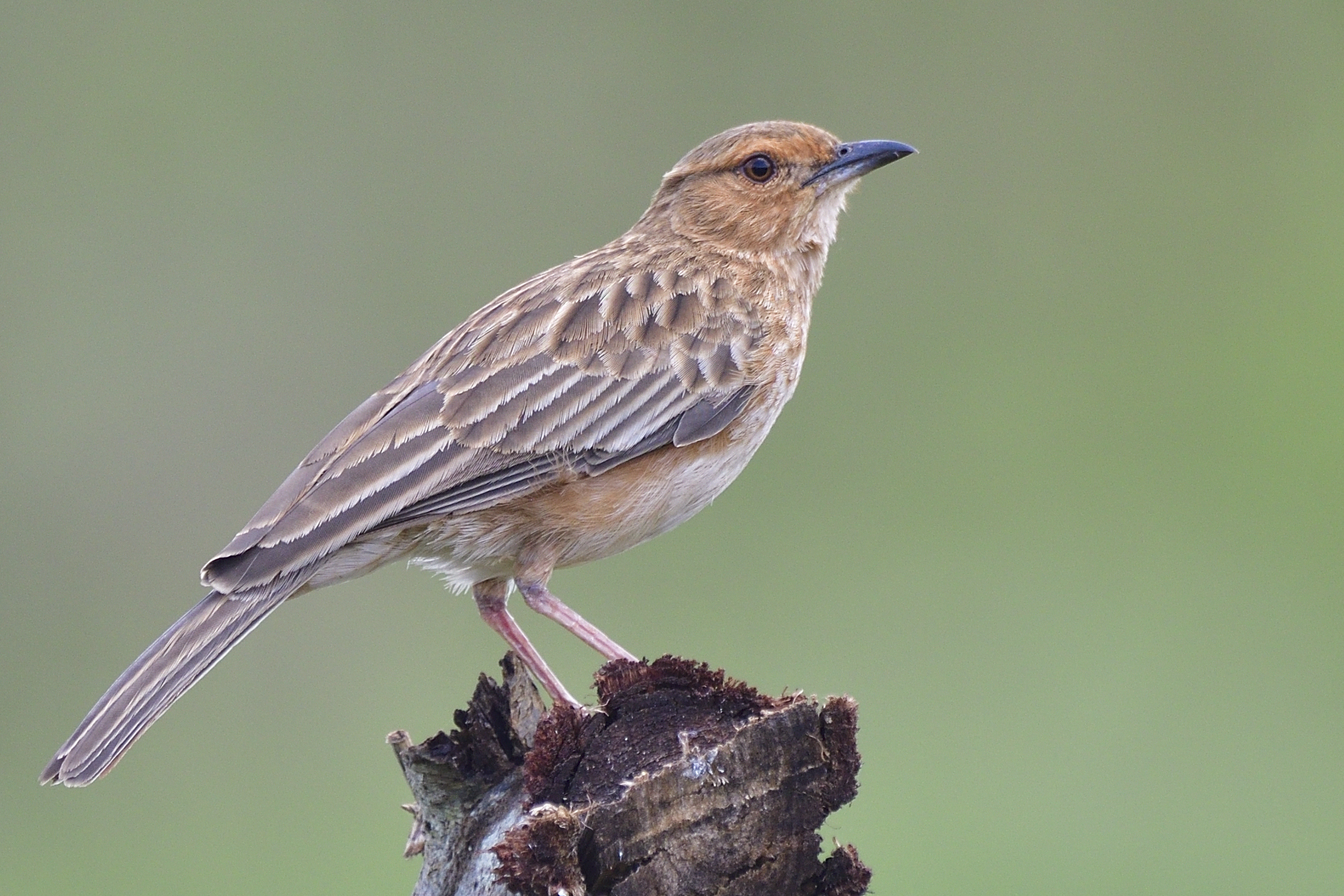
Pink-breasted Lark, Calendulauda poecilosterna – Endemic to NE Africa
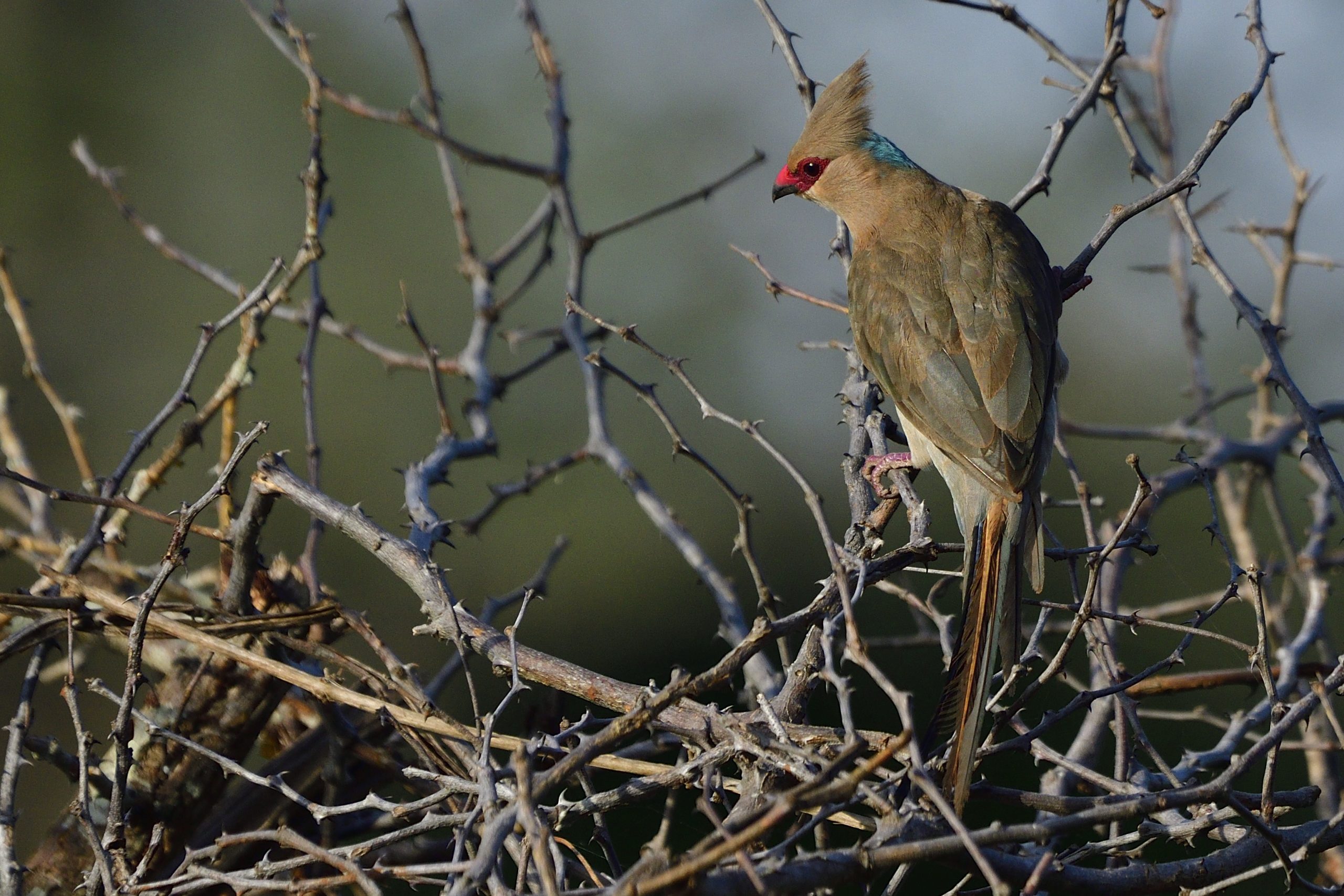
Blue-naped Mousebird, Urocolius macrourus
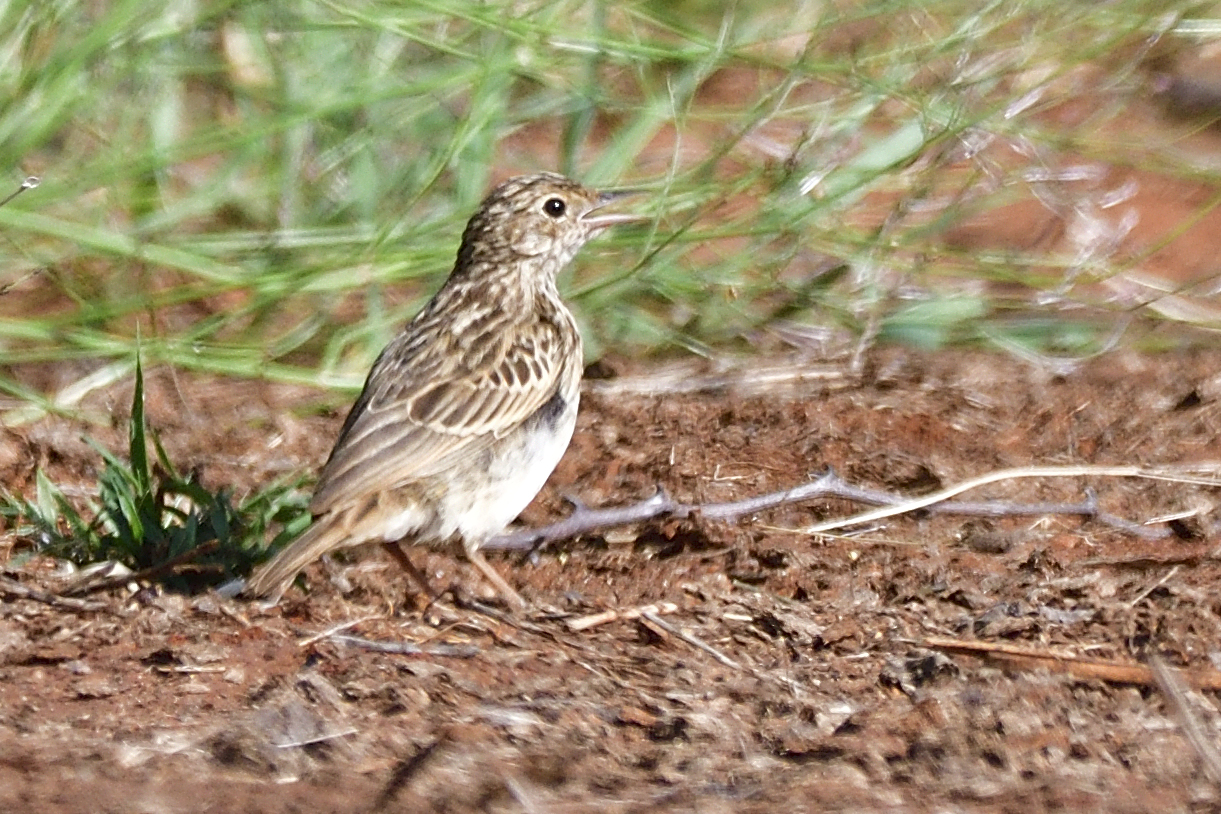
Bushveld Pipit, Anthus caffer – Photo Lifer
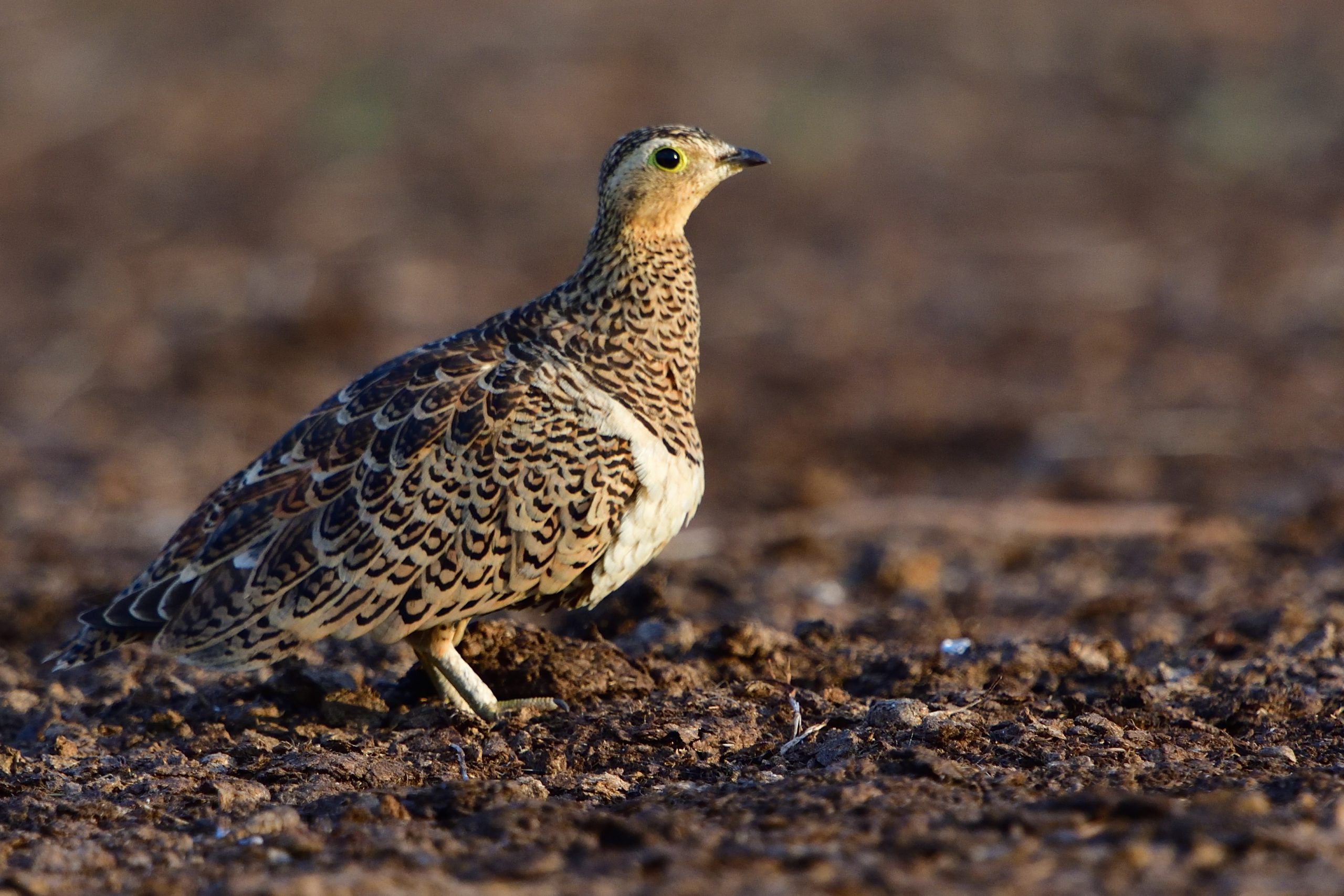
Black-faced Sandgrouse (Female), Pterocles decoratus – Endemic to NE Africa
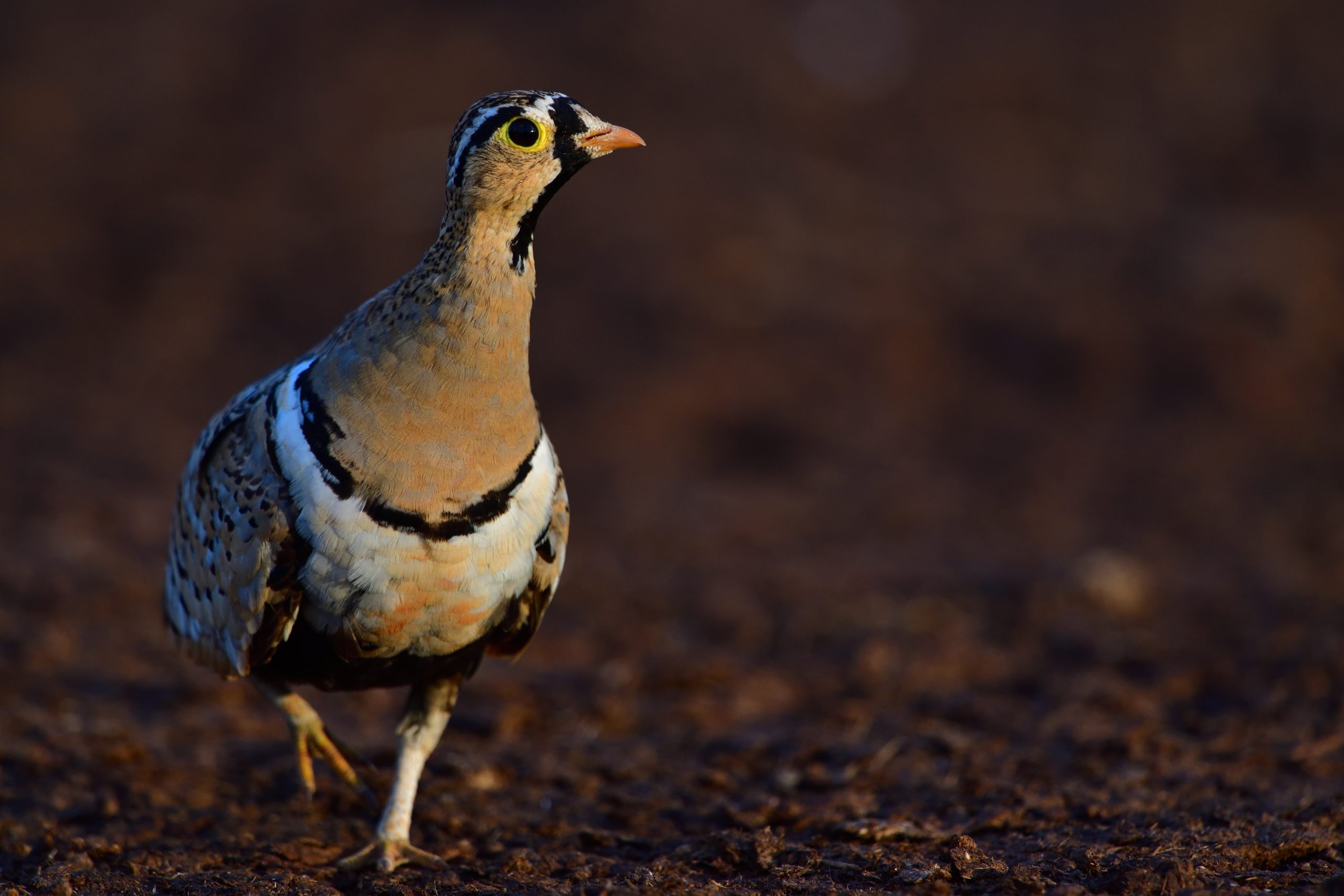
Black-faced Sandgrouse, Pterocles decoratus – Endemic to NE Africa
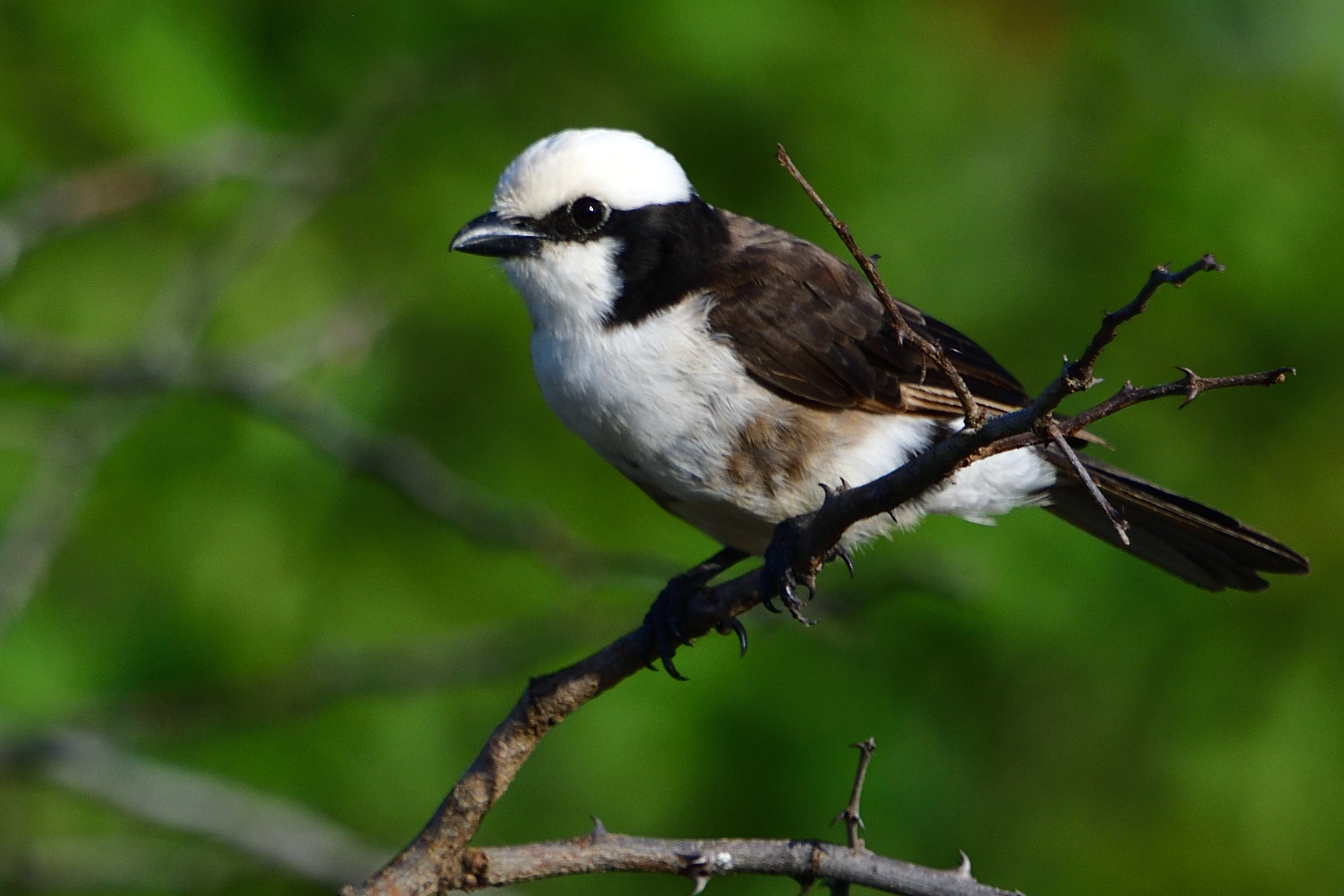
Northern White-crowned Shrike, Europhalus ruppelli – Endemic to NE Africa
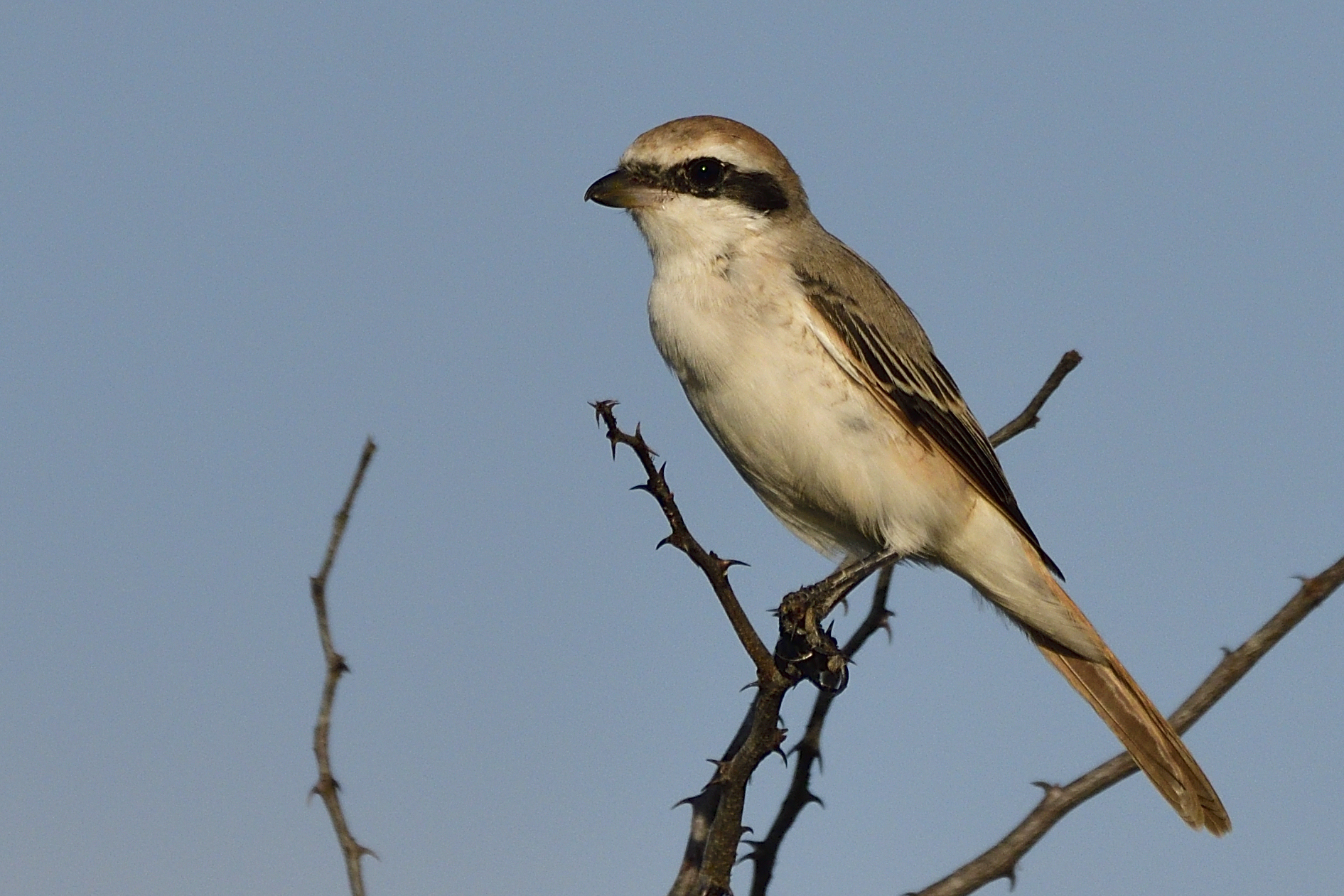
Red-tailed (Turkestan) Shrike, Lanius phoenicuroides
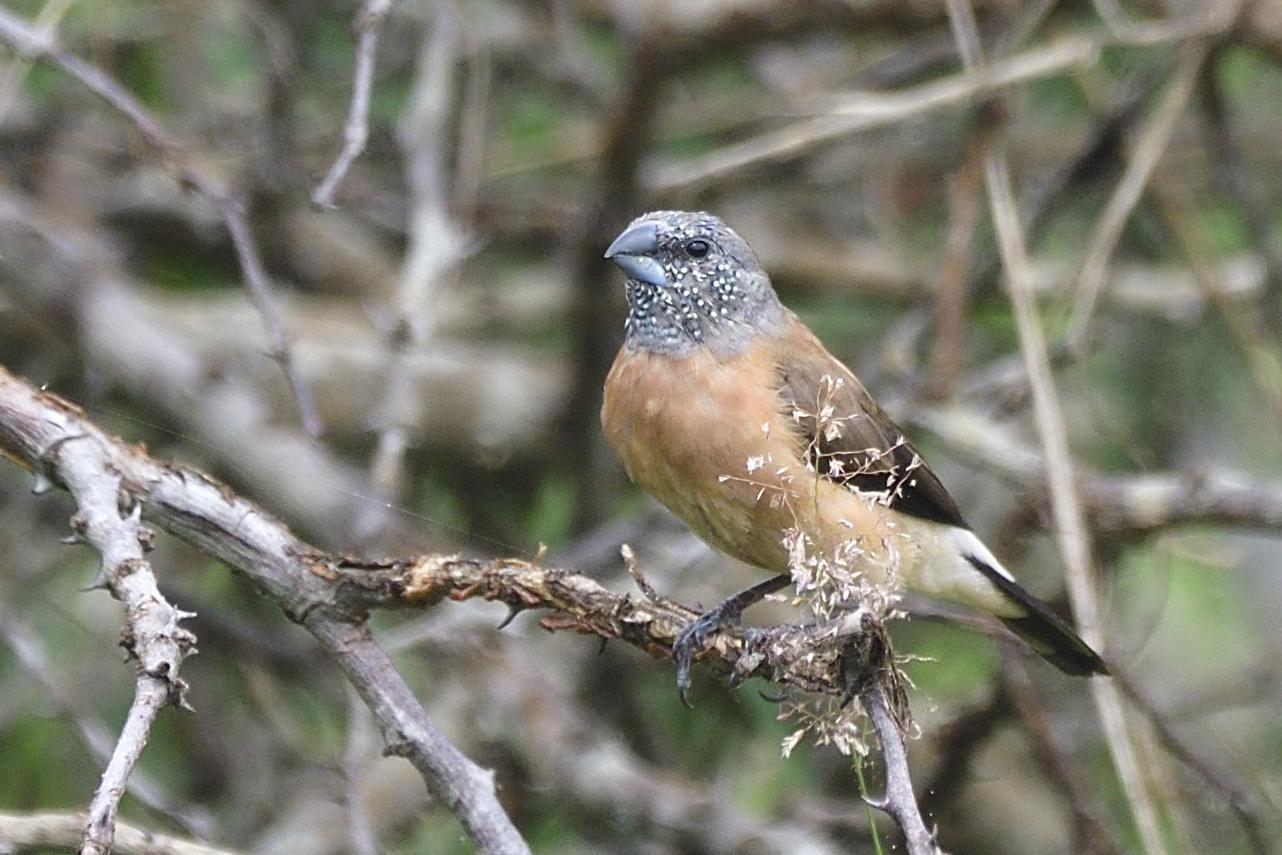
Grey-headed Silverbill, Odontospiza caniceps – Endemic to NE Africa
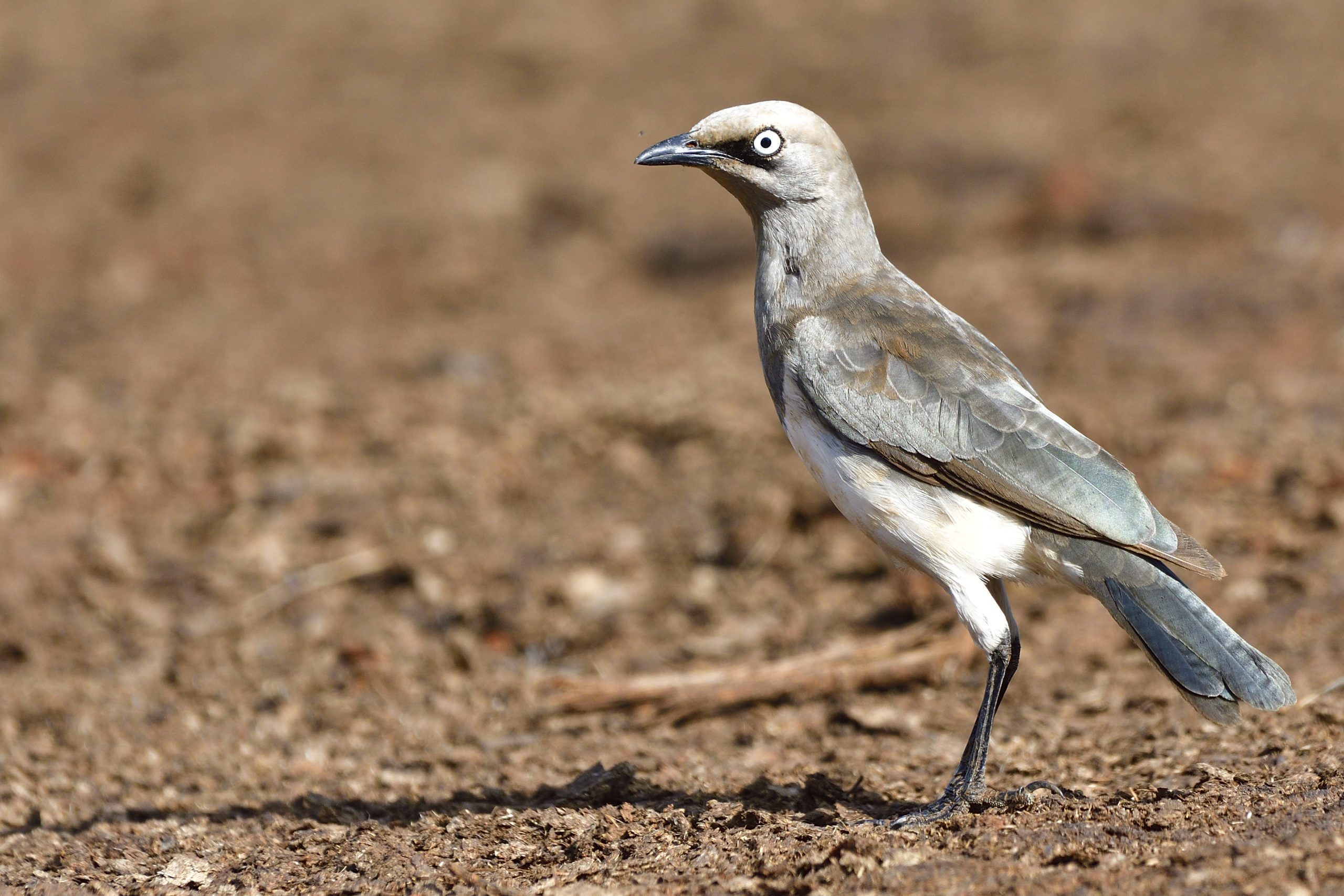
Fischer´s Starling, Lamprotornis fischeri – Endemic to NE Africa
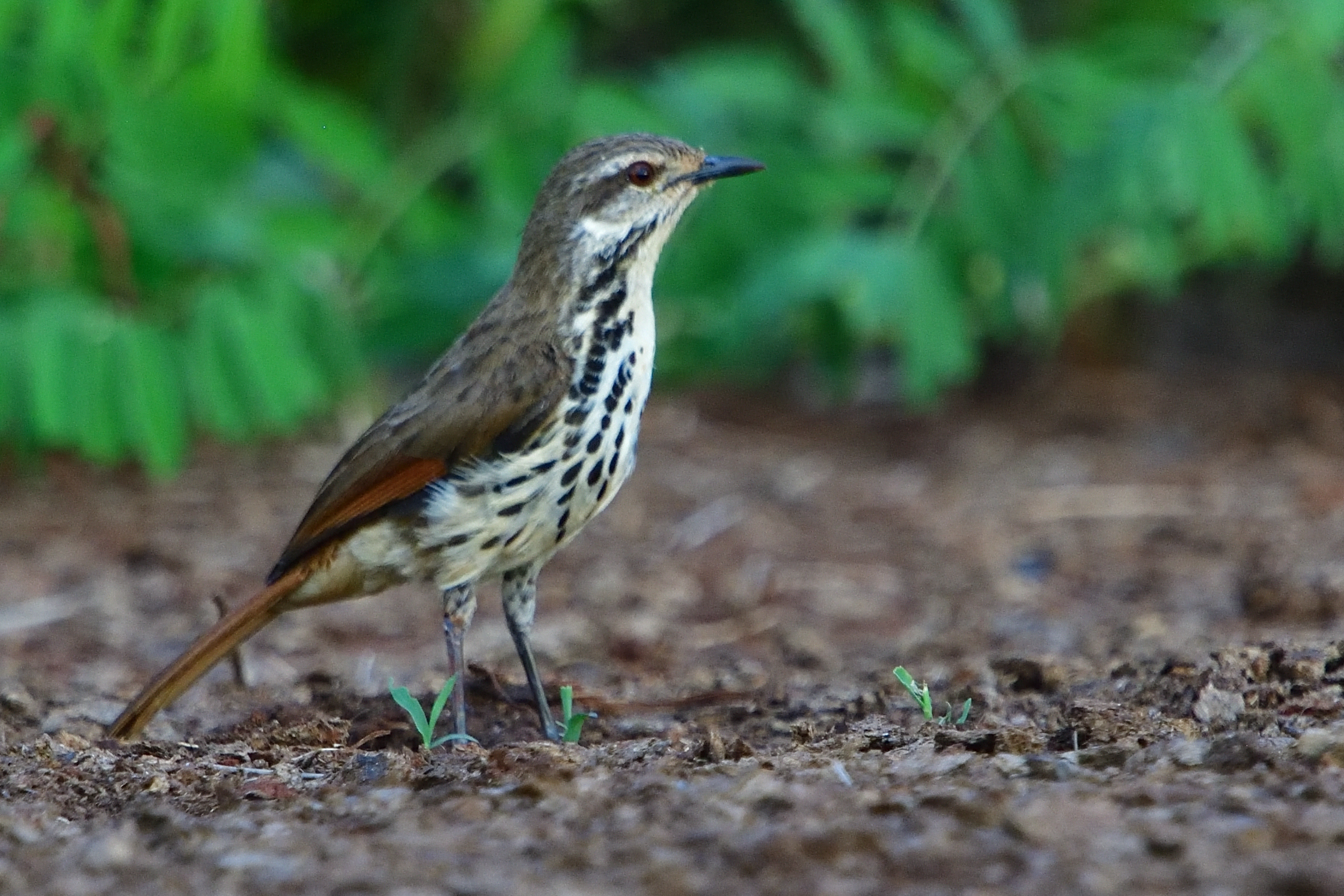
Spotted Palm Thrush, Cichladusa guttata – Endemic to NE Africa
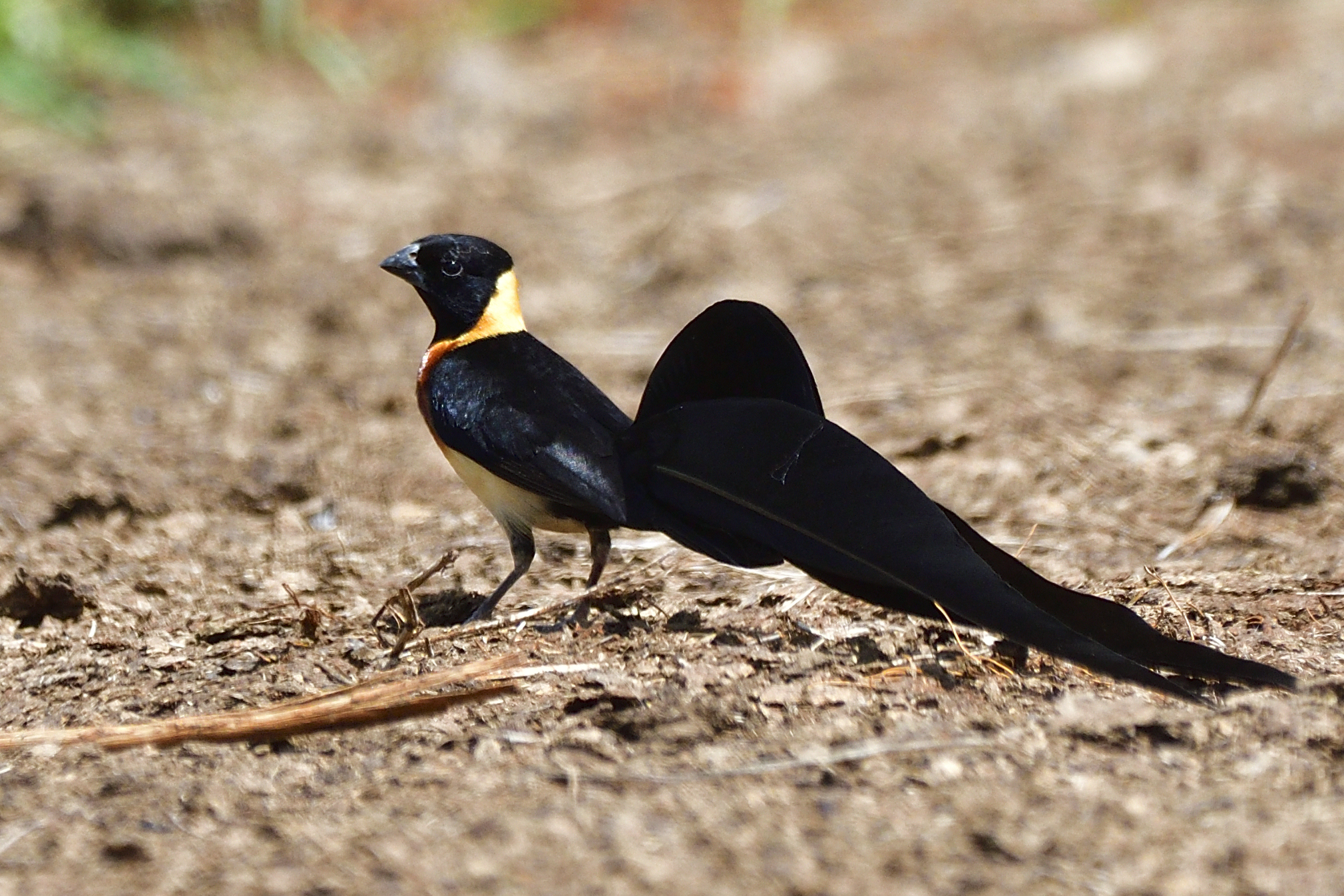
Long-tailed Paradise Whydah, Vudua paradisaea
Day 7, Wednesday, February 19: Mkomazi NP
We took off early and did the road towards the Kenyan border again. Nothing exiting except a pair of Hartlaub´s Bustards and a nicely perched Secretarybird. We returned to camp for breakfast and packing the camp. We were soon on our way again and decided to take the “long road home”. Some of the birds in the morning included: White-bellied Bustard, Martial Eagle, Brown Snake Eagle, White-backed, Lappet-faced and White-headed Vultures, Fischer´s Sparrowlark, Buff-crested Bustard, Bateleur, Verreaux´s Eagle-Owl and a pair of Secretarybirds. It was now almost noon and quite hot. We kept on spotting birds, but nothing exiting was added. We spent another 4 hours in the car and reached our base camp around 16:00. Time to set up camp for the last night. Nothing new in camp either.
Some pictures from Day 7
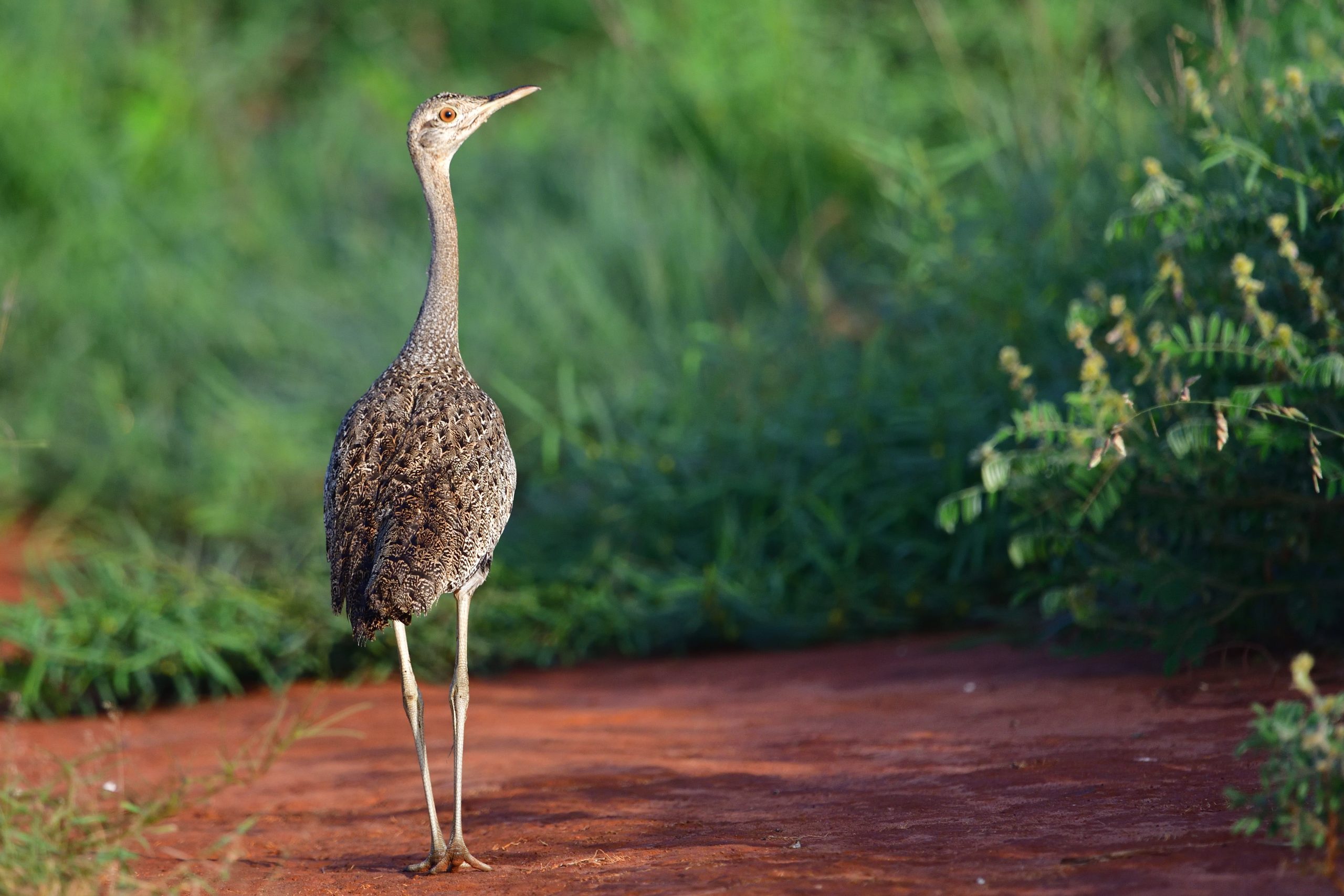
Hartlaub´s Bustard (Female), Lissotis hartlaubi – Endemic to NE Africa
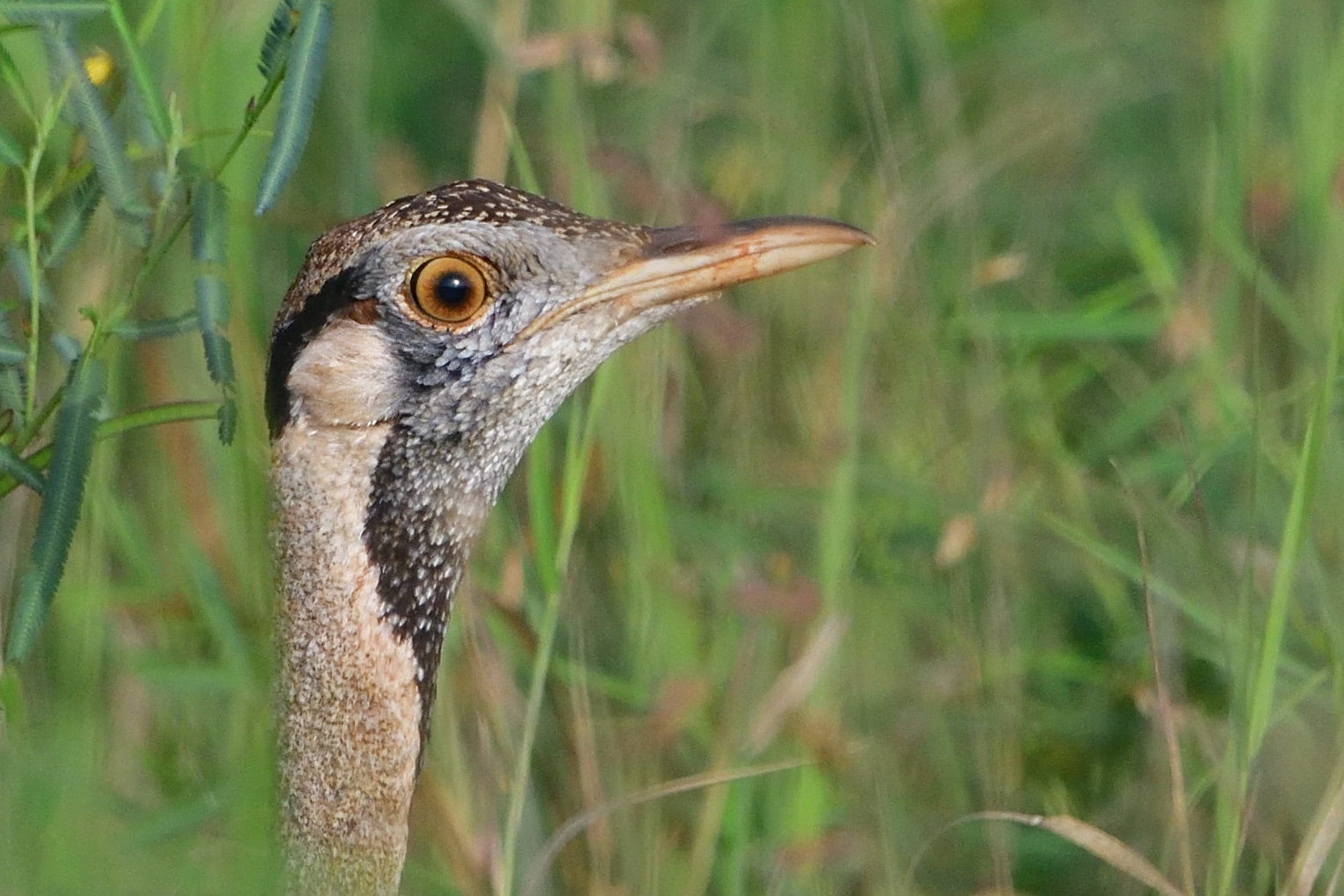
Hartlaub´s Bustard, Lissotis hartlaubi – Endemic to NE Africa

Secretarybird, Sagittarius serpentarius
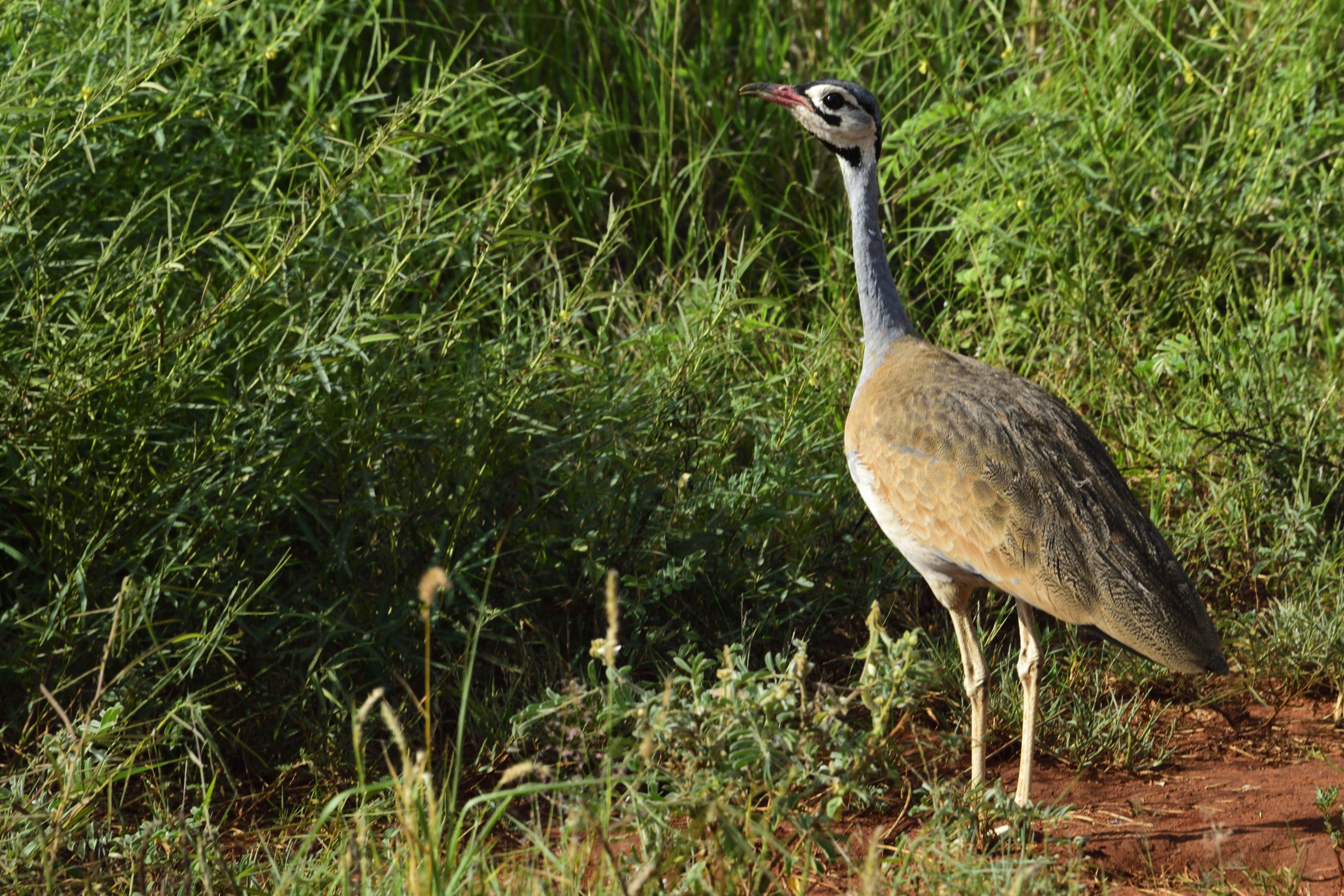
White-bellied Bustard, Eupodotis senegalensis
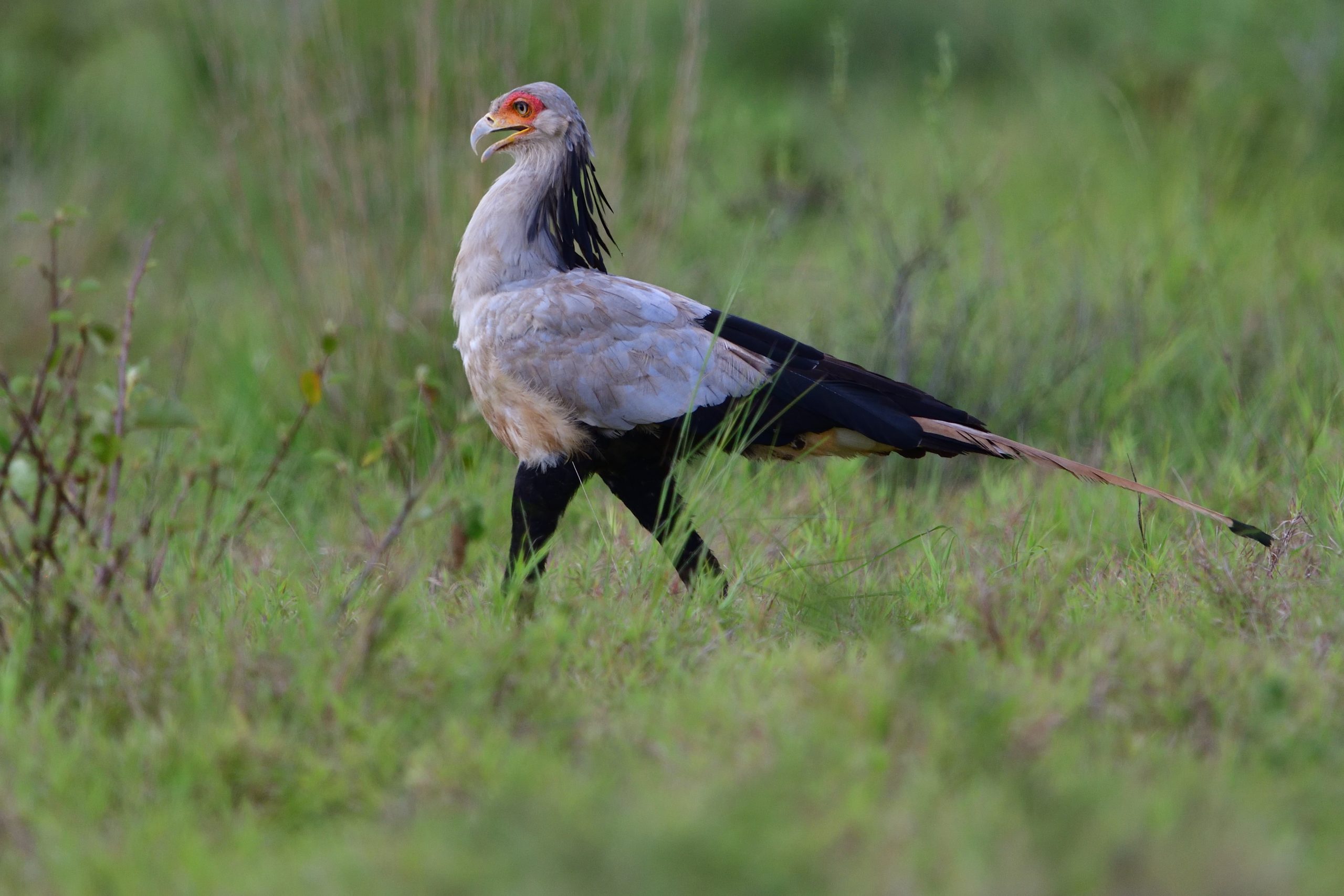
Secretarybird, Sagittarius serpentarius
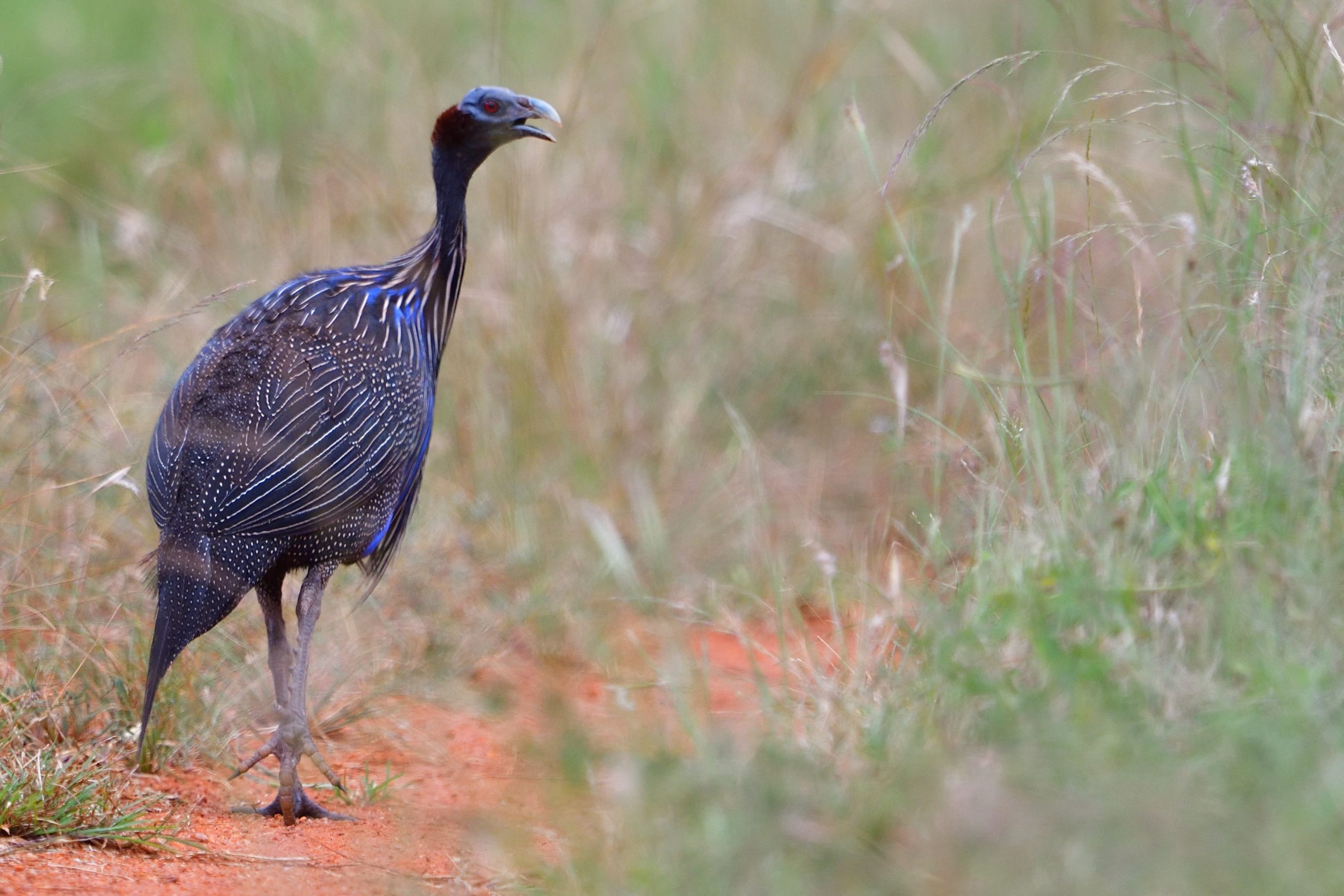
Vulturine Guineafowl, Acryllium vulturinum
Day 8, Thursday, February 20: Mkomazi NP – Kiligolf
I had to pick up Selvine from the airport early afternoon, so the only thing to do was to pack camp in the morning. Everything went fine on the road. However; Selvine struggled through immigration, so I had to wait for a while, but in the end we arrived safe at home. All in all, we registered 196 species on the trip. Dr Jasson´s students reccorded 209. Of the 196 we recorded, 59 were not recorded by the students, so the potential is there. I got good shots of about 75, so much work to be done. I am planning a new trip at another time of the year, but due to the Covid-19 virus, I do not feel like going anywhere for a while. In other words this will be my last report for the foreseeable future. All my guests scheduled for April, May and June have cancelled, so what to do?